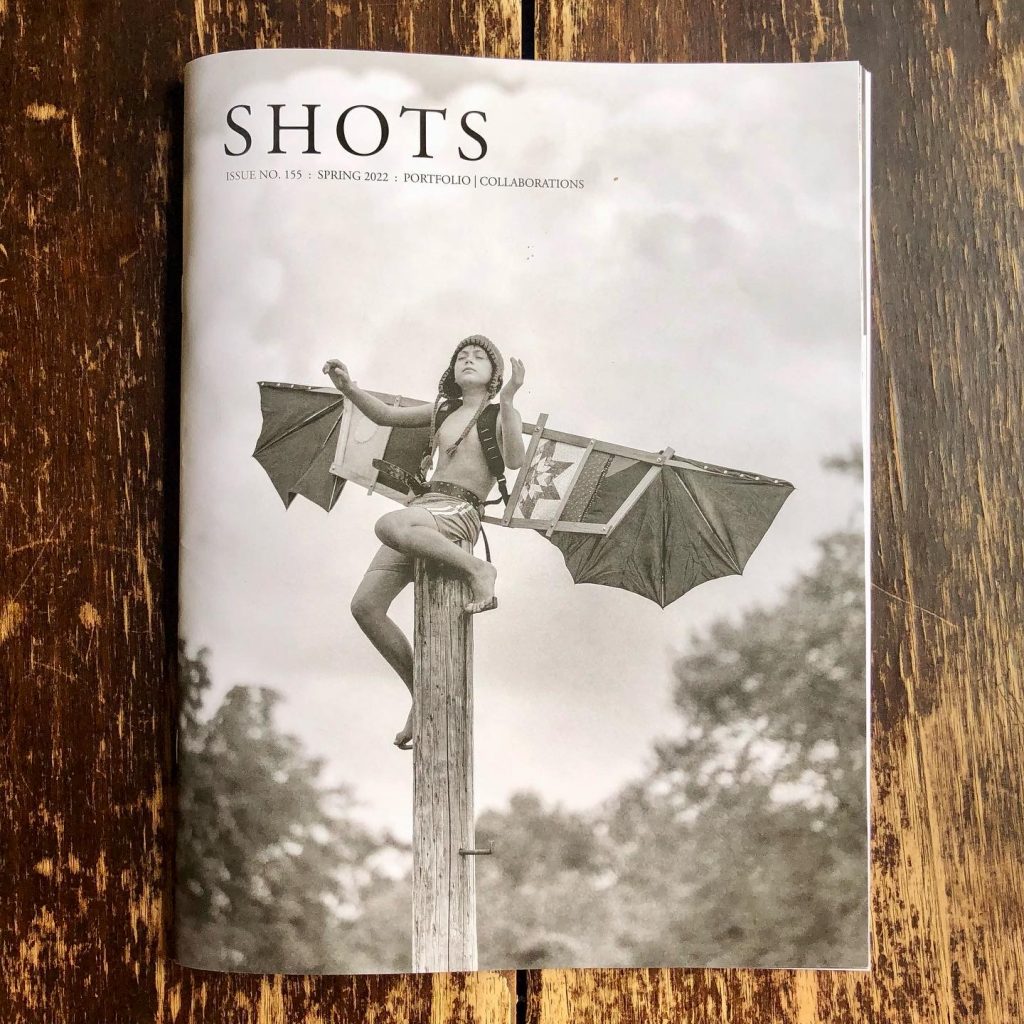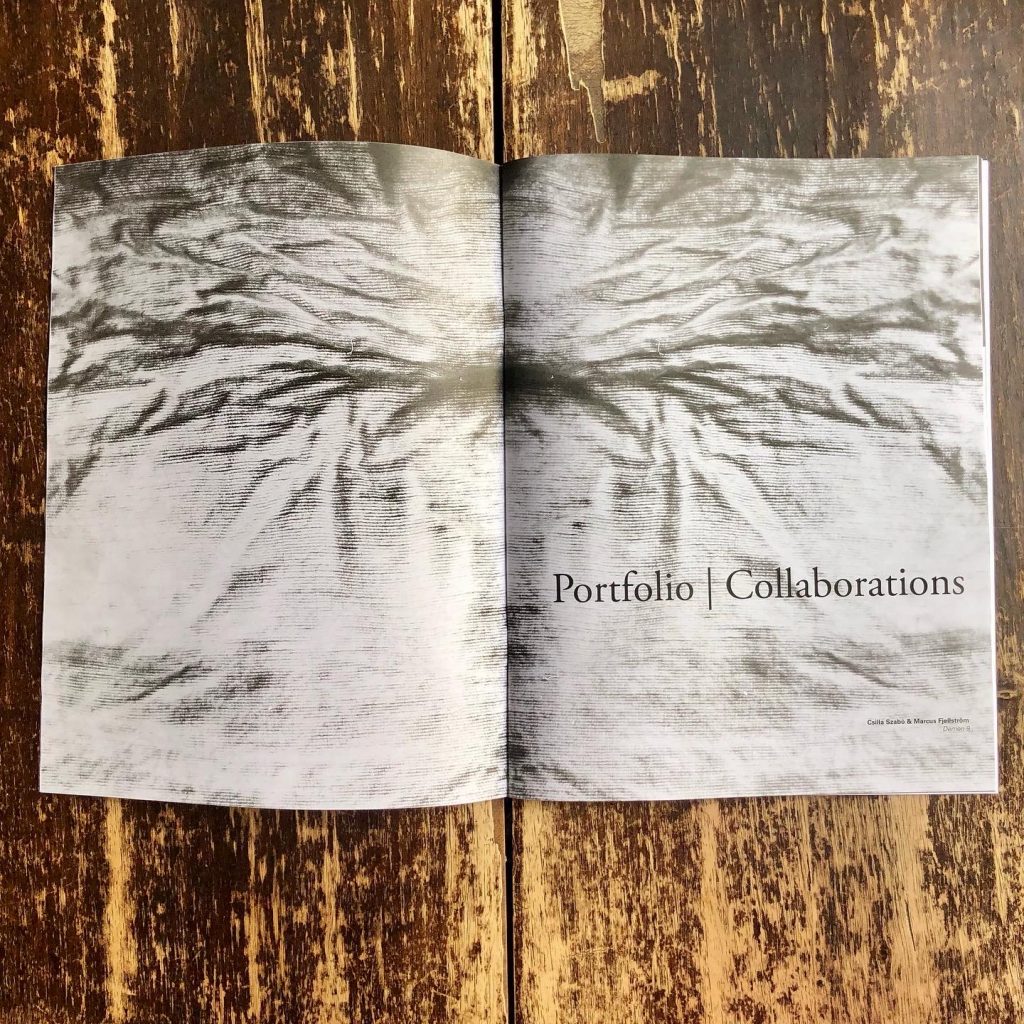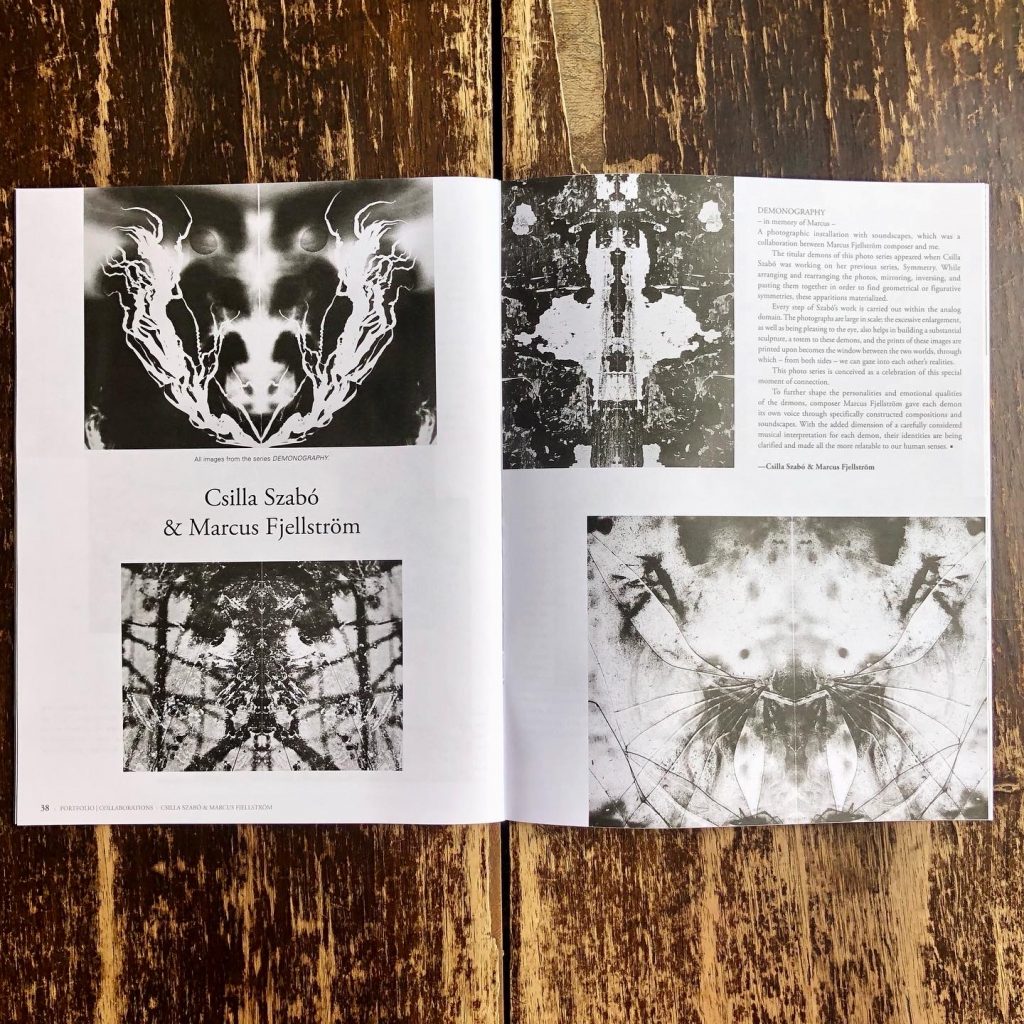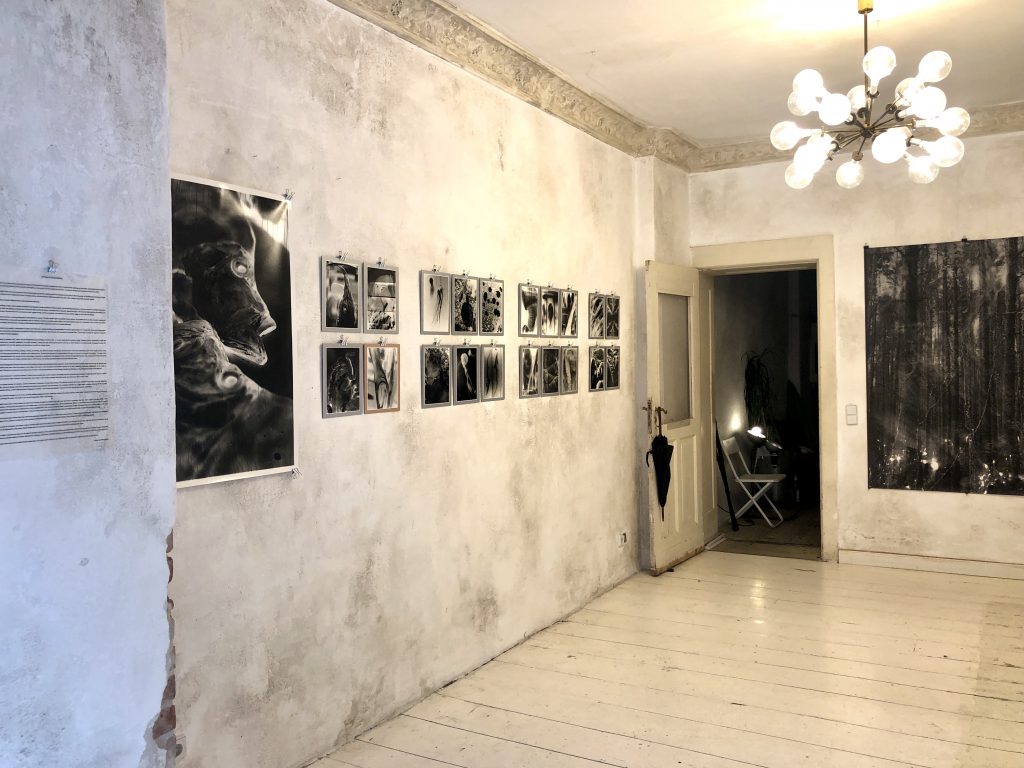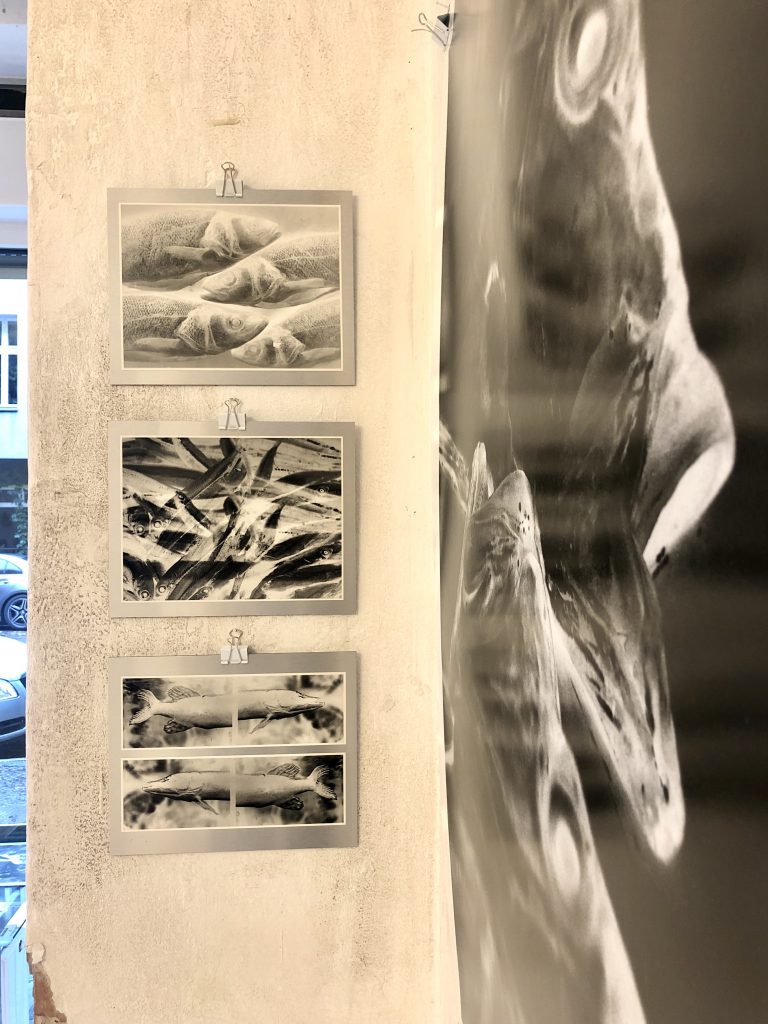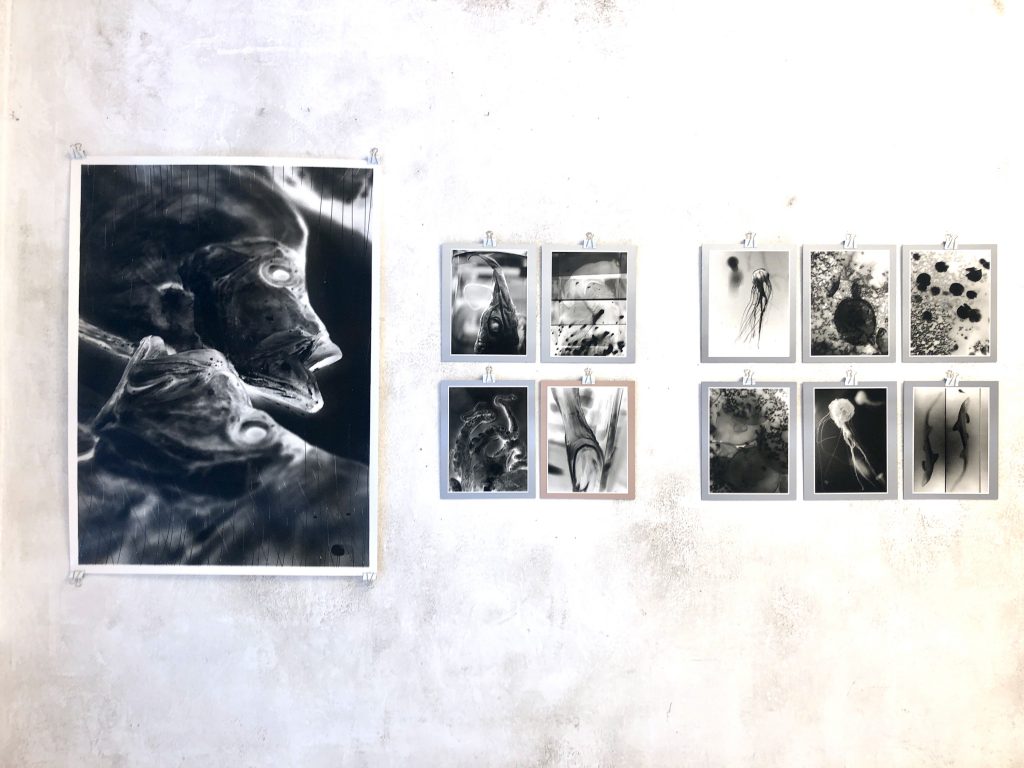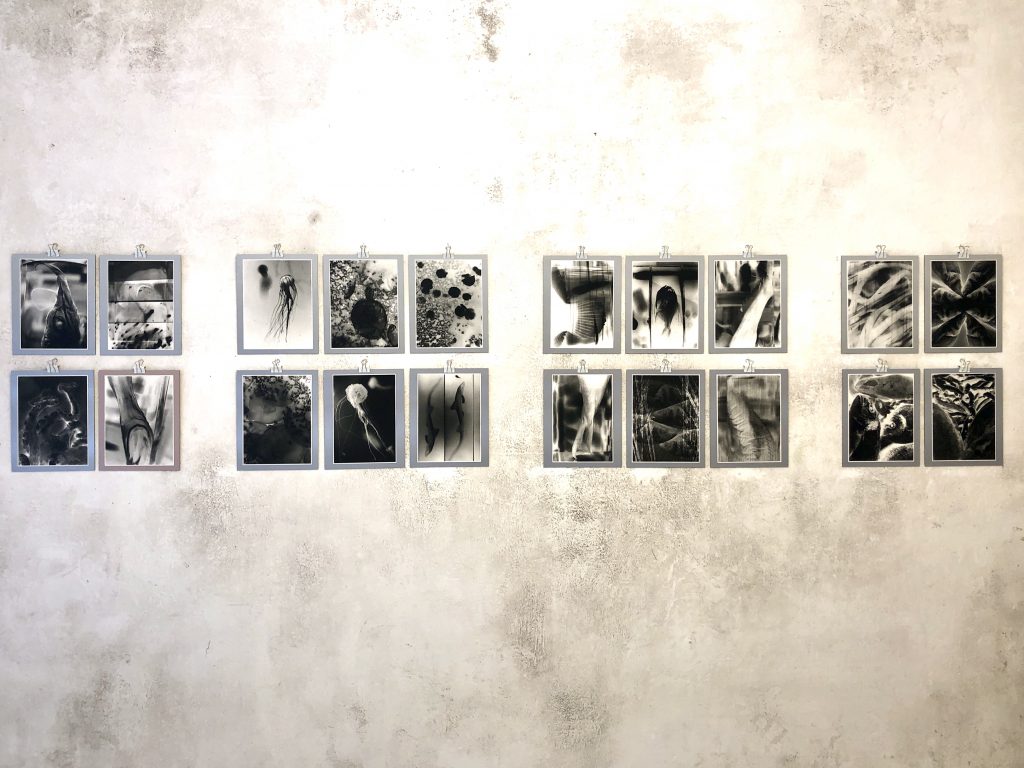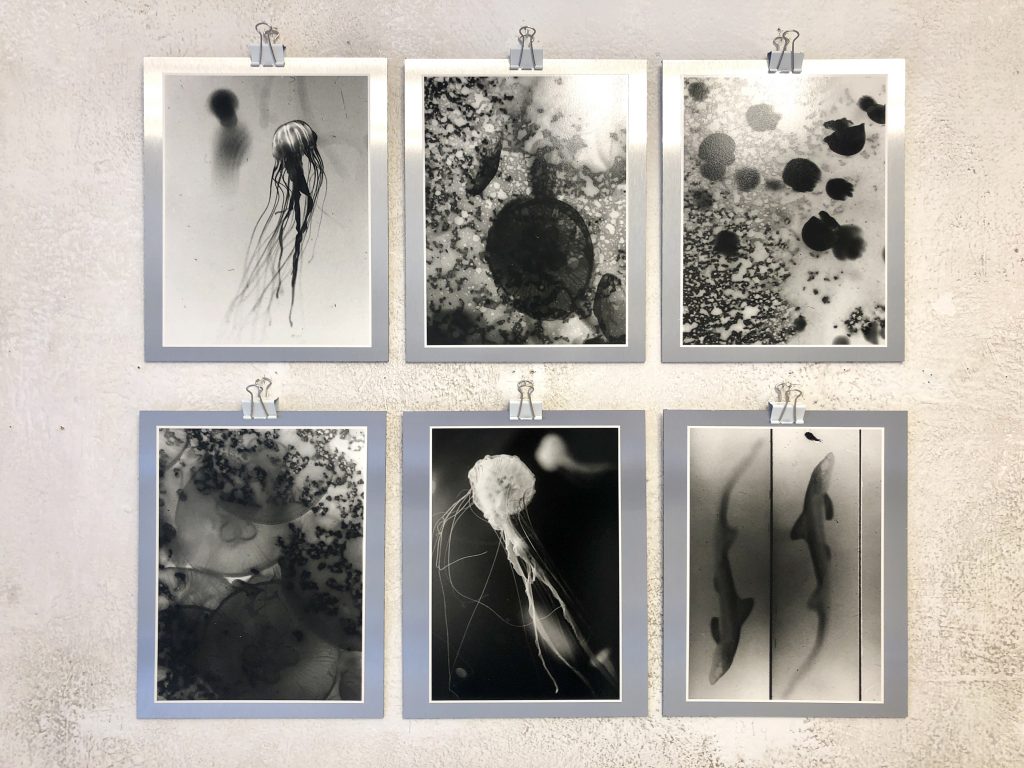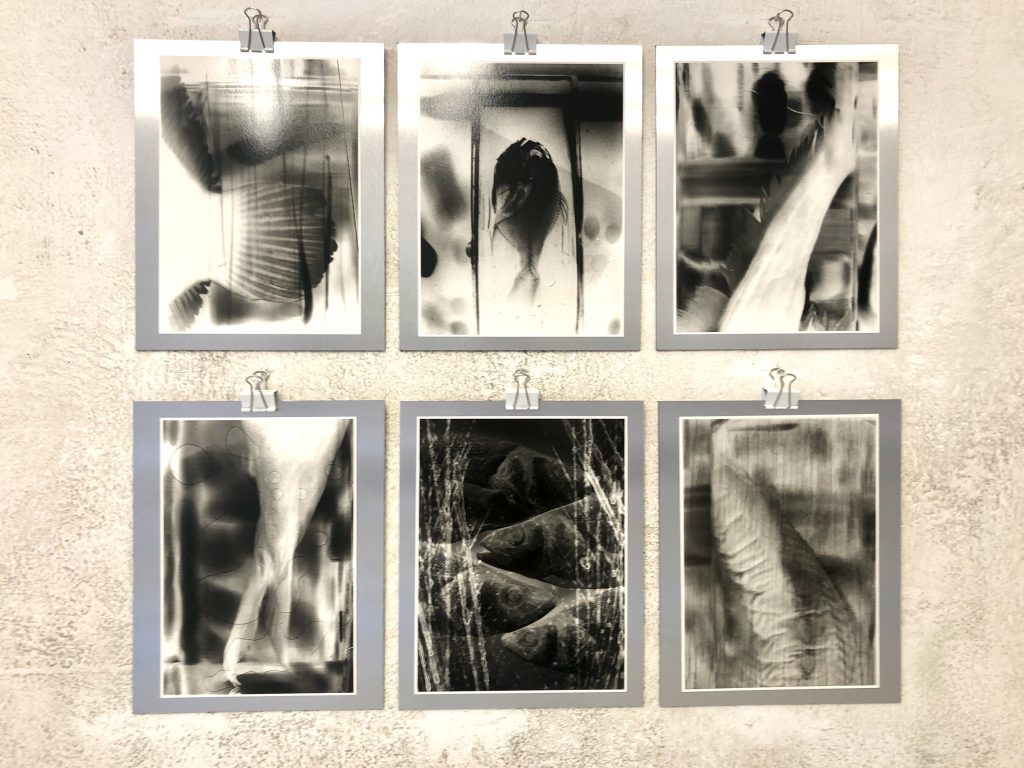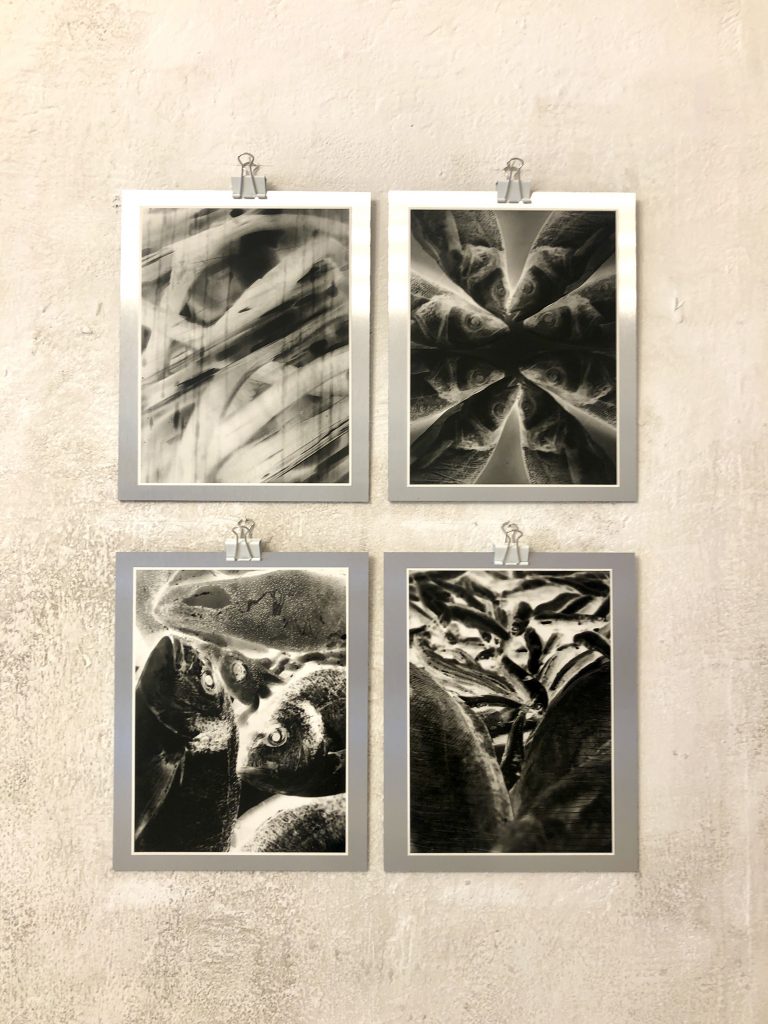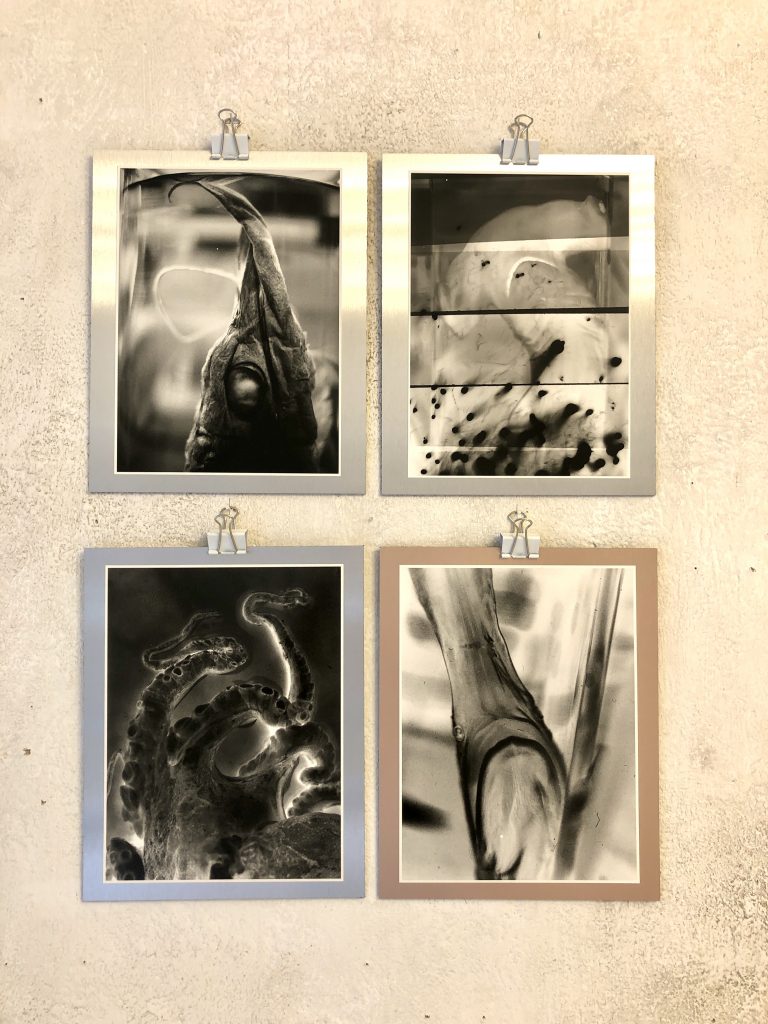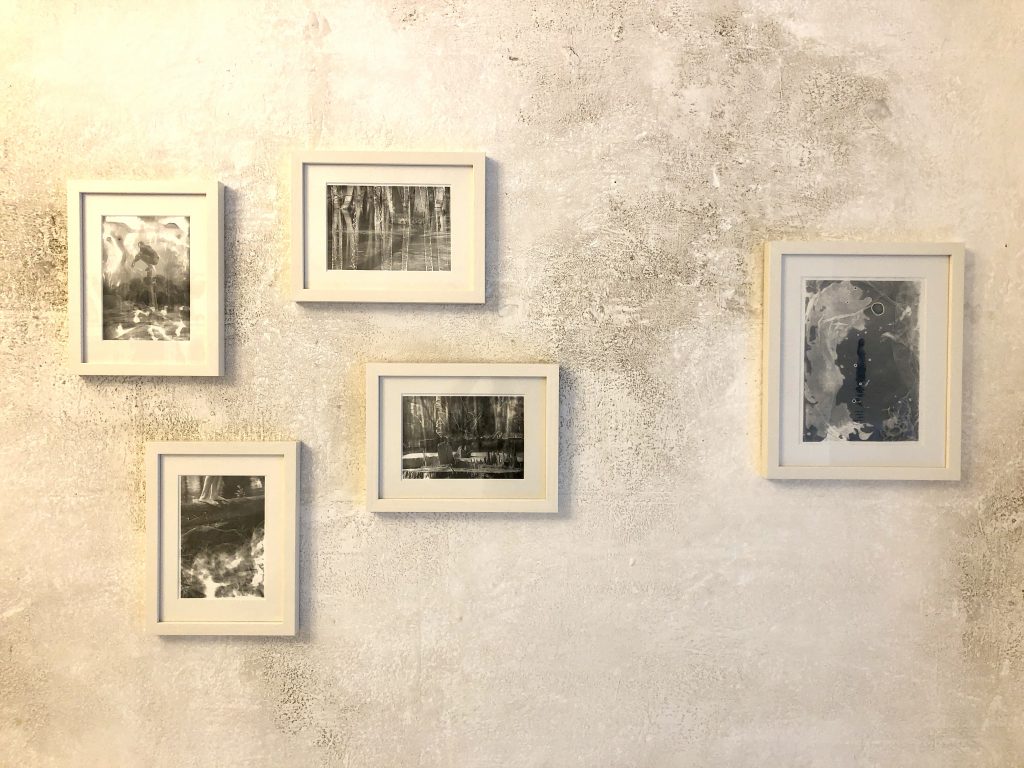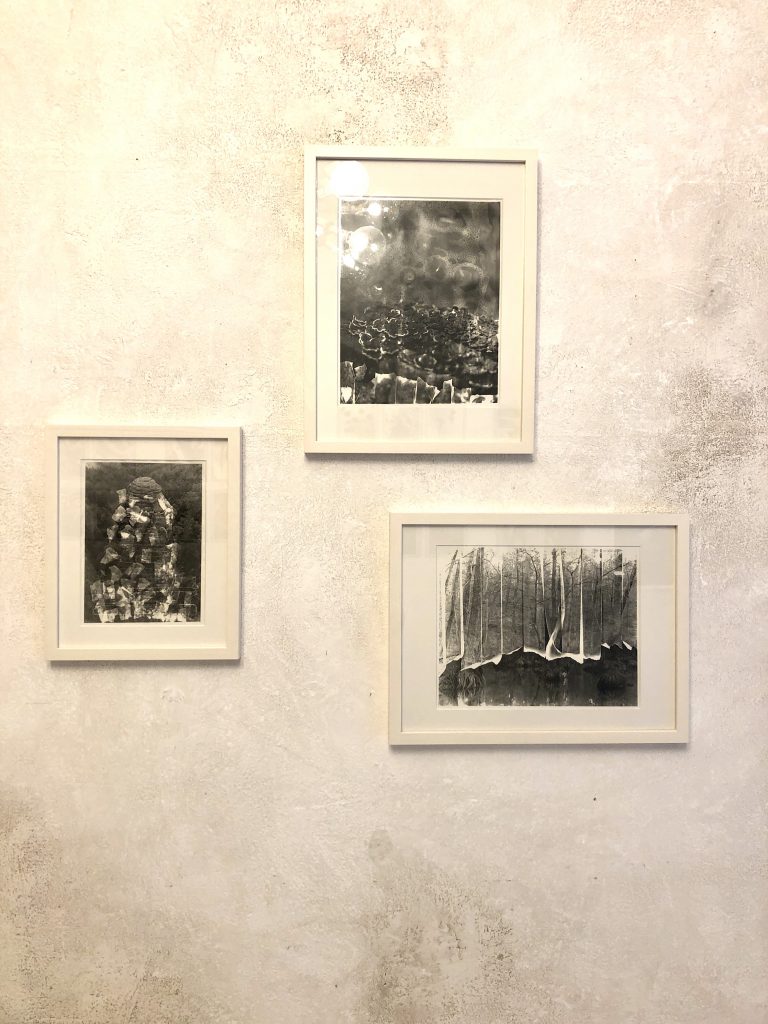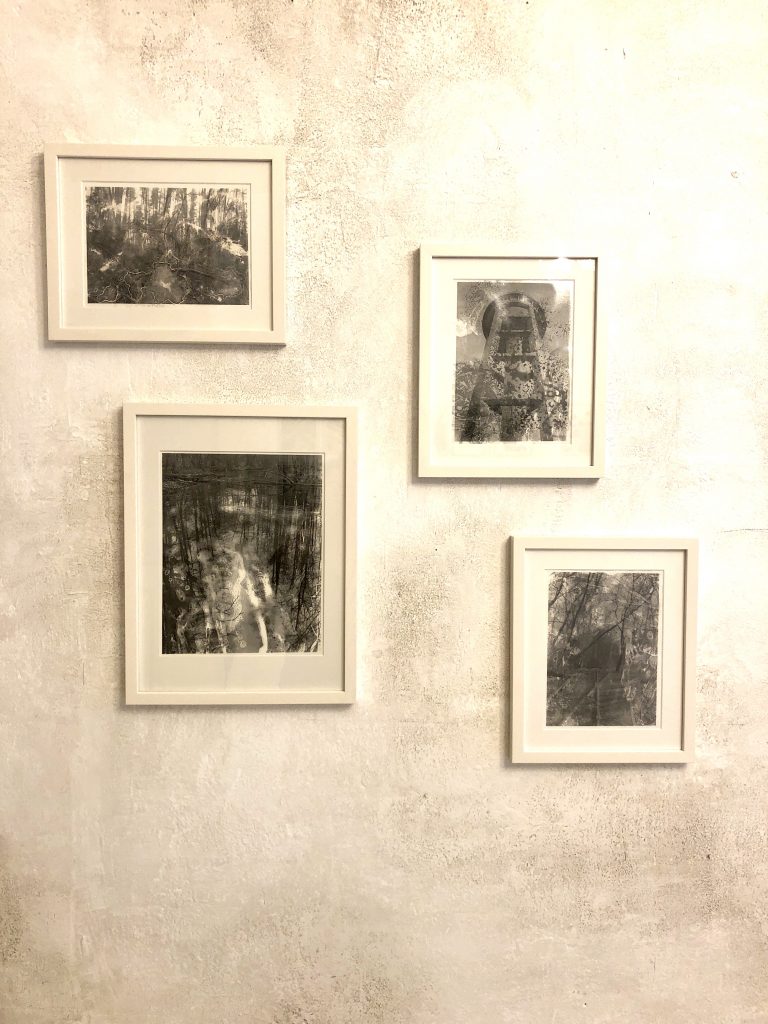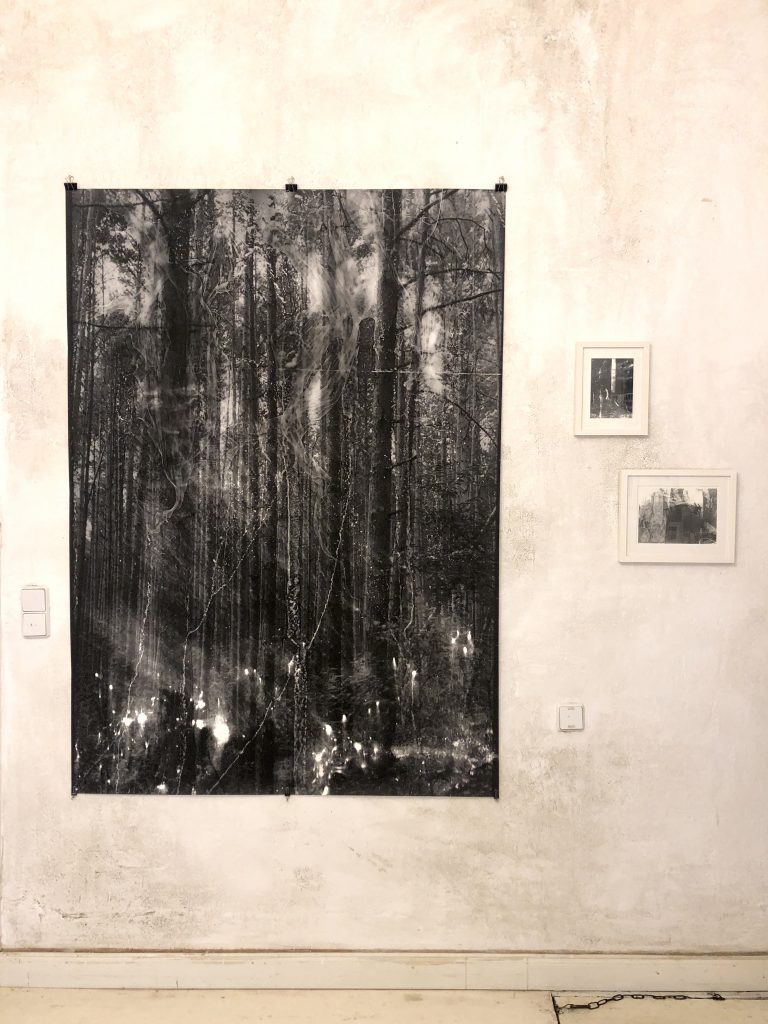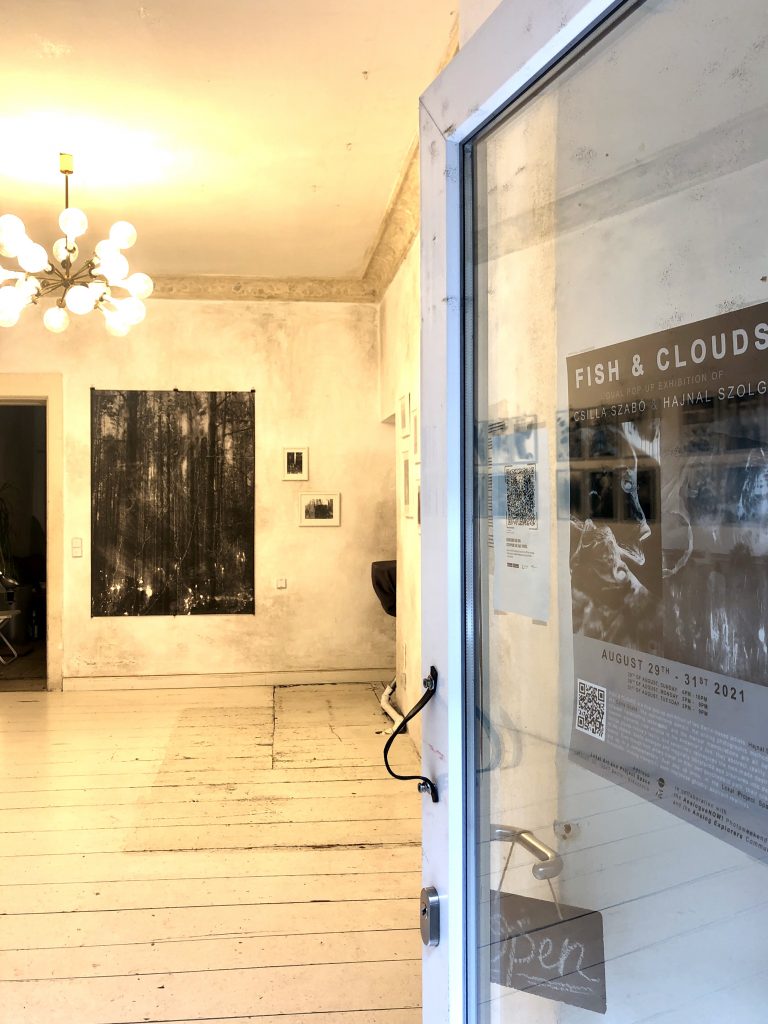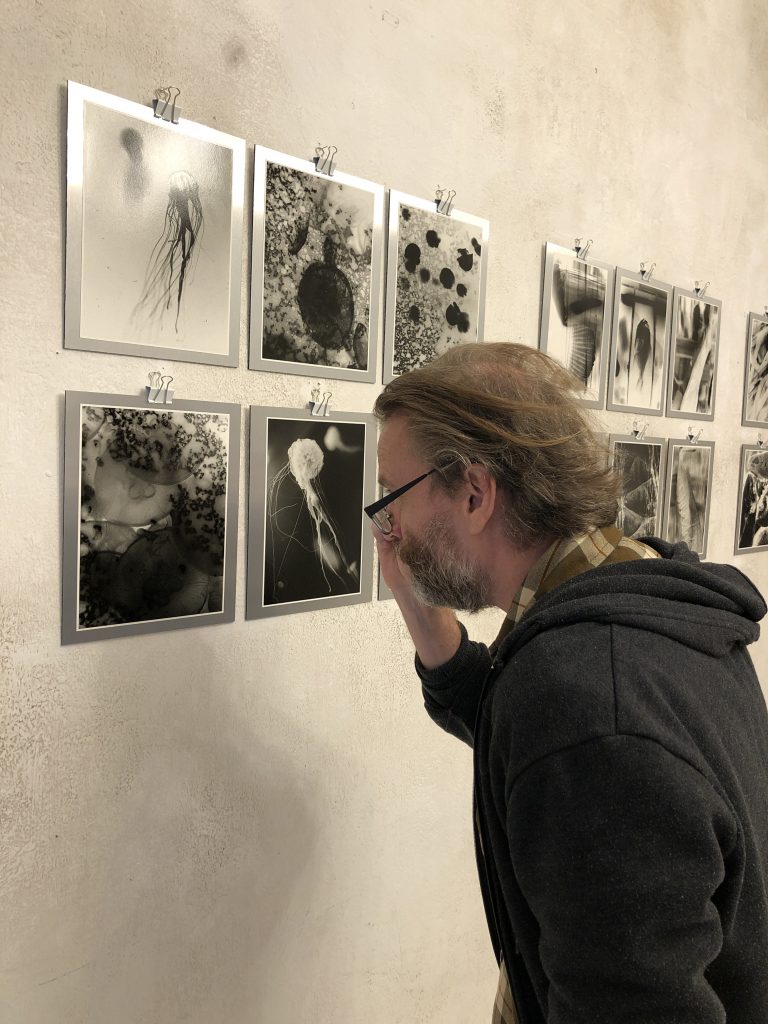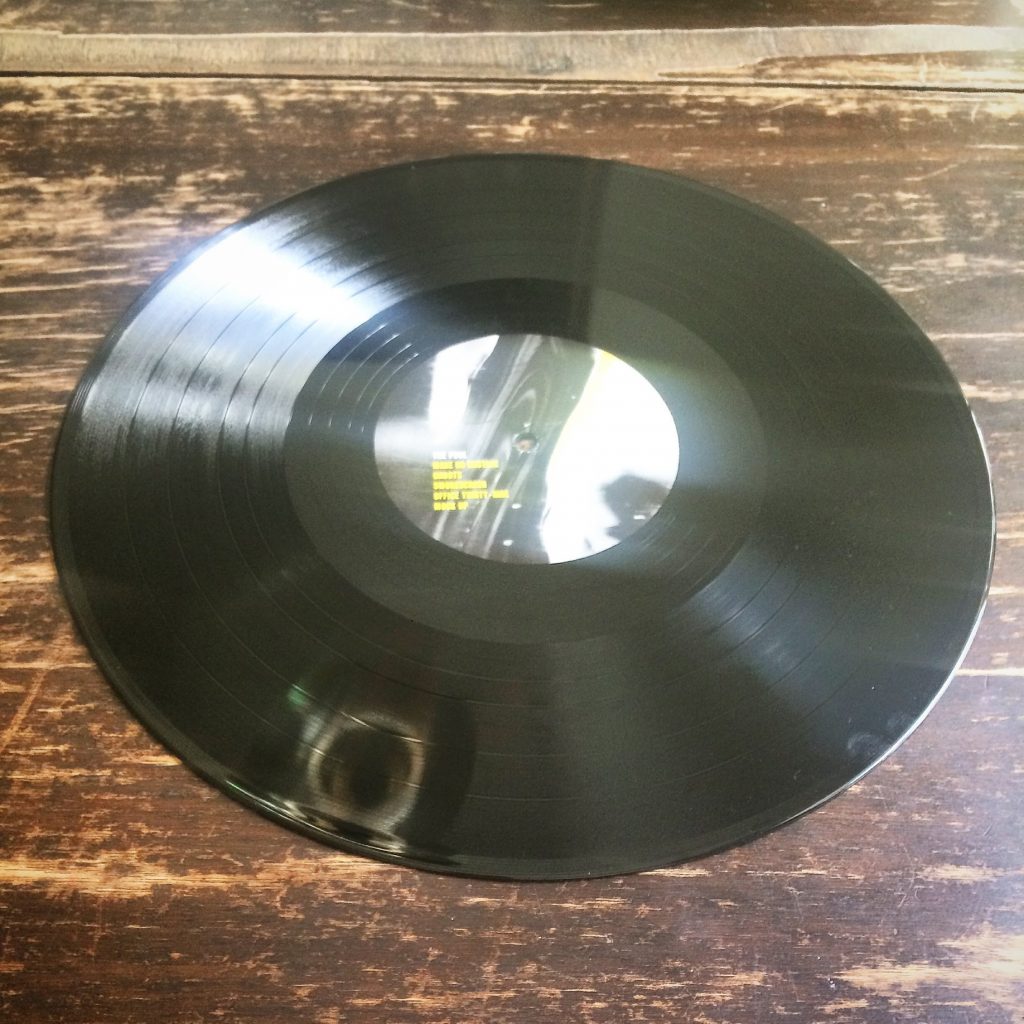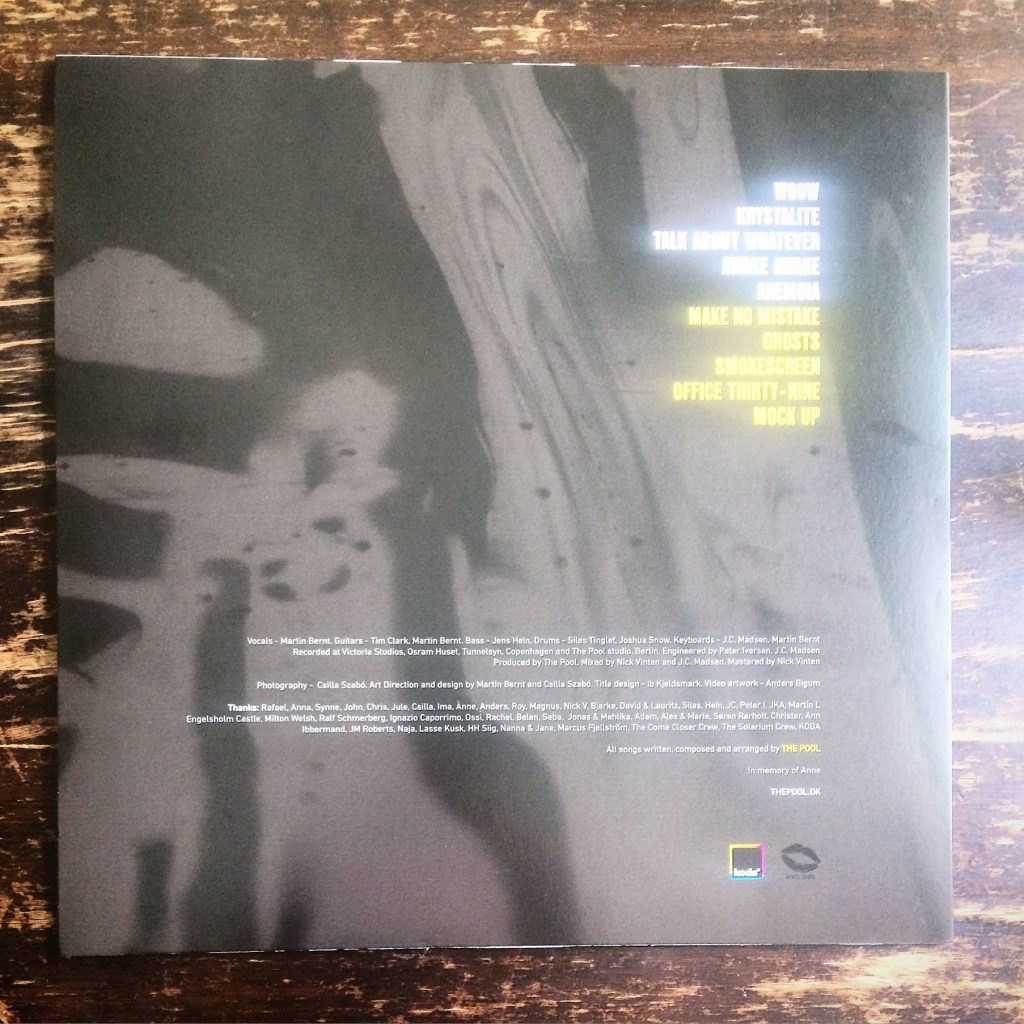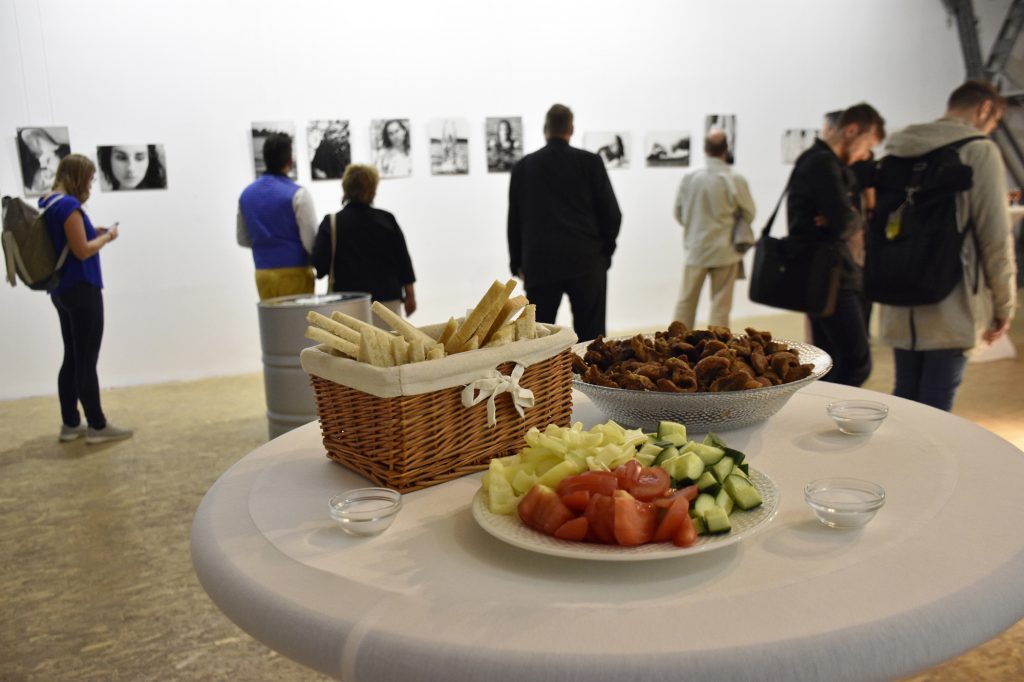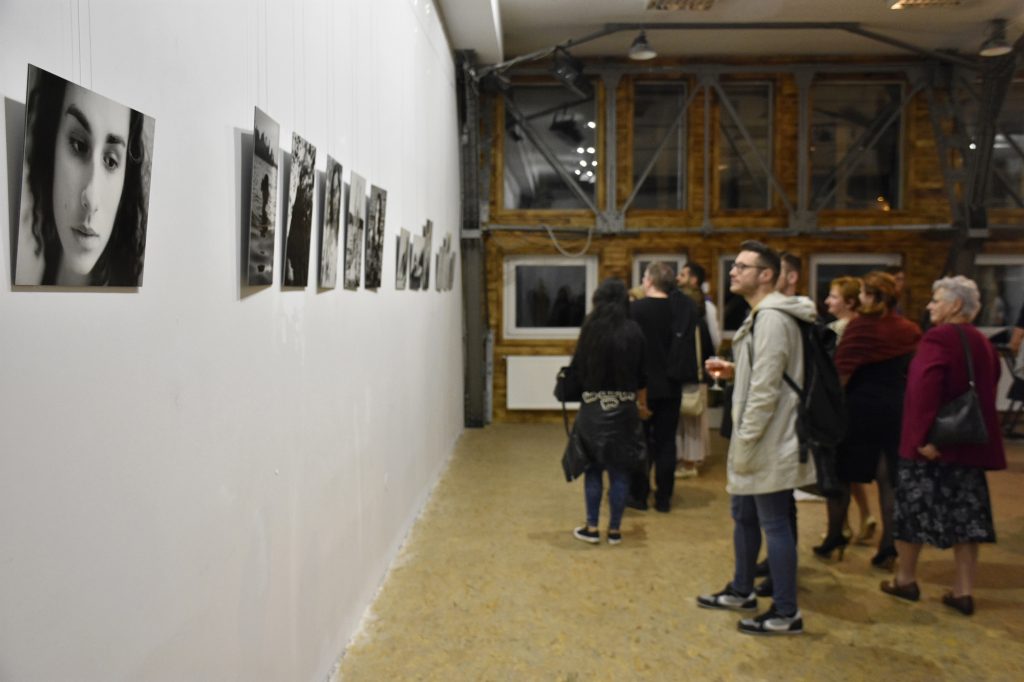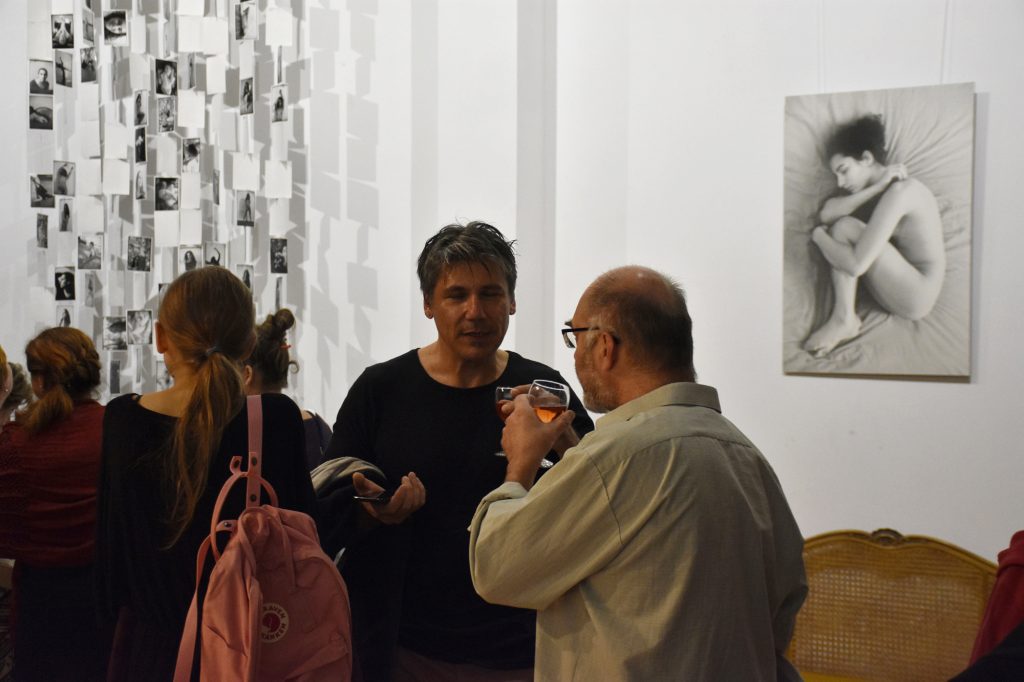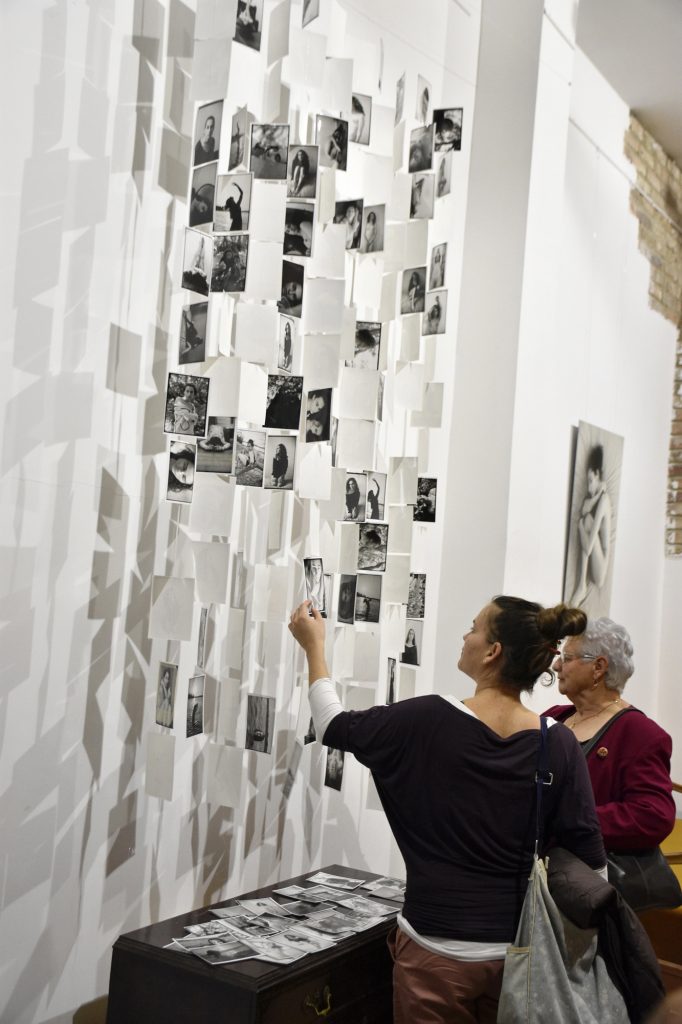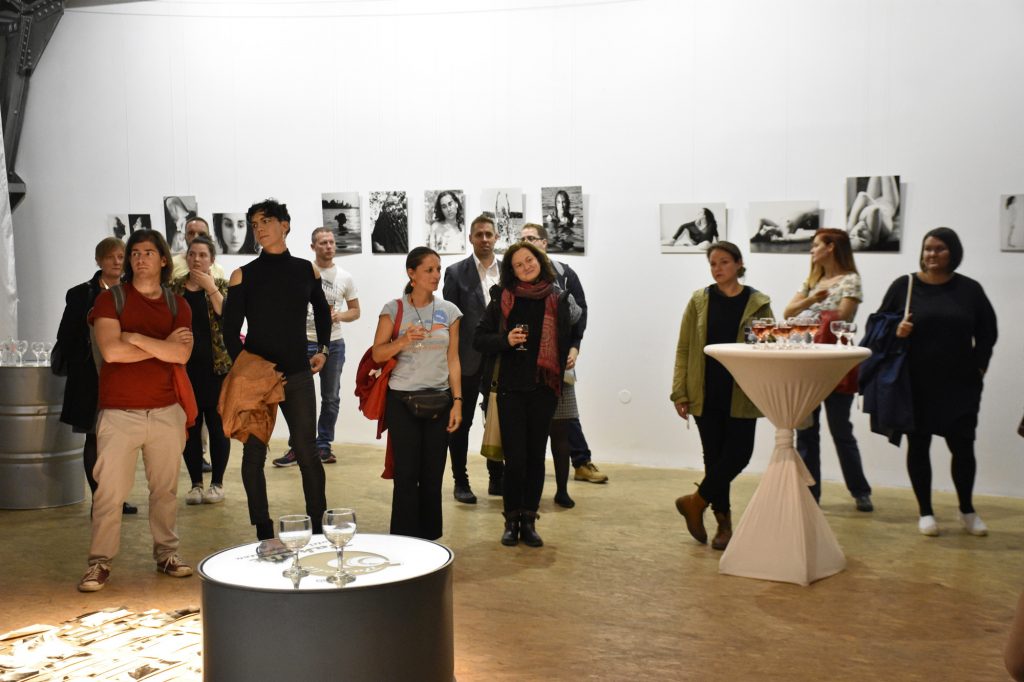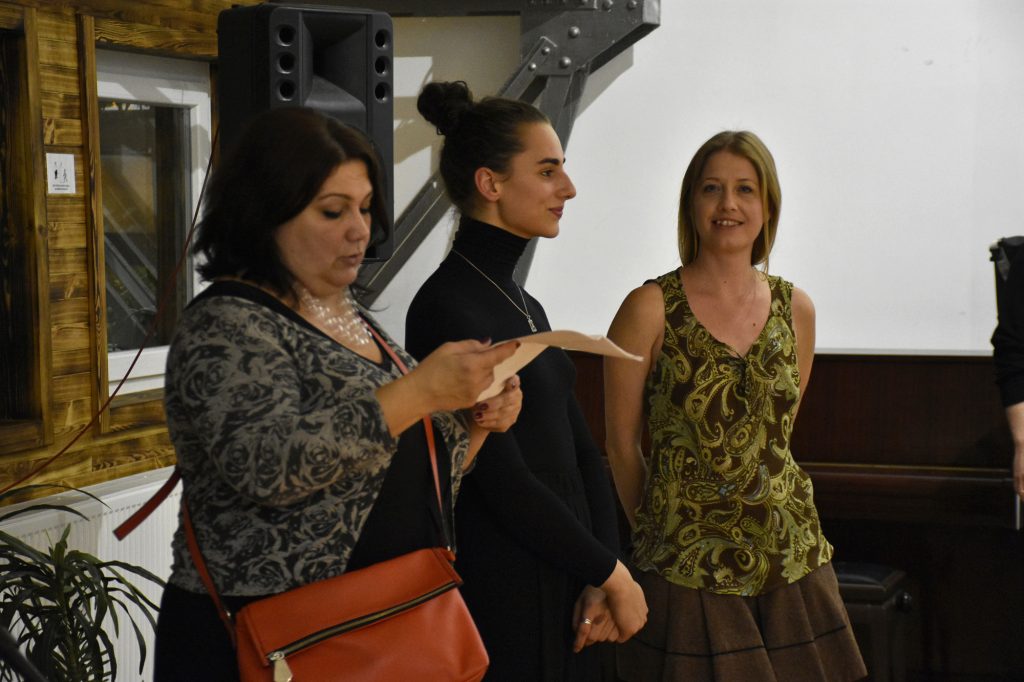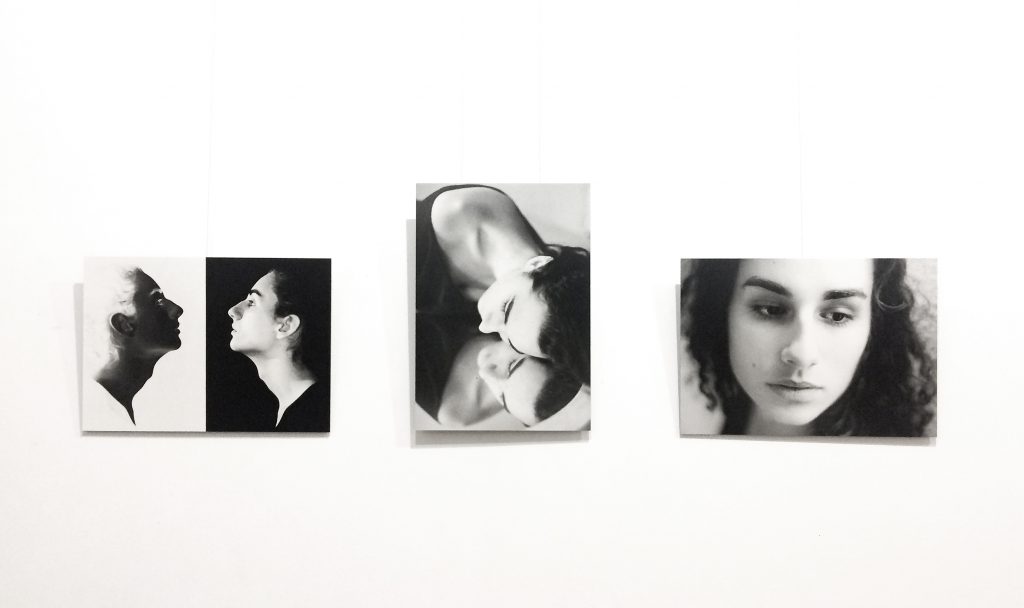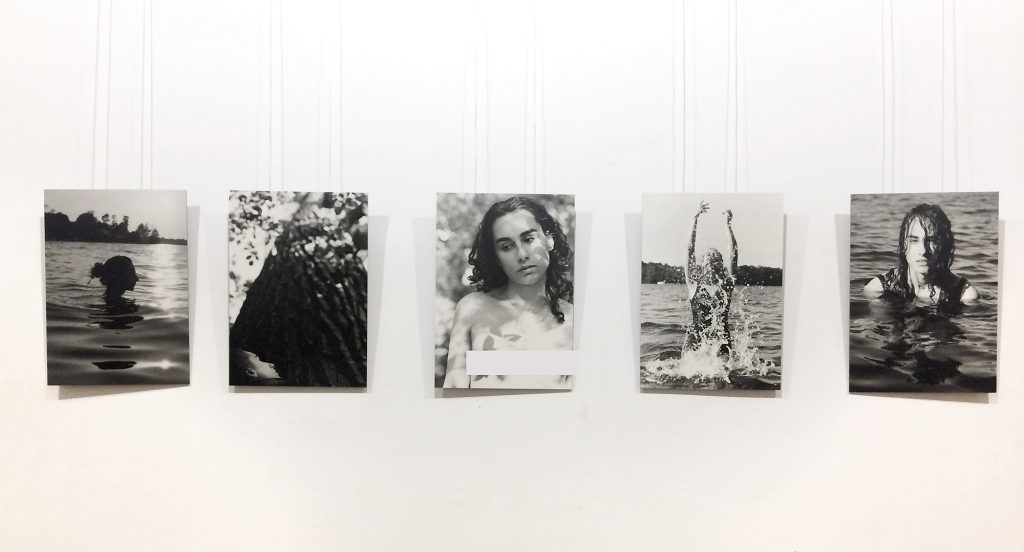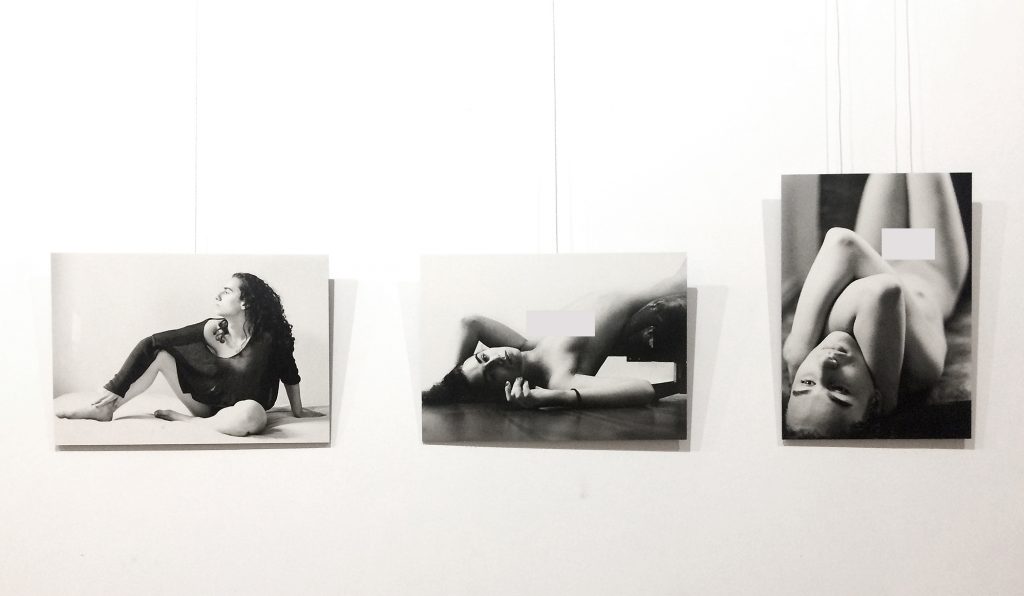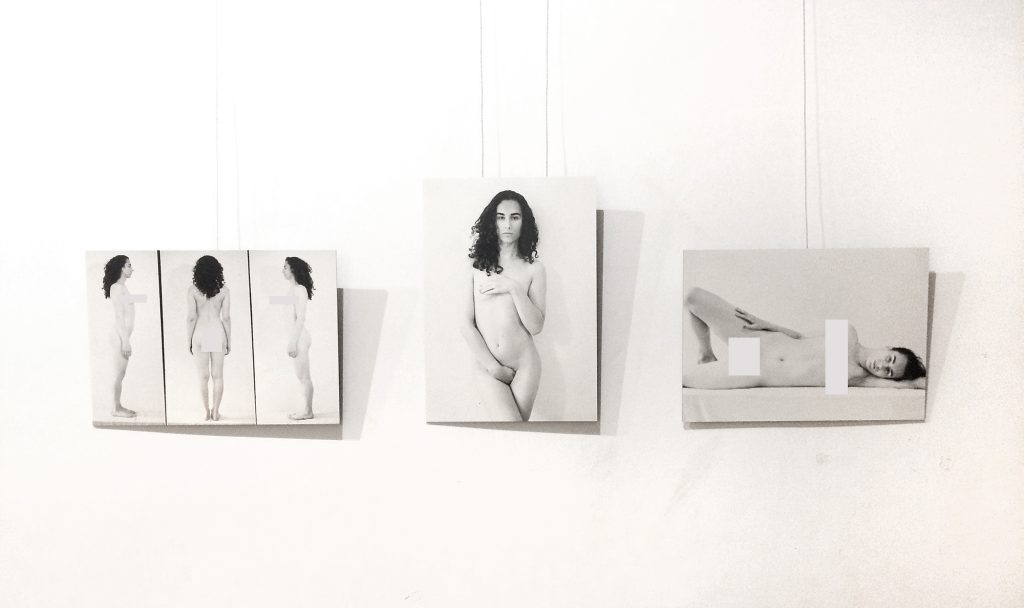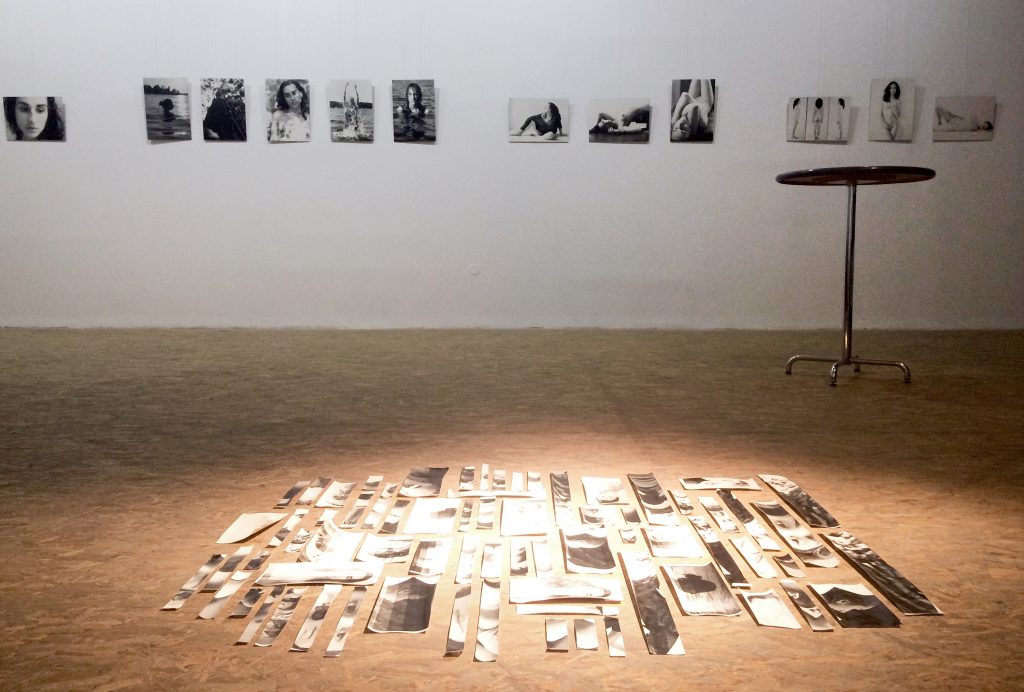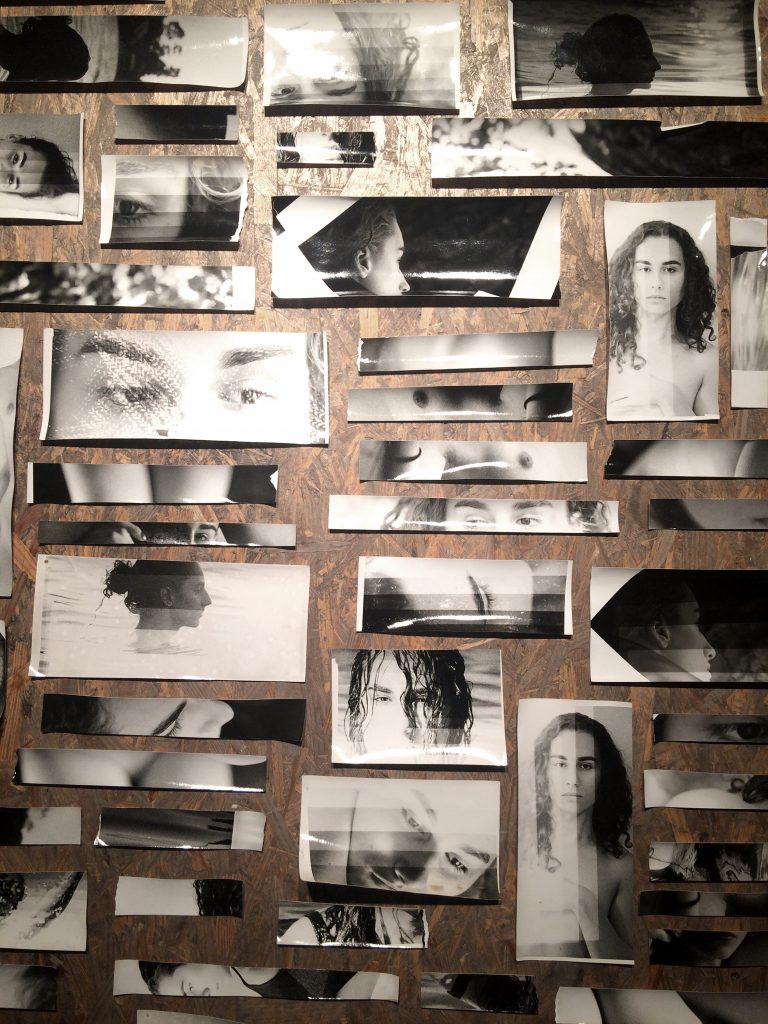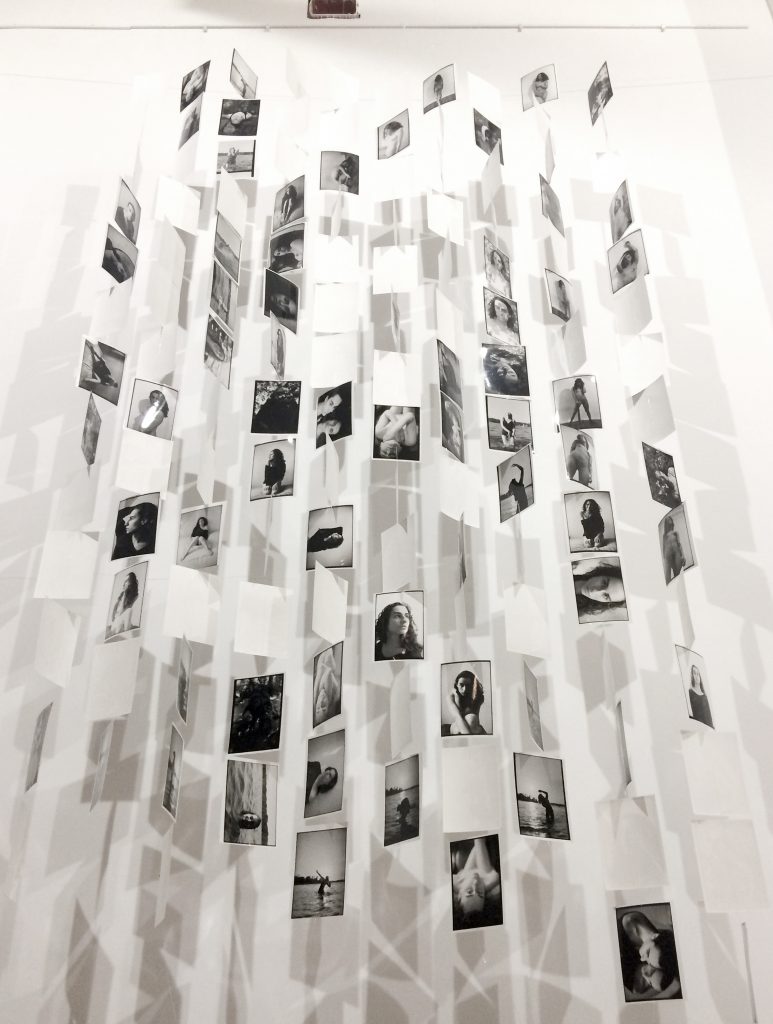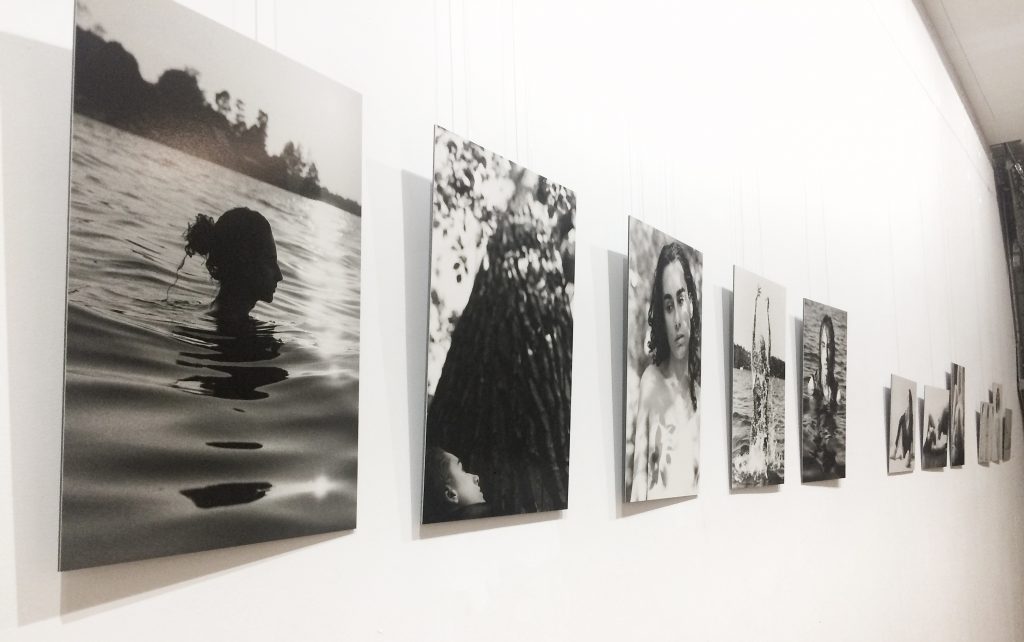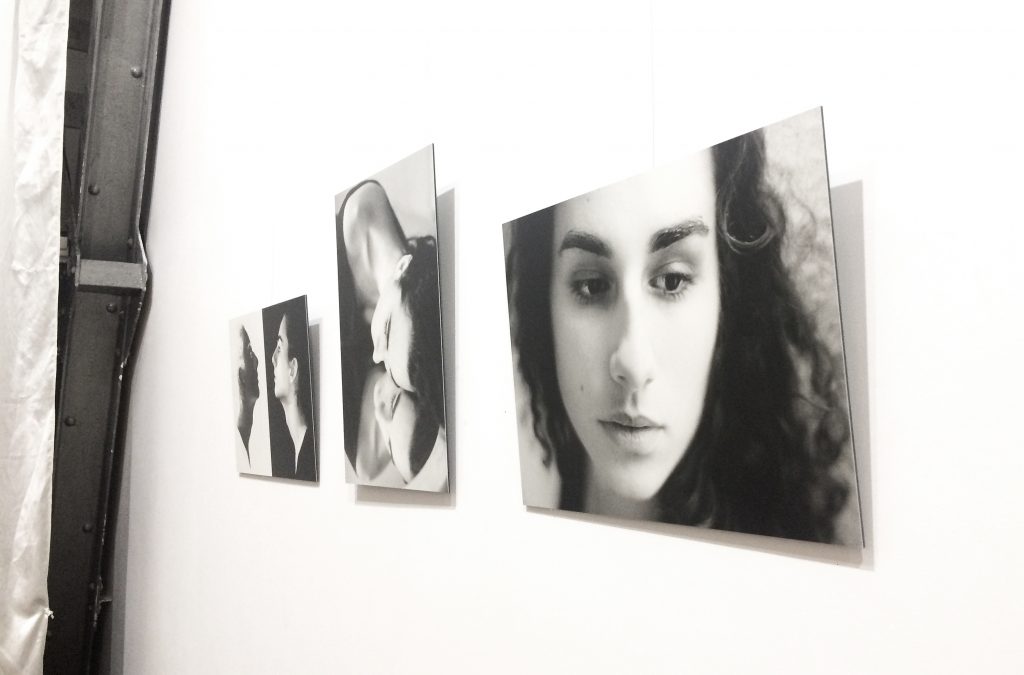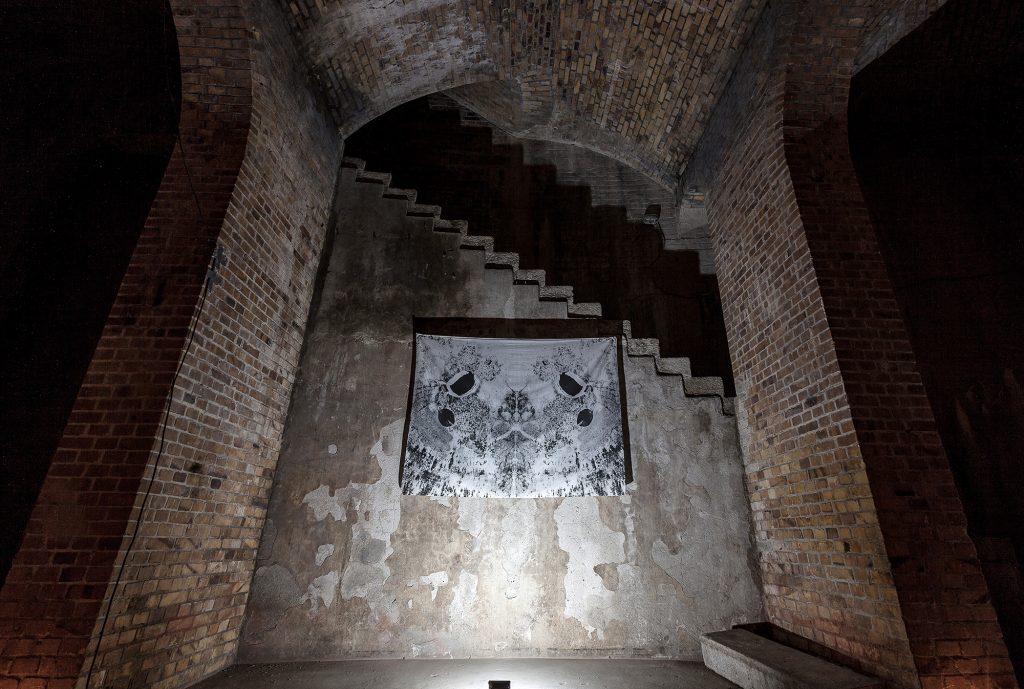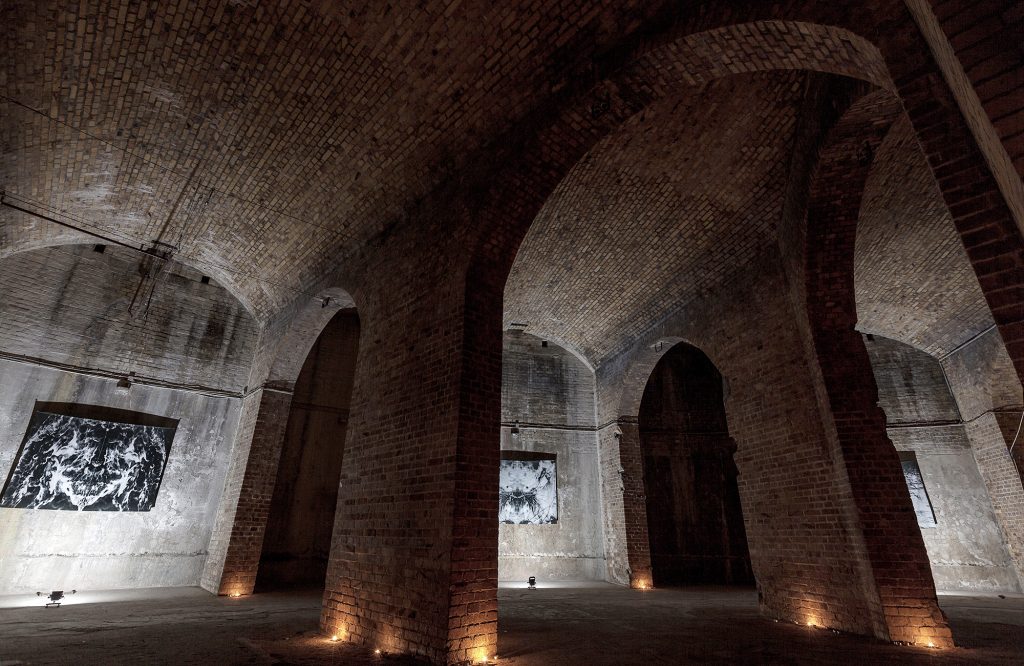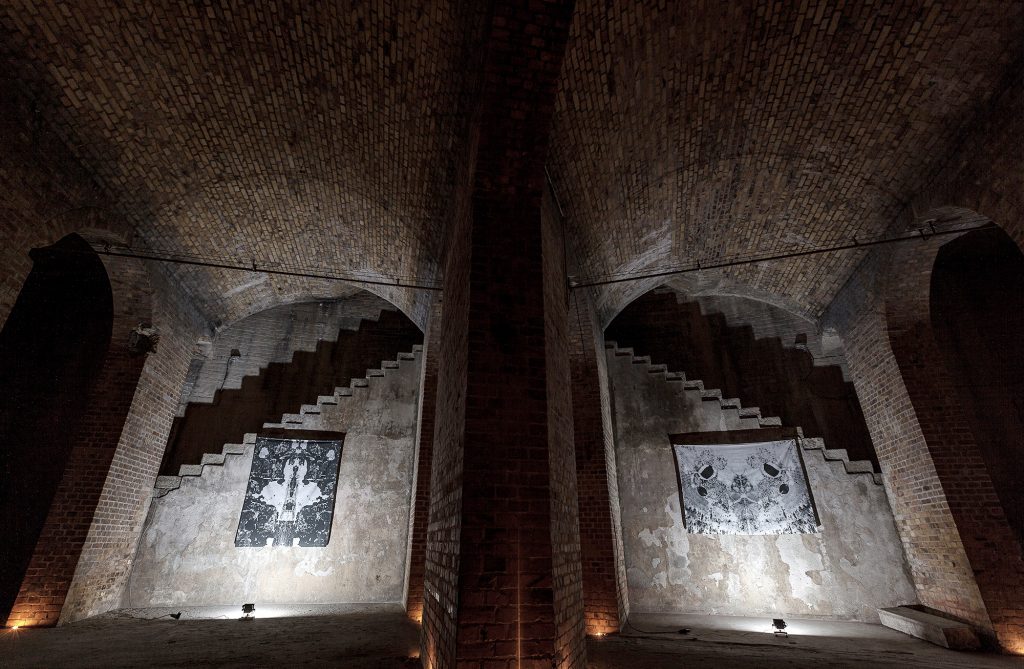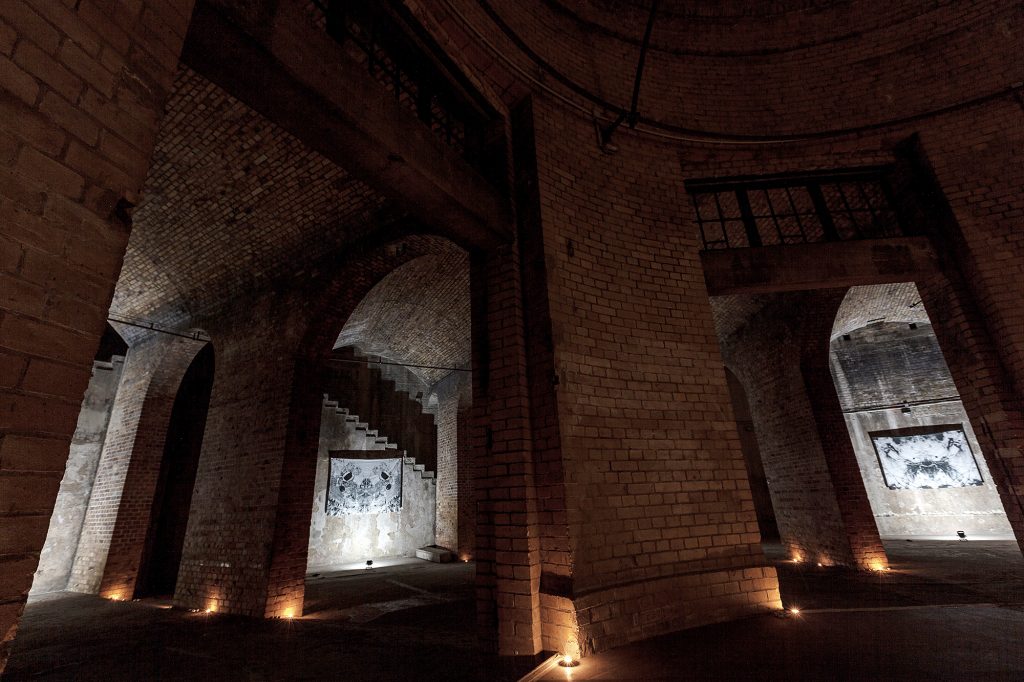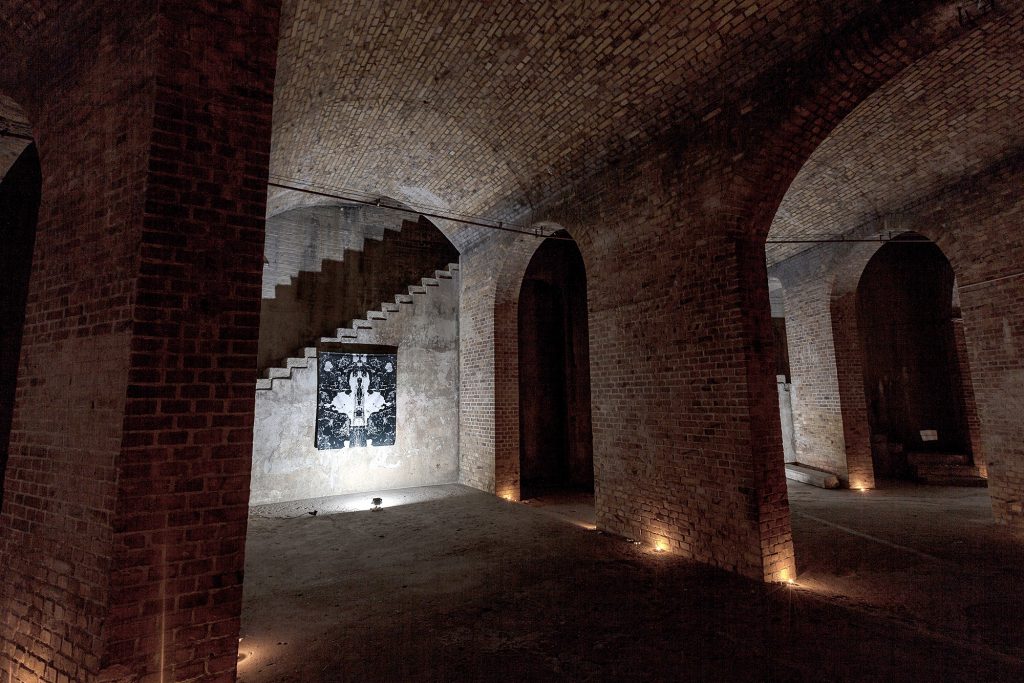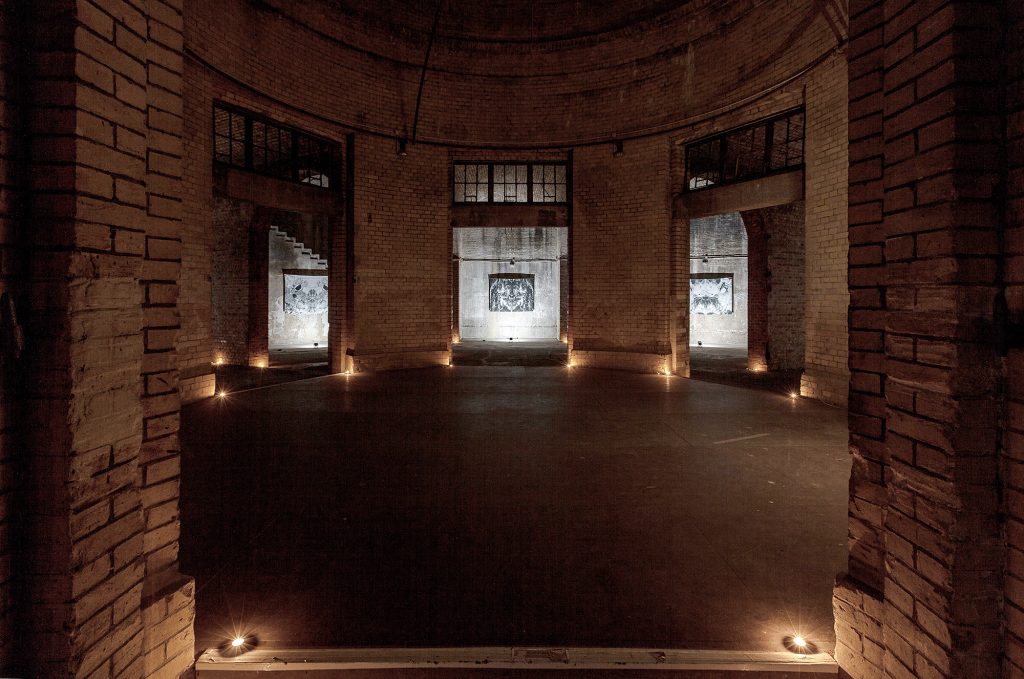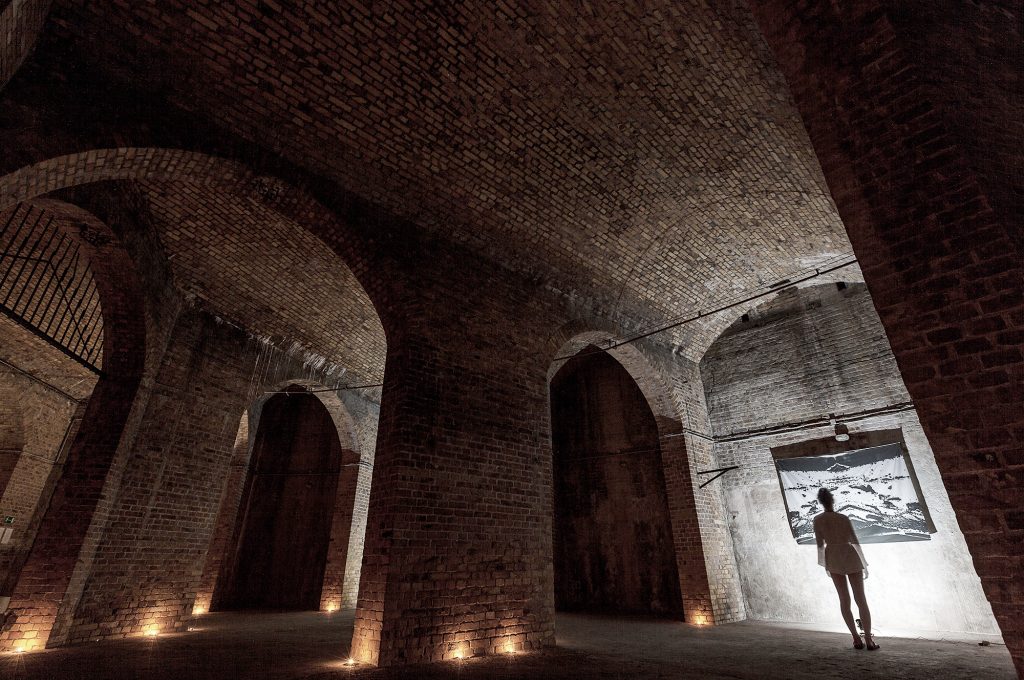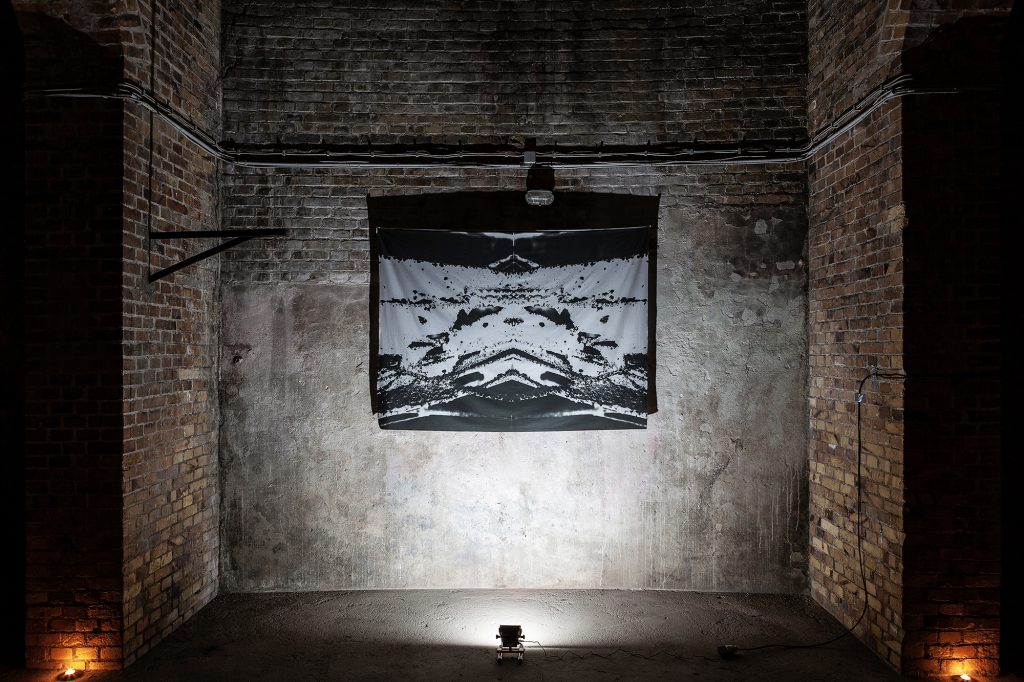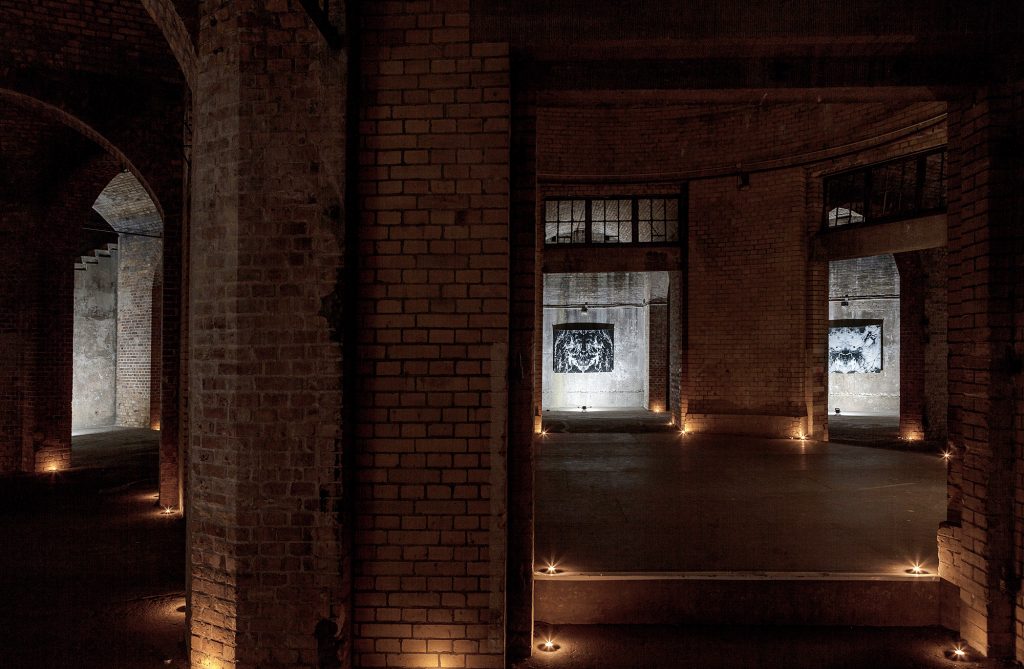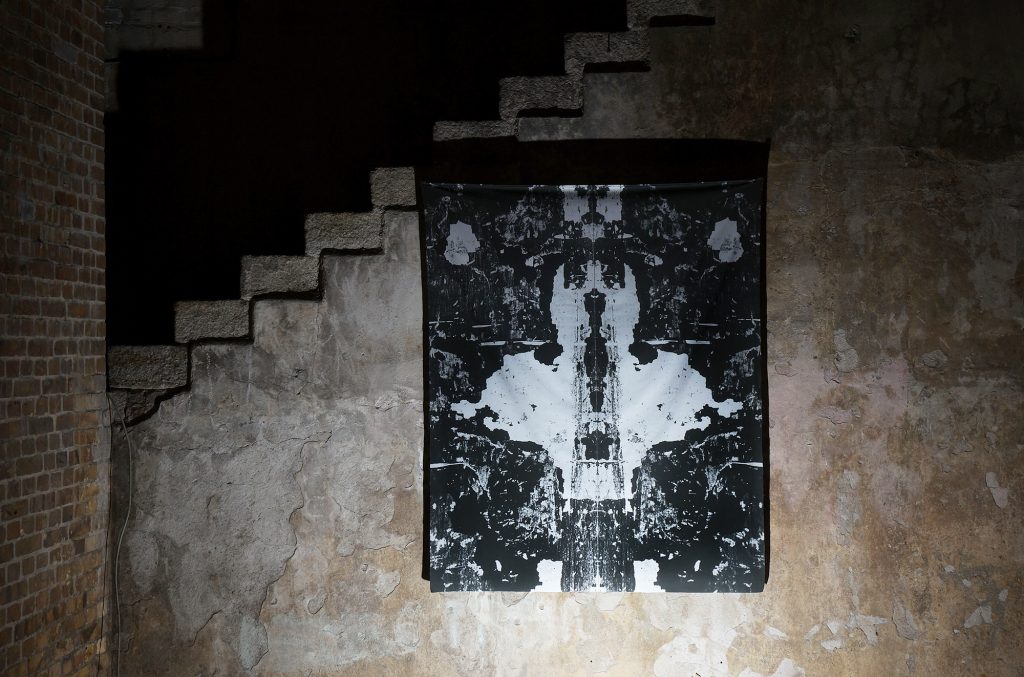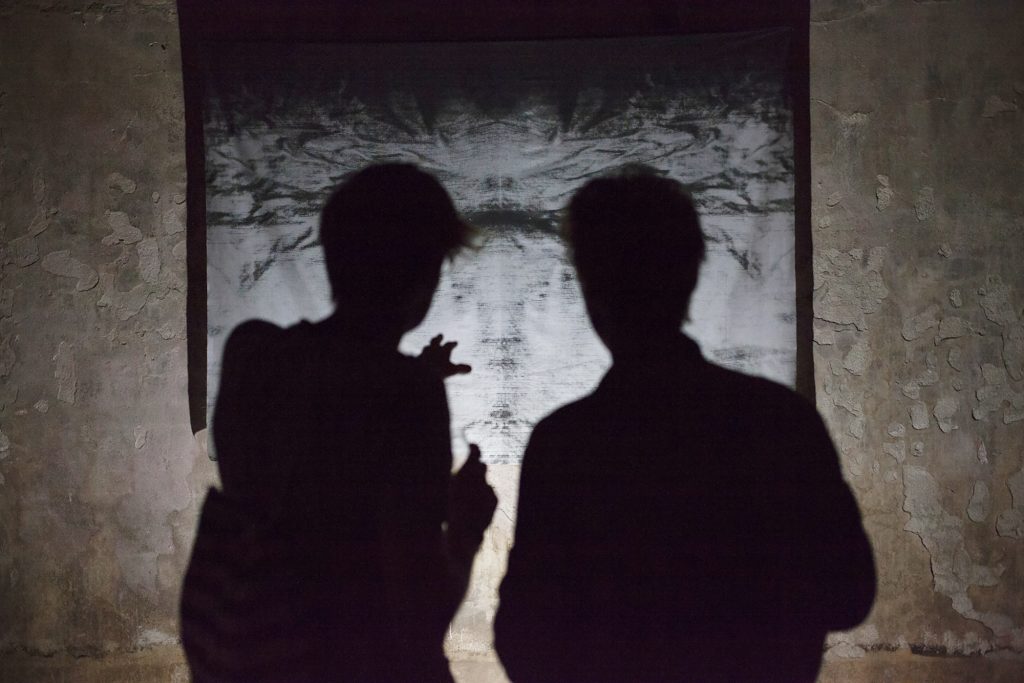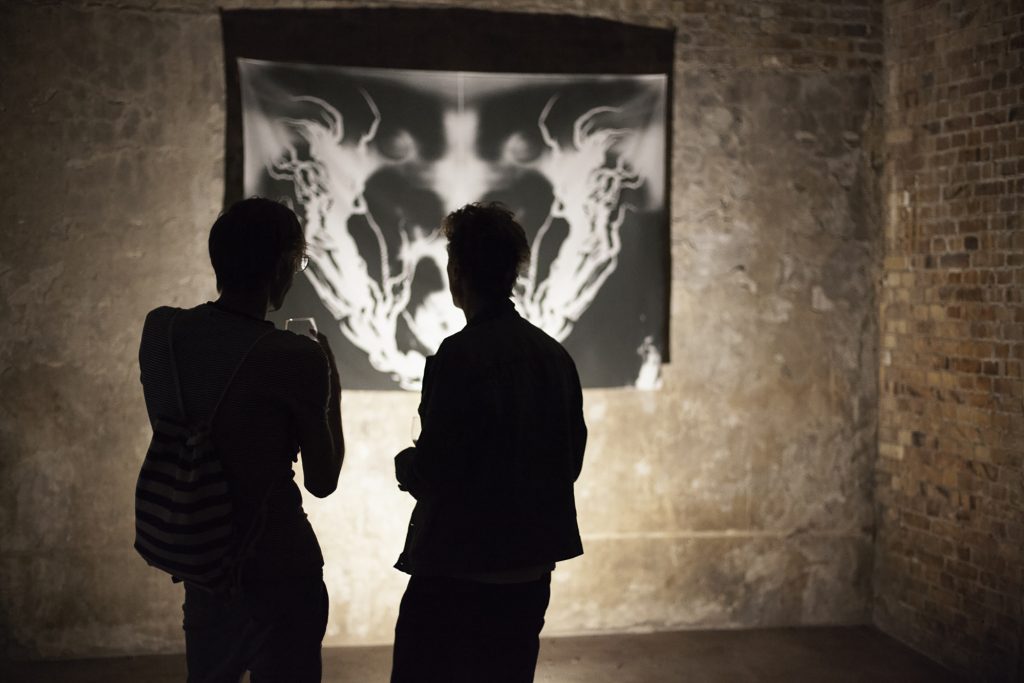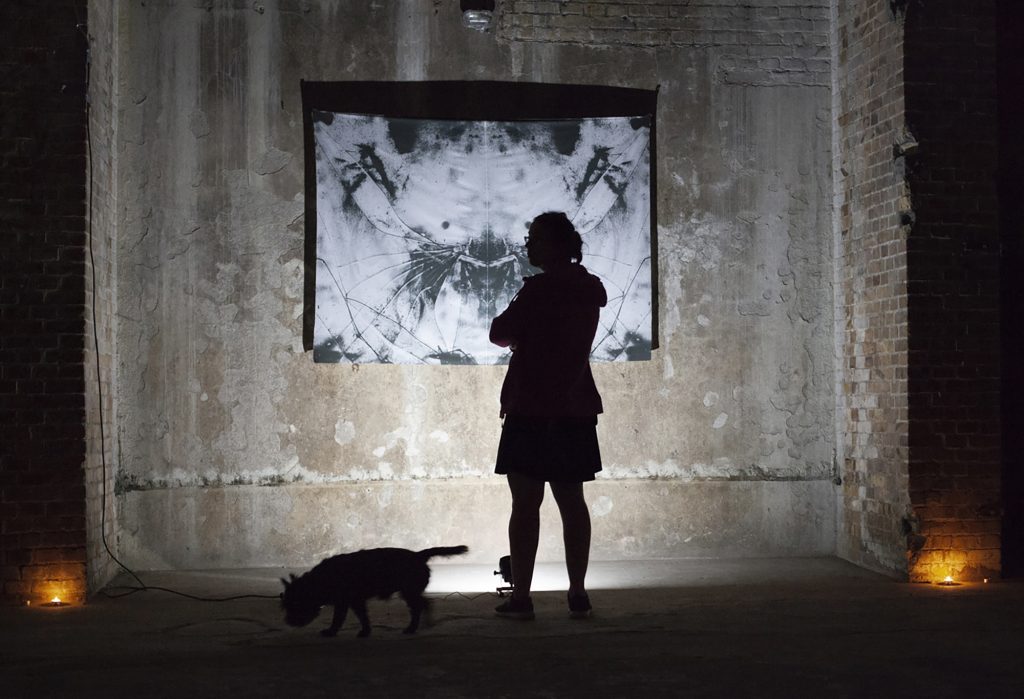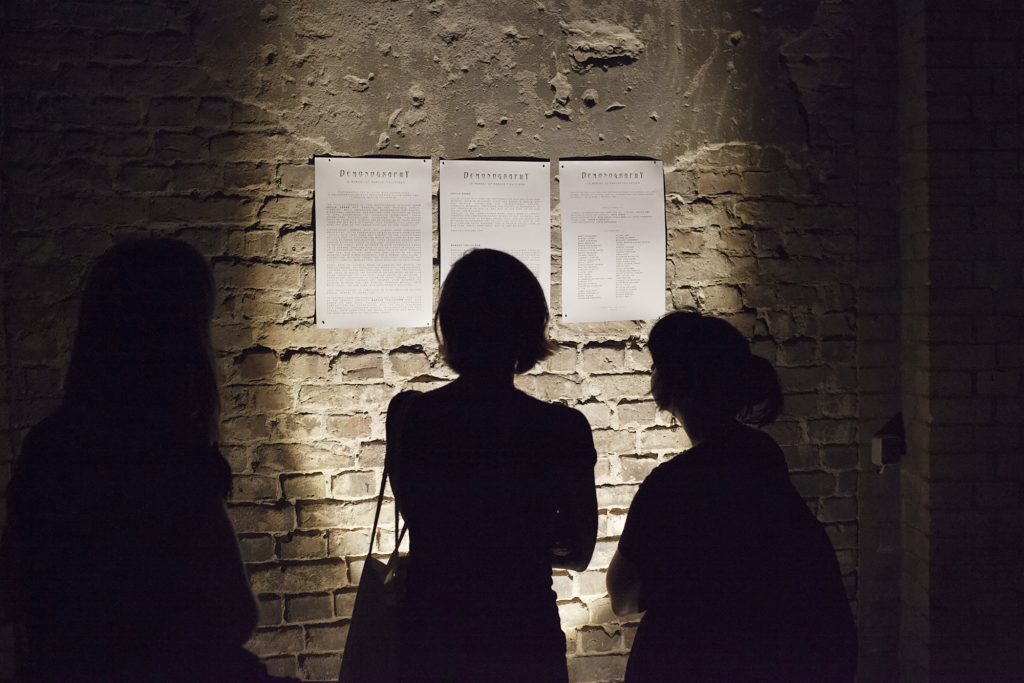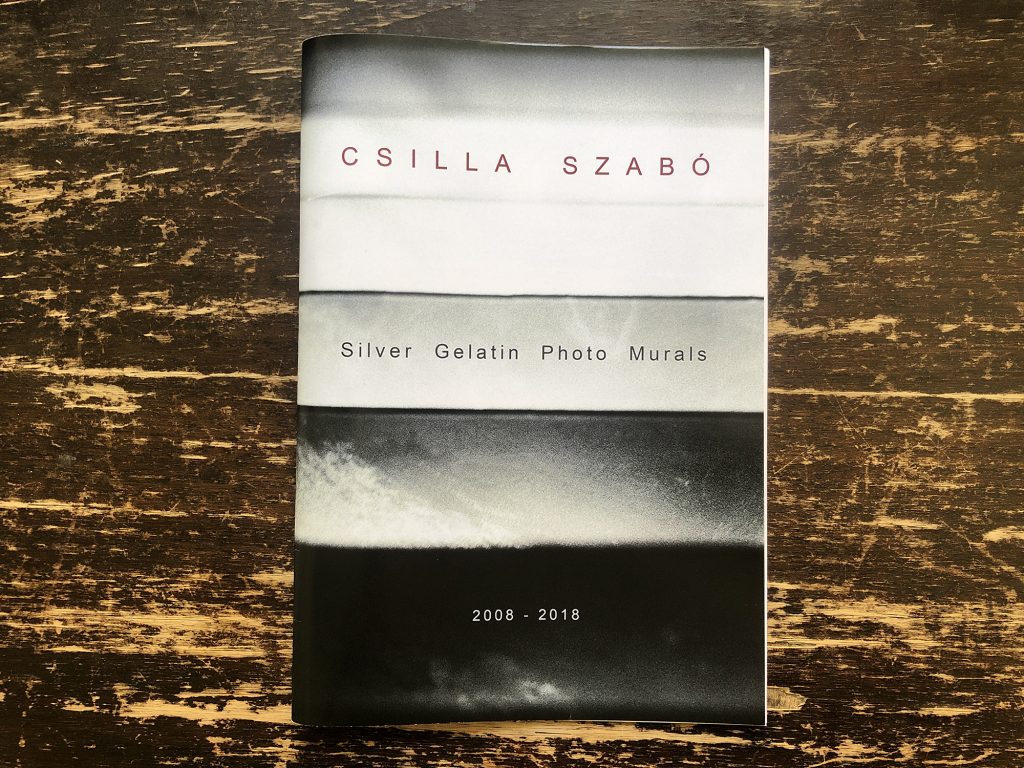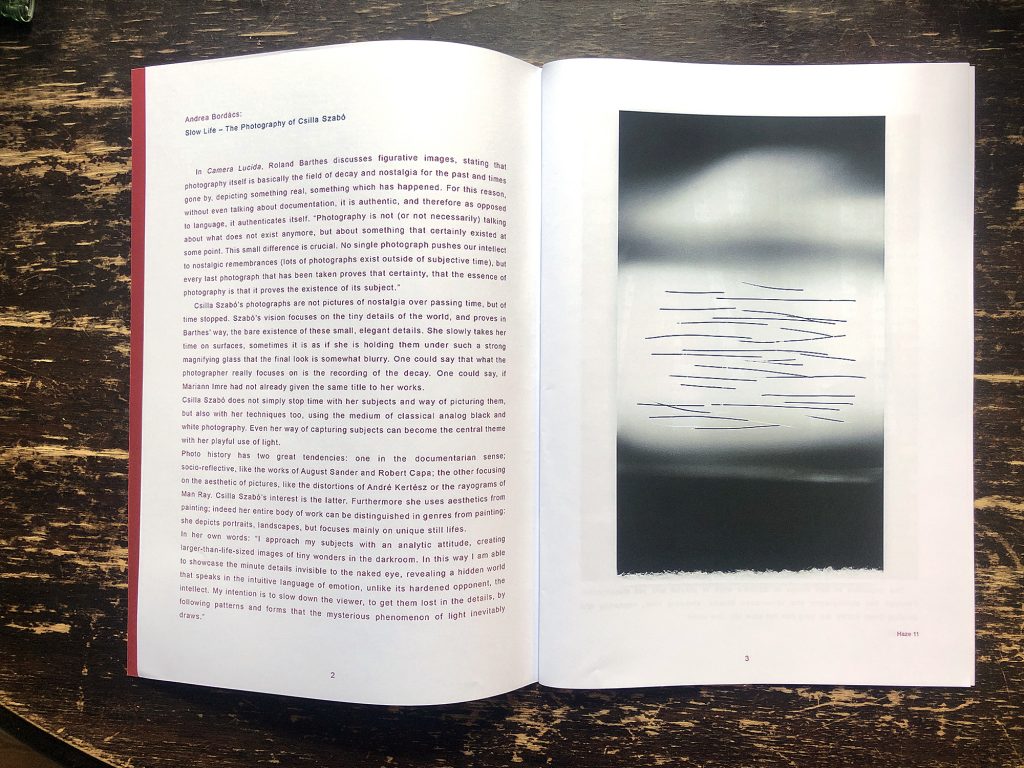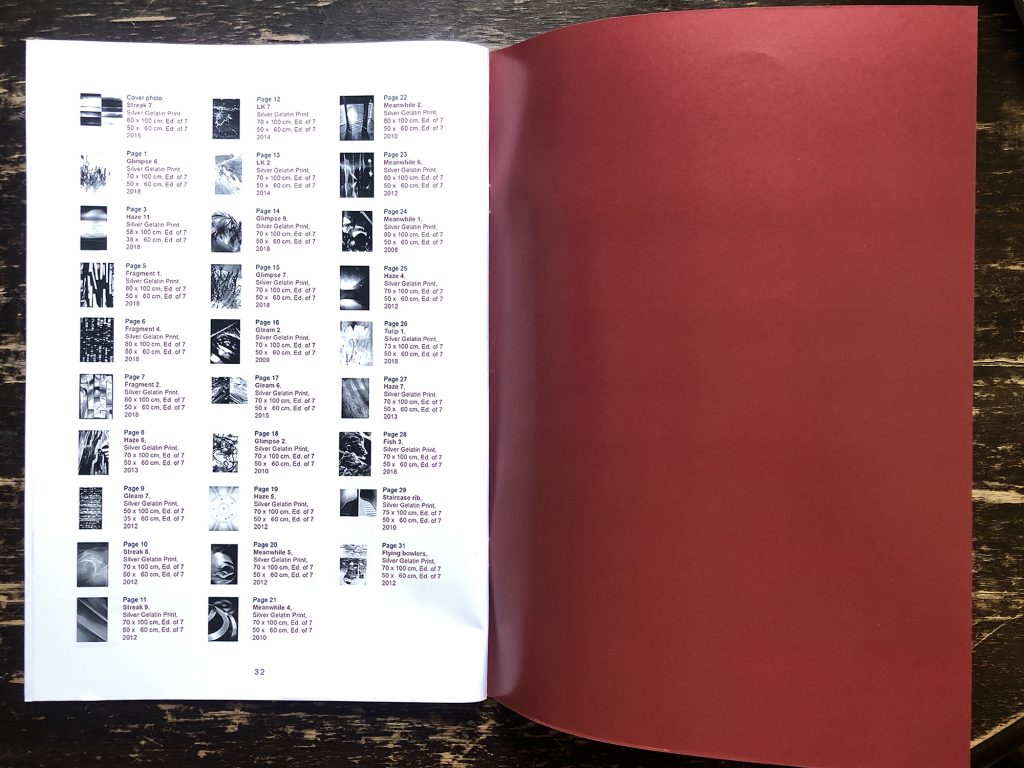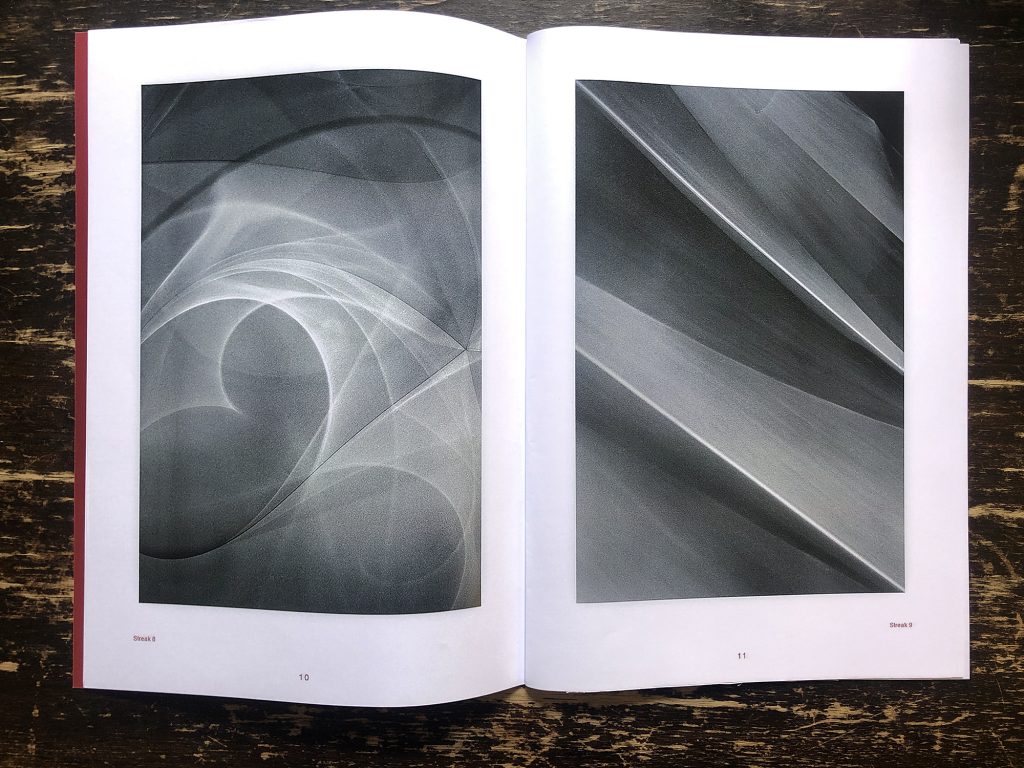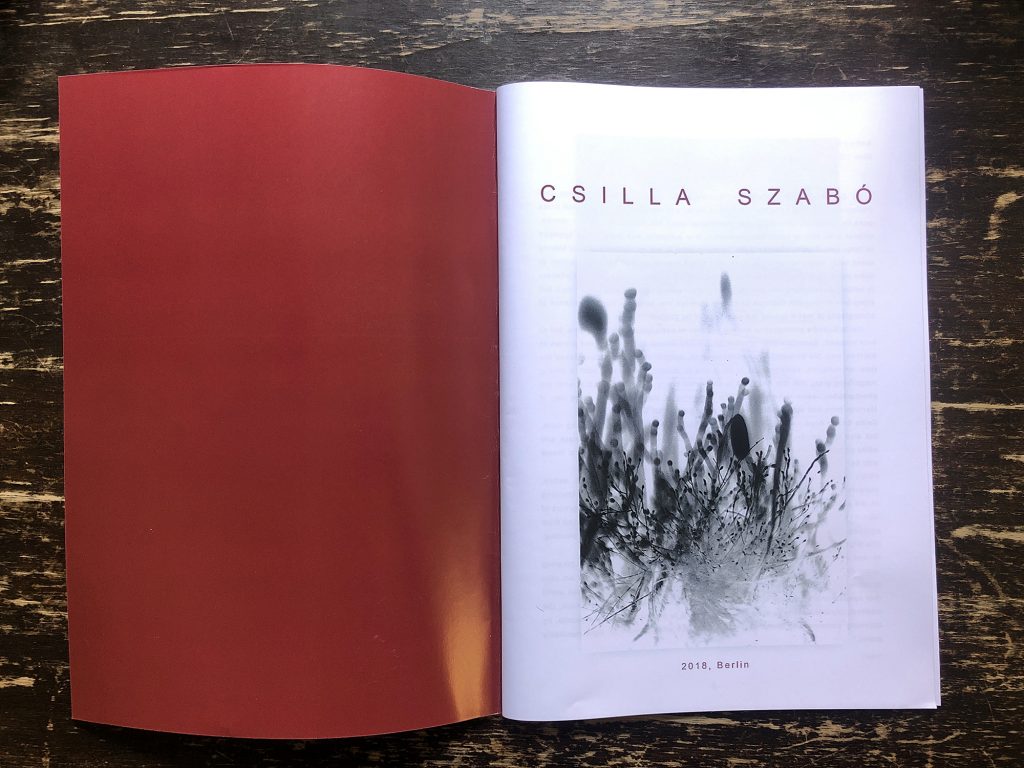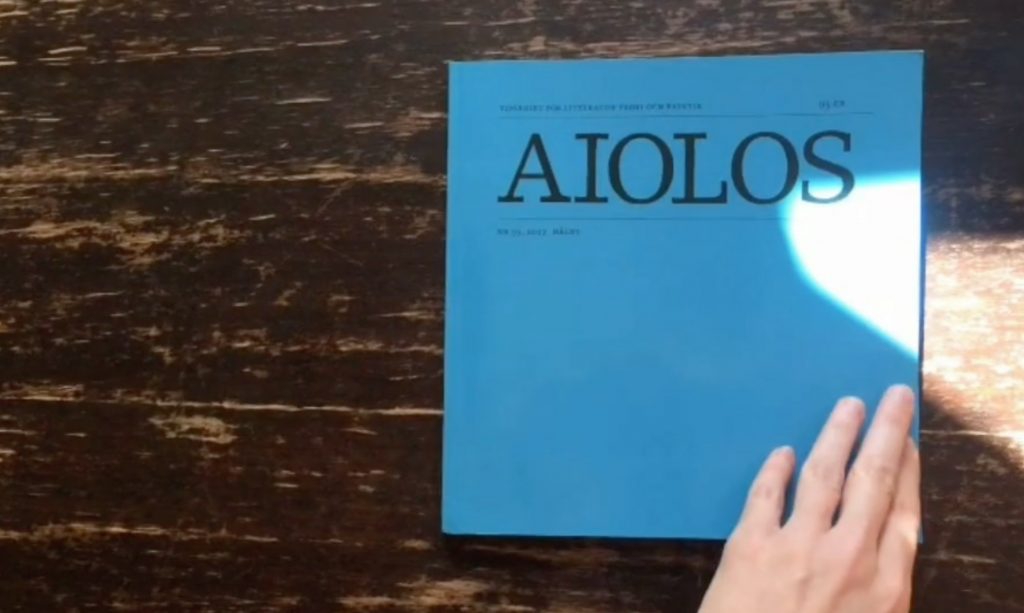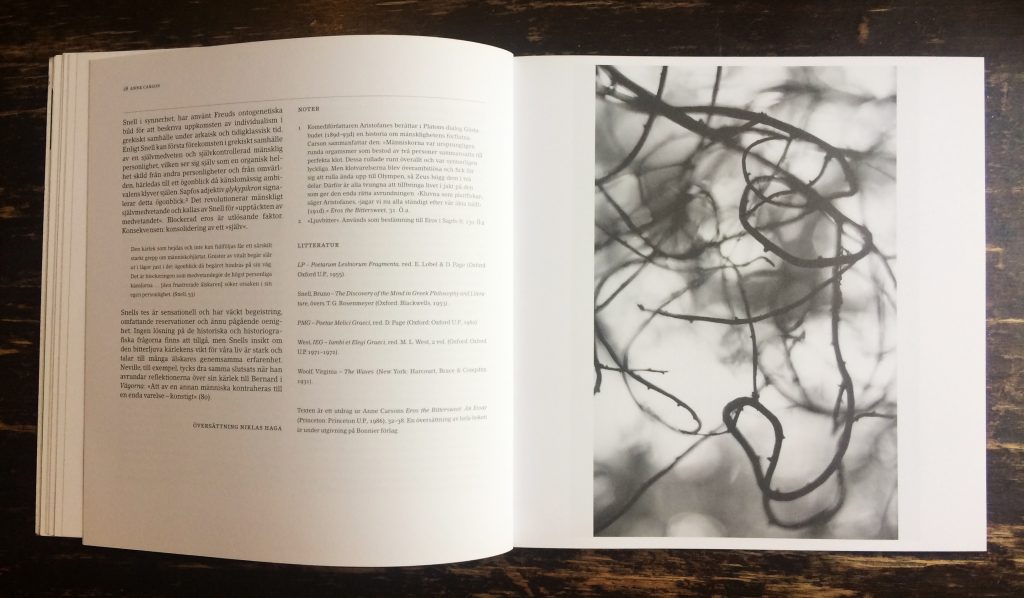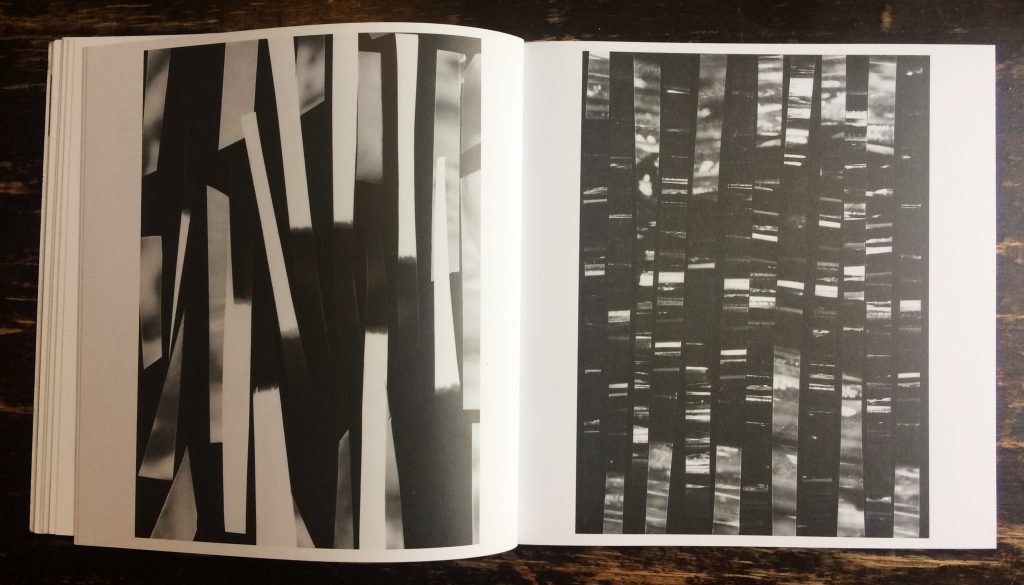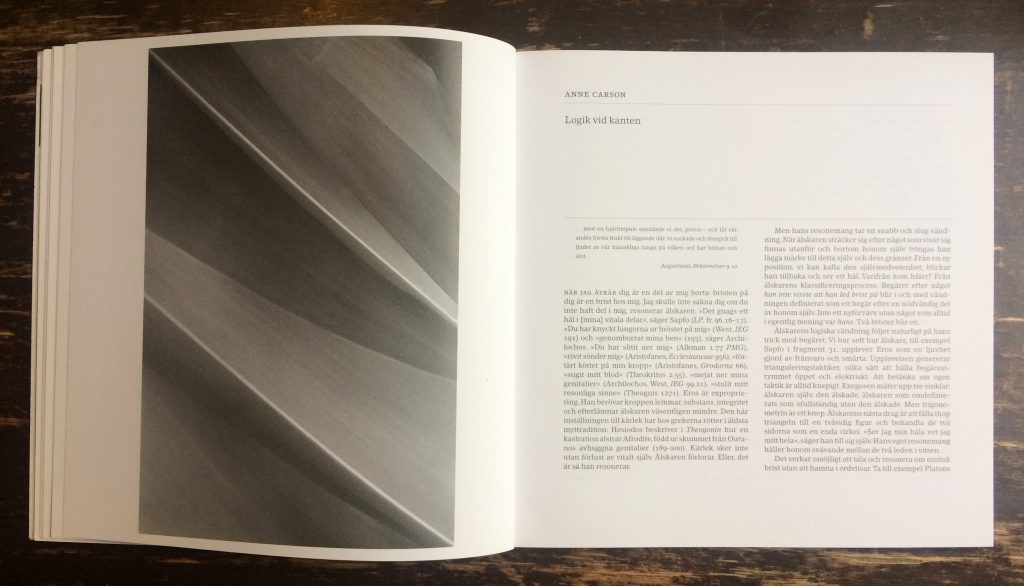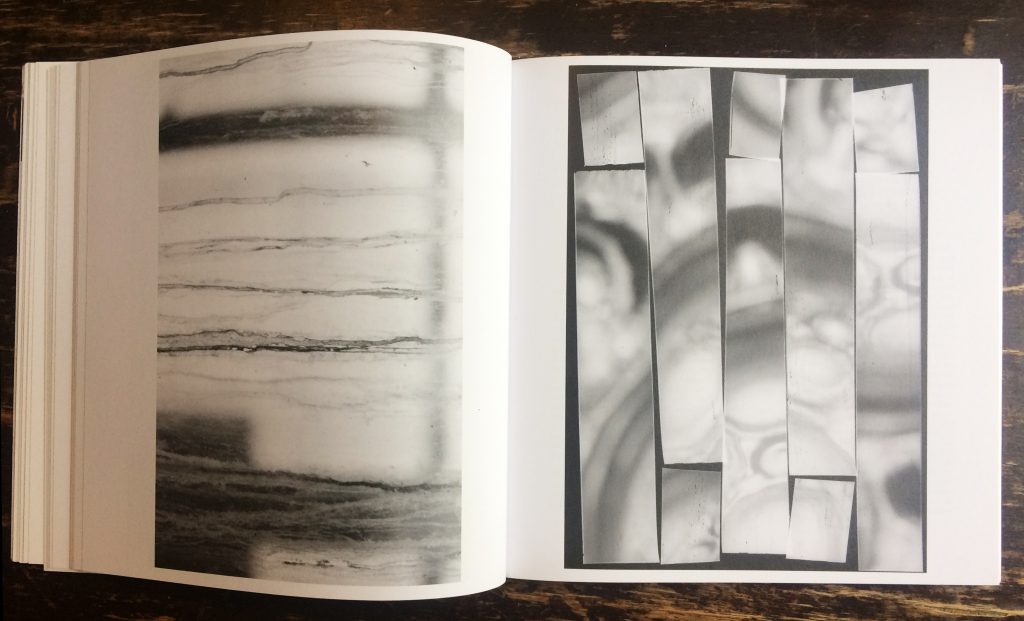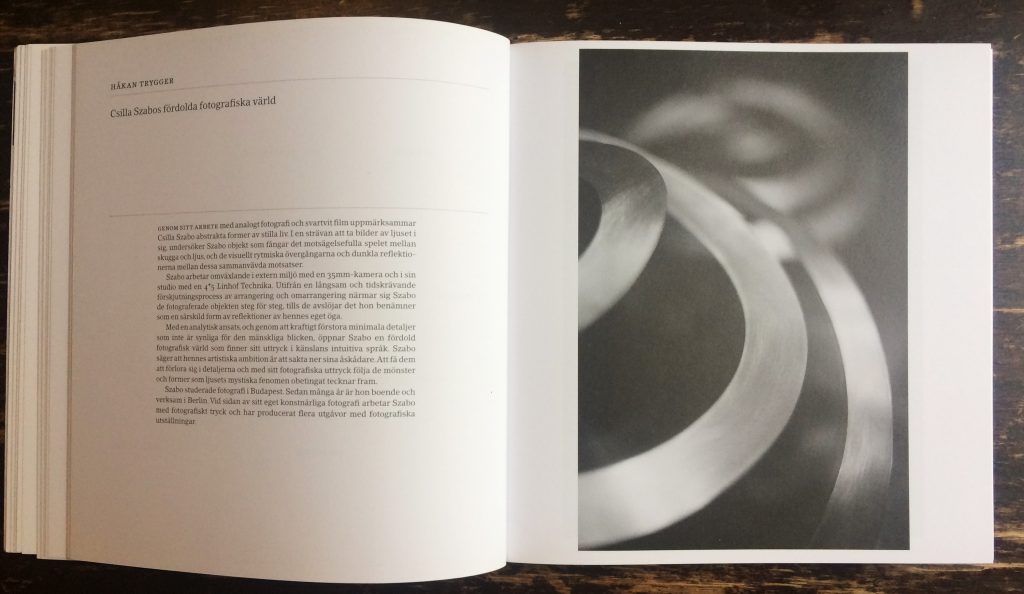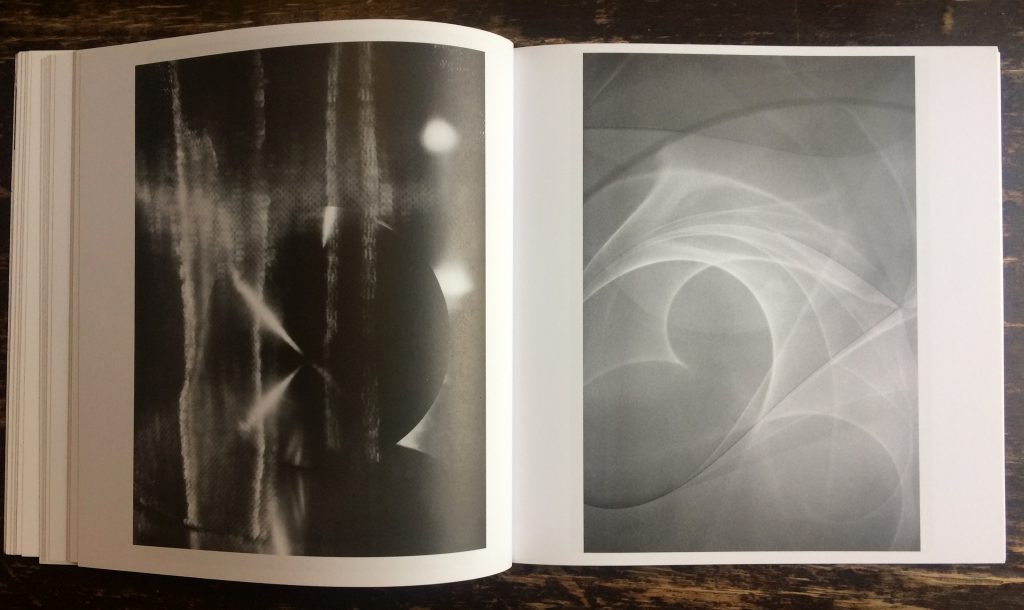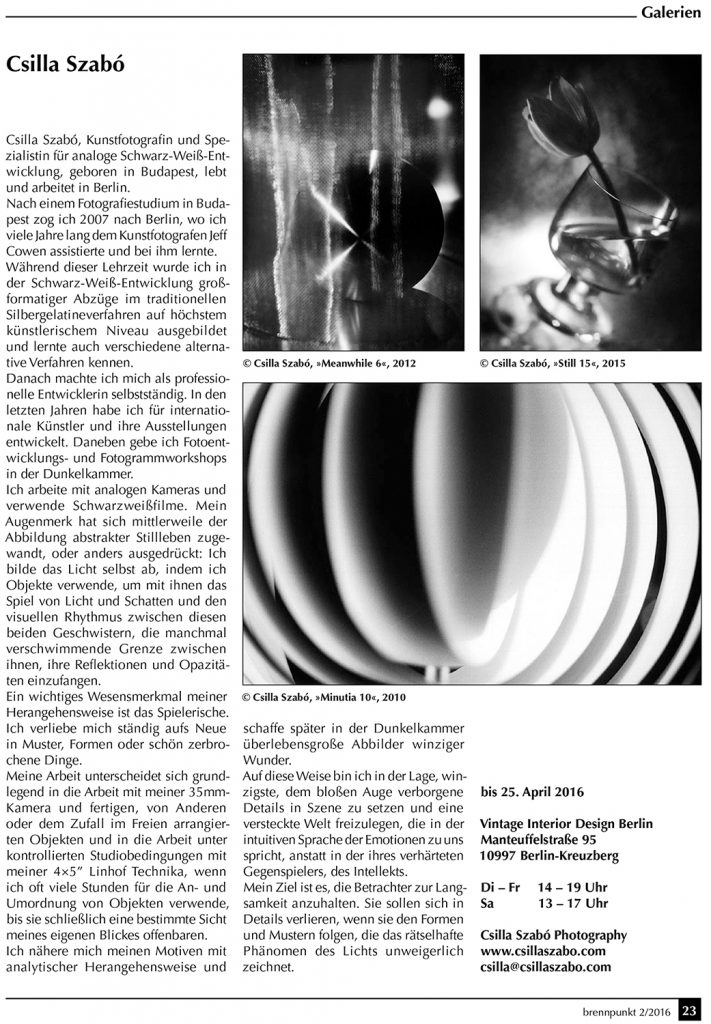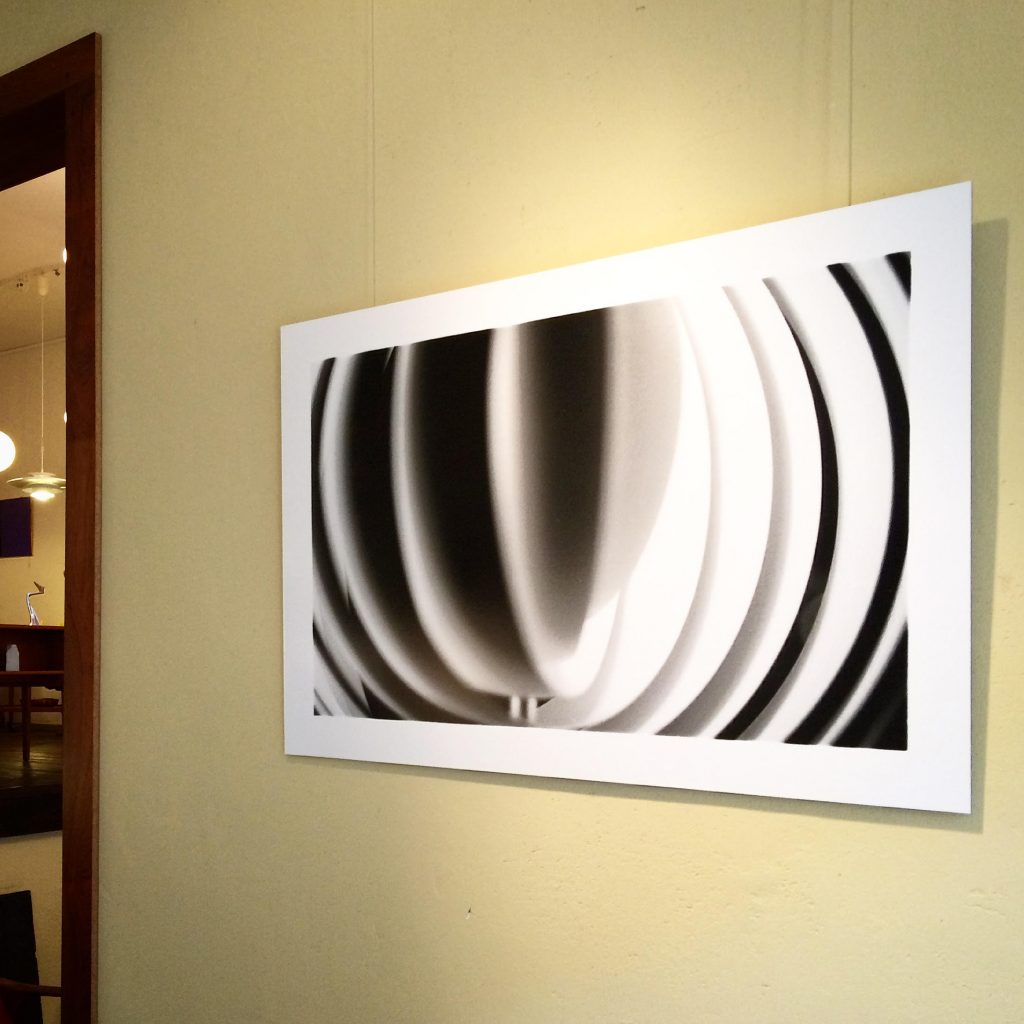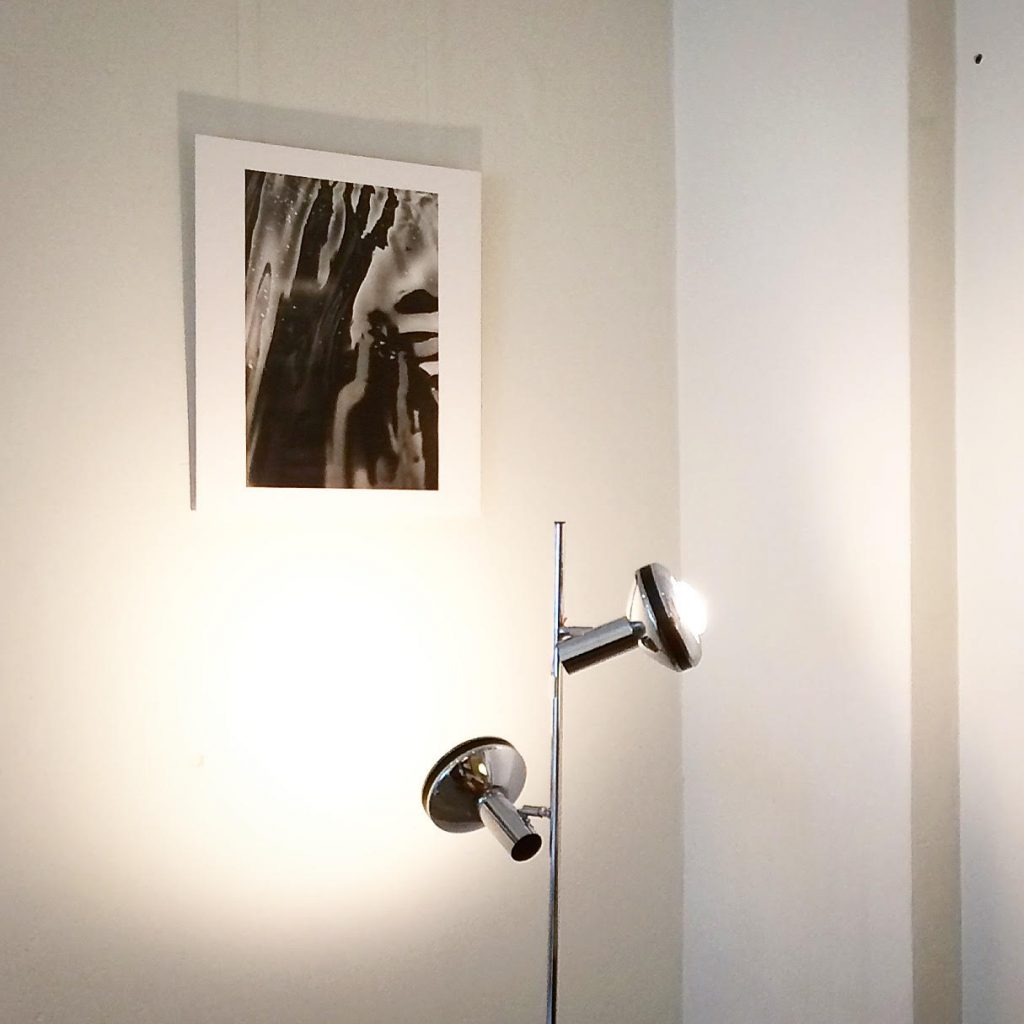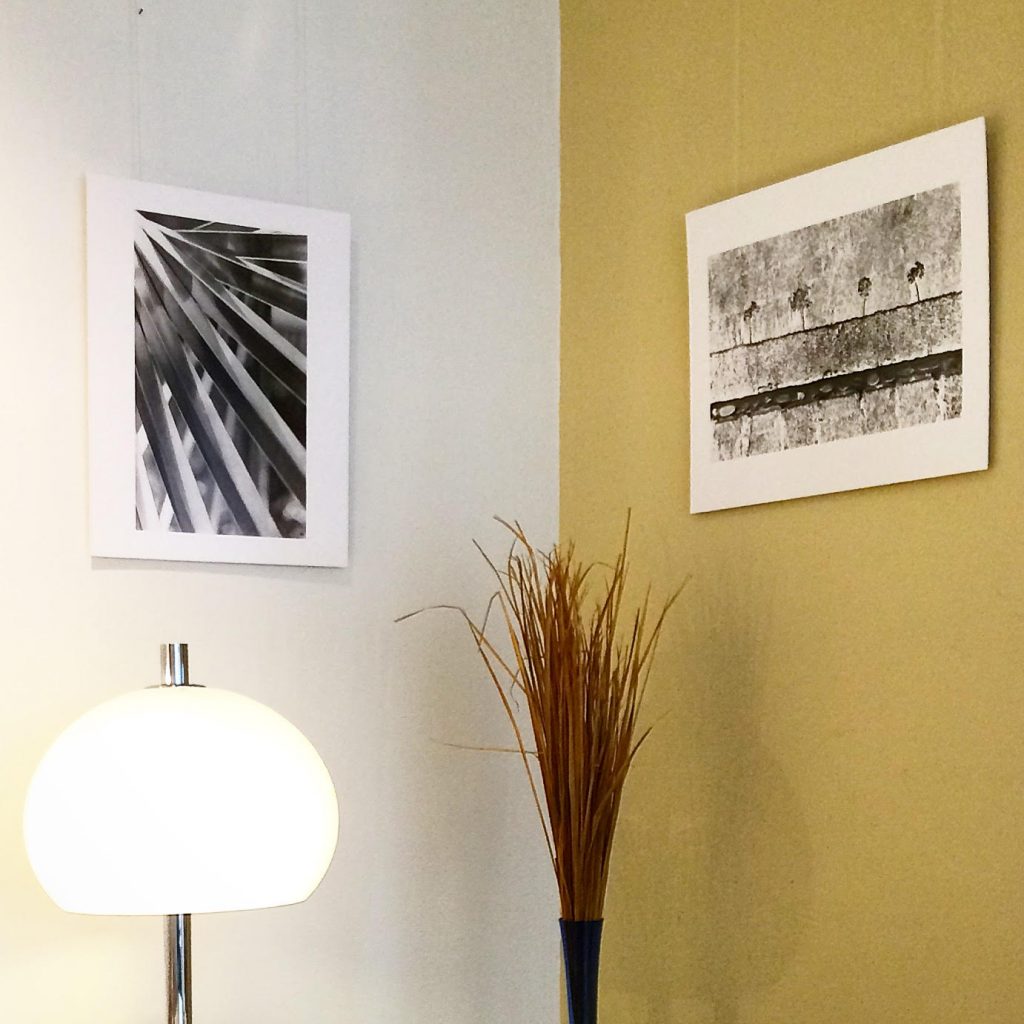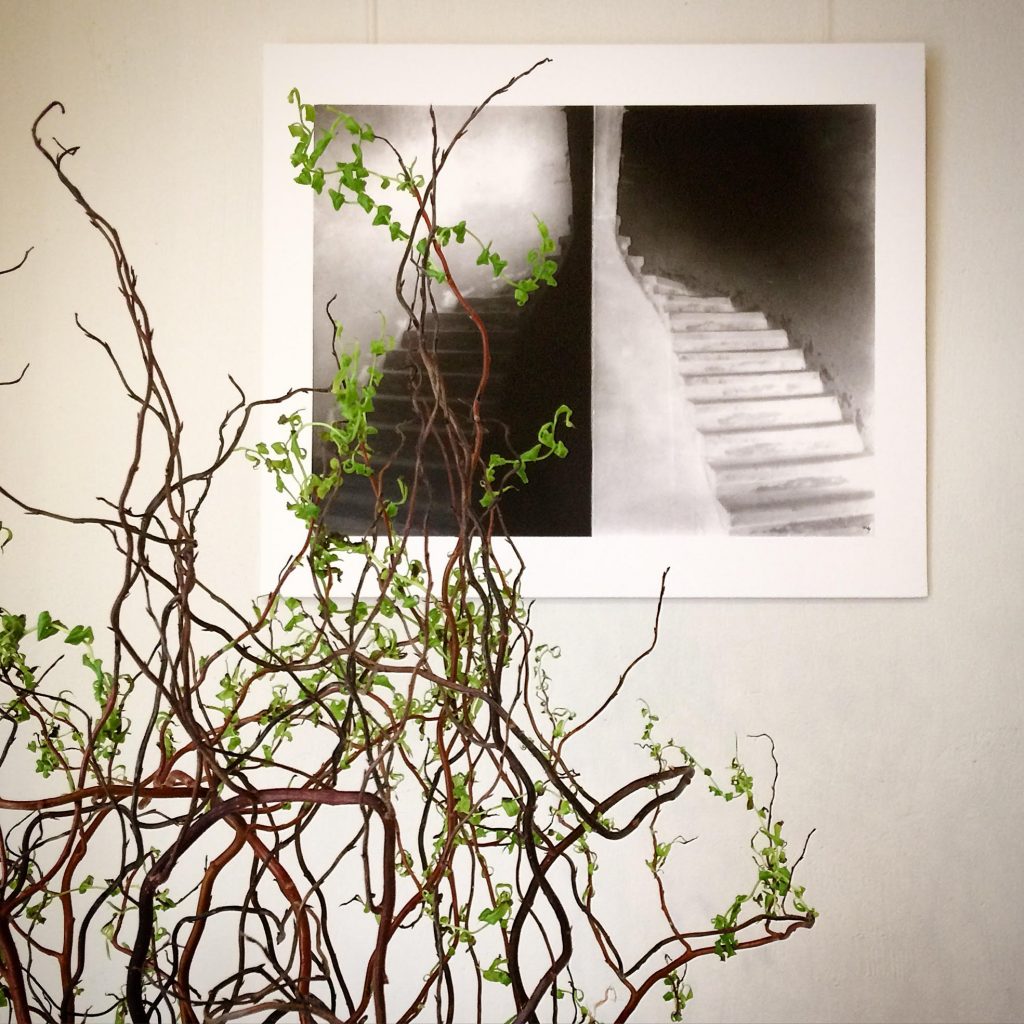.
- Publication in SHOTS Magazine
Publication in SHOTS Magazine
In the 2022 spring issue of Shots Magazine my Demonography project is published!
- Getting to know Adél in Sonntags Club in Berlin
Getting to know Adél in Sonntags Club
In the winter of 2021-2022 I had a wonderful exhibition of this intimate project.
The photographs and the description you can see here.
Exhibition view of “Getting to know Adel” in Sonntags Club © Csilla Szabo Photography - Fish & Clouds
Fish & Clouds
Fish & Clouds was a dual pop-up exhibition with my colleague and friend Hajnal Szolga in the Lokal Art and Project Space in Kreuzkölln, Berlin at the very end of August 2021.
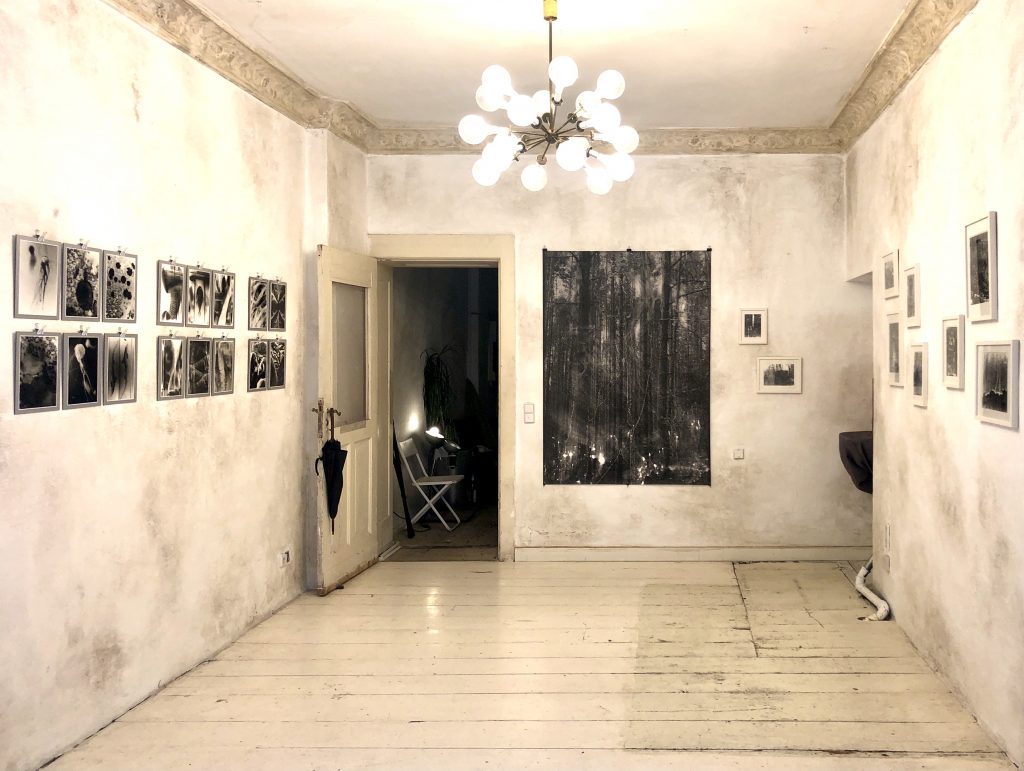
Exhibition view of Fish & Clouds dual pop-up exhibition © Csilla Szabo Photography The monochrome domain, the analog photographic methods, the different handcrafting techniques, and the manual manipulations are all defining, common elements. Like witches in the alchemist’s den, they abstract reality.
While Szolga clouds nature’s reality, and sensitively reimagines the man-made destruction of the climate, Szabo enlarges and magically transforms sea creatures into demonic totems.
Even though both artists travel on their own psychedelic path, their creations end up in a complementary, dual pop up show, in the Lokal Project Space in Kreuzkölln, inviting viewers to peek into these ghostly, abstract realities.
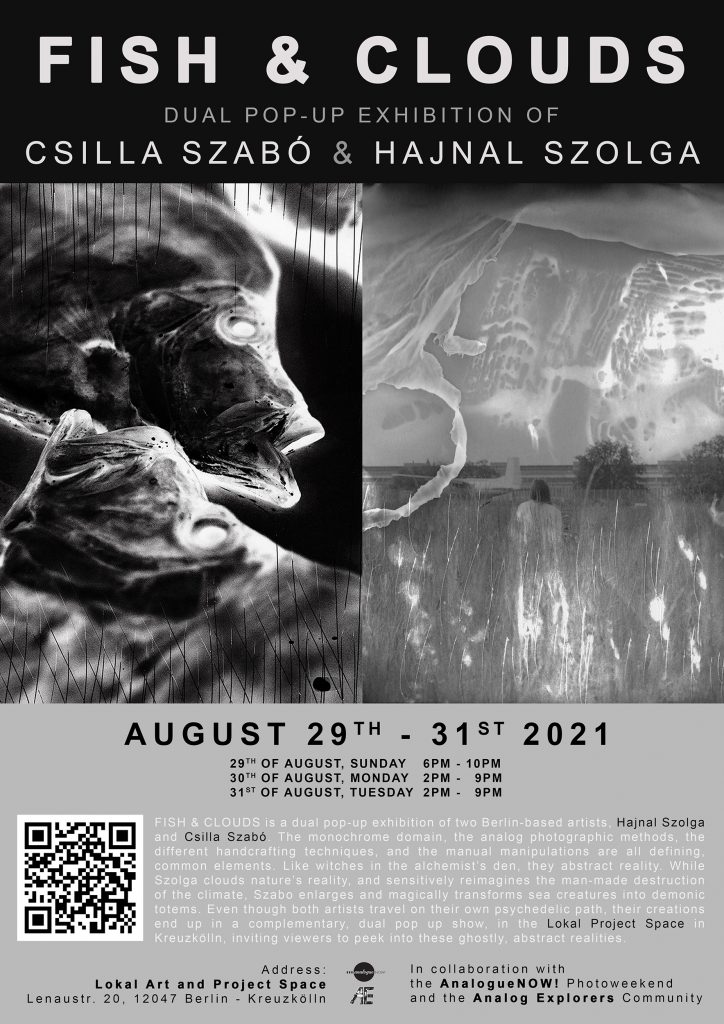
Poster of the Fish & Clouds dual pop-up exhibition © Csilla Szabo Photography The exhibition was self-organized and self-funded, in collaboration with the AnalogueNOW! Photoweekend and the Analog Explorers Community.
Exhibition view of Fish & Clouds dual pop-up exhibition © Csilla Szabo Photography You can see the whole project in detail with a beautiful text here.
- Wiederwachen
Wiederwachen
In the middle of the Pandemie I was invited by the curator and artist Semra Sevin to participate in an outdoor group exhibition.
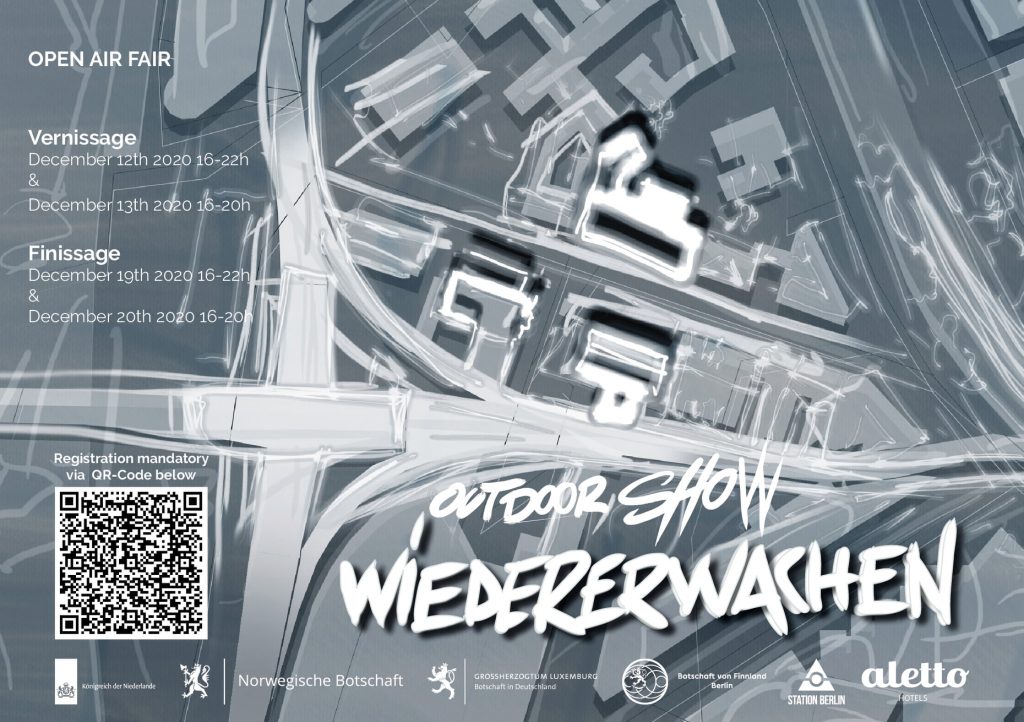
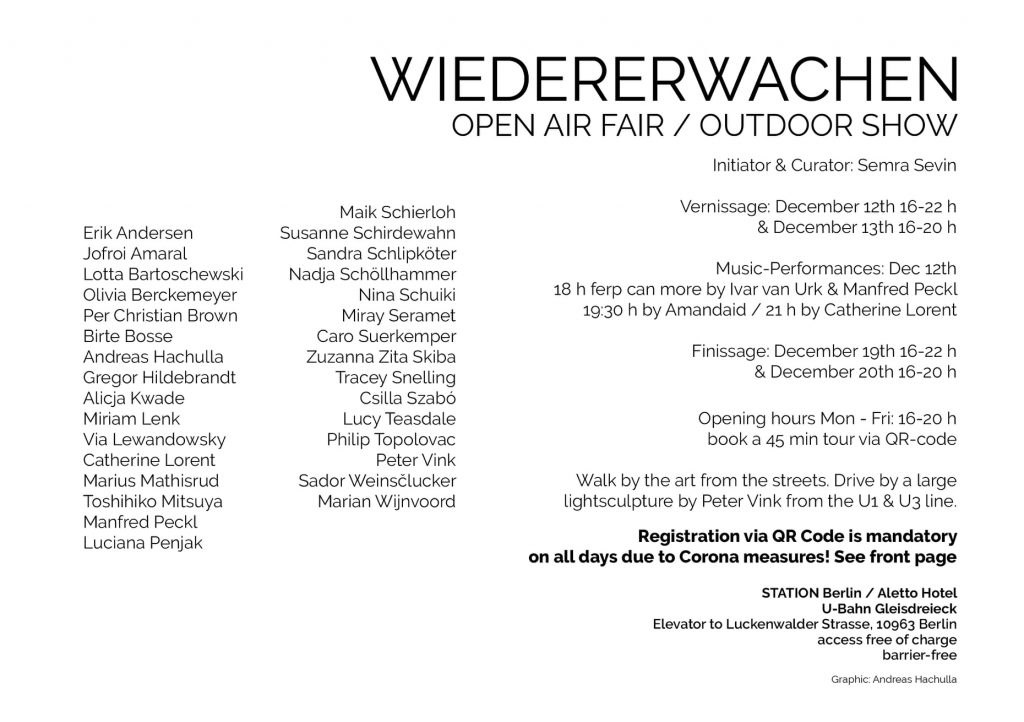
the flyer of the outdoor show Wiederwachen in Berlin With some hot spicy wine in hand, the art-hungry visitors were able to see some really interesting artworks in the freezing cold in the window shops of hotels, shops, surrounding buildings.
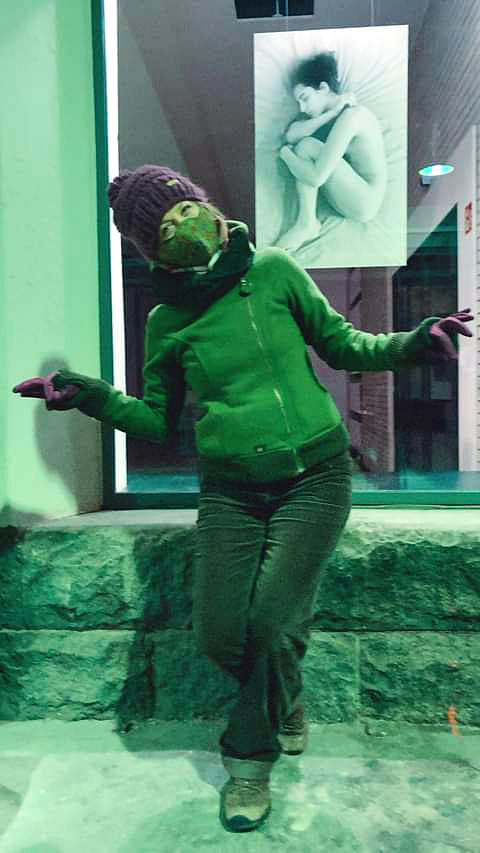
me in front of my piece on the Wiederwachen outdoor show in Berlin © Csilla Szabo Photography - Melt!
Melt!
During the Pandemie, when hardly anything happened artistically in the city, there was a brief ease on the rules around Christmas time, so with a few friends I organized a small group exhibition in the Producer’S Gallery in Prenzlauerberg.
Participating artists: Hajnal Szolga, Michi Hartmann and Macarena Sierra.
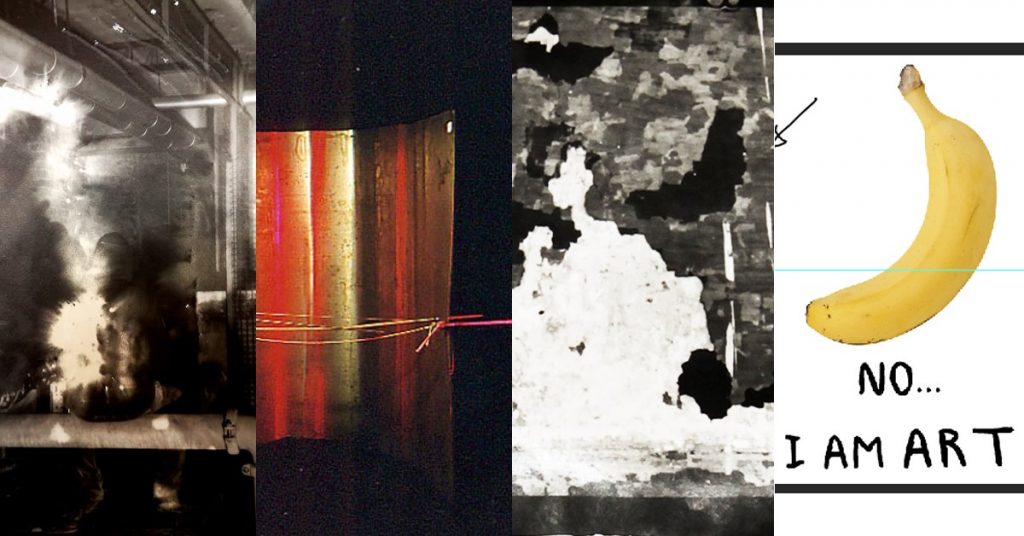
Because of the limited space I have showed an earlier series, which (as opposed to my usual big sizes) consists of small, hand-made pieces. I was experimenting with liquid photo emulsion, painting, tearing and sewing to create the one-of-a-kind artworks.
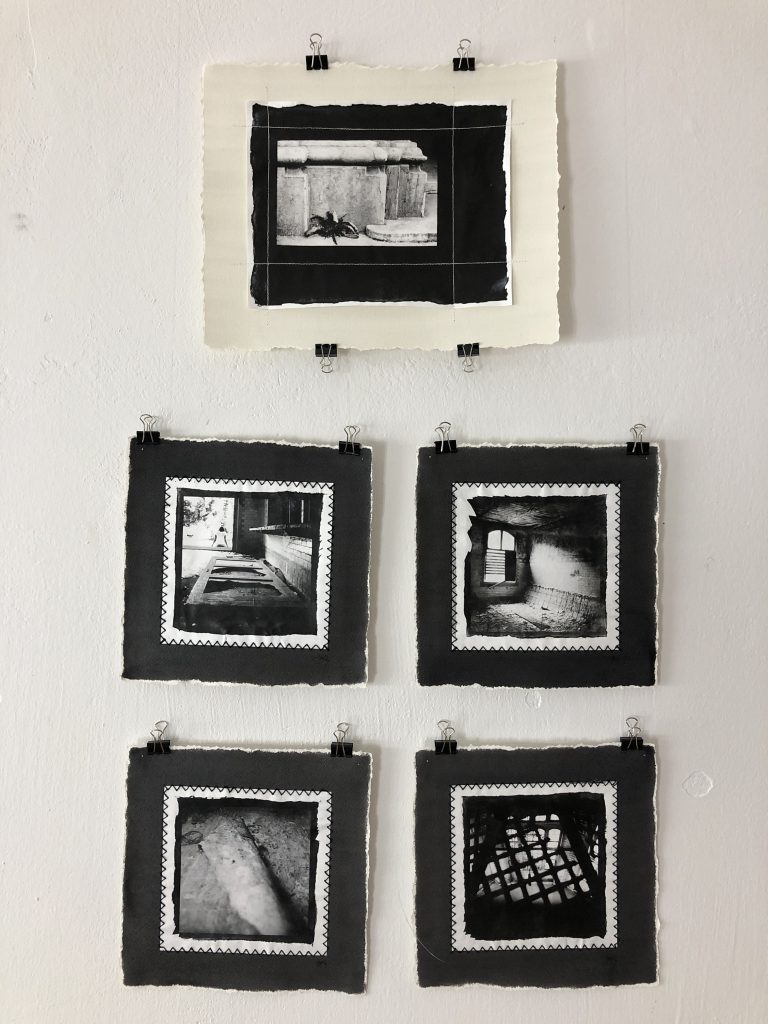
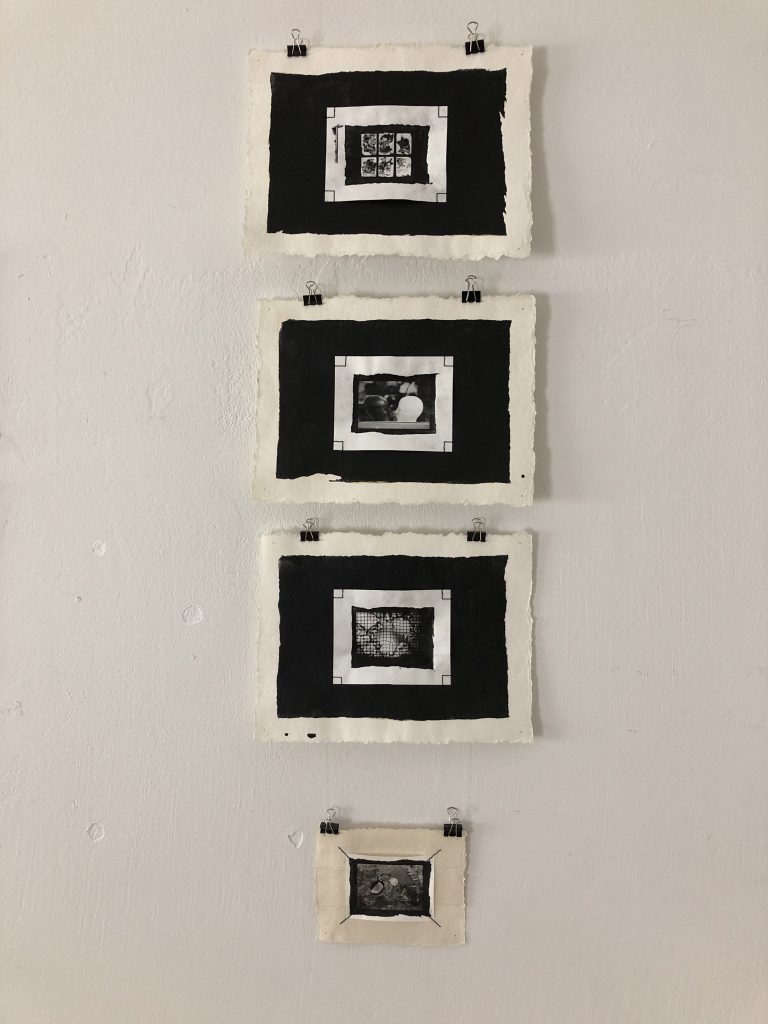
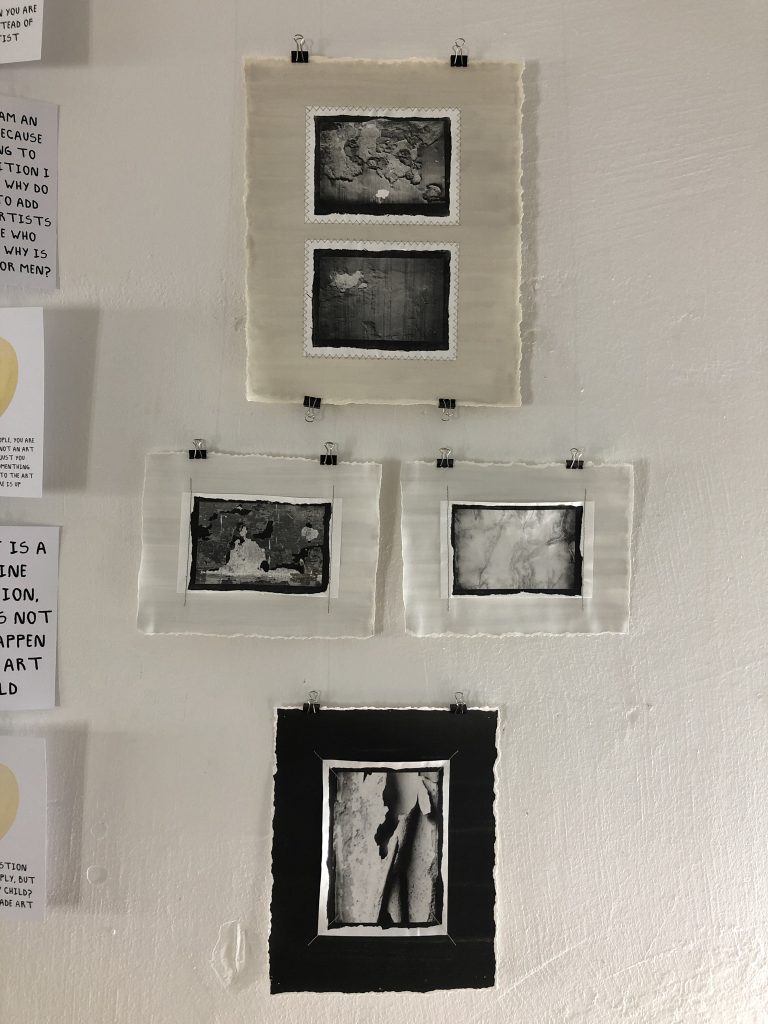
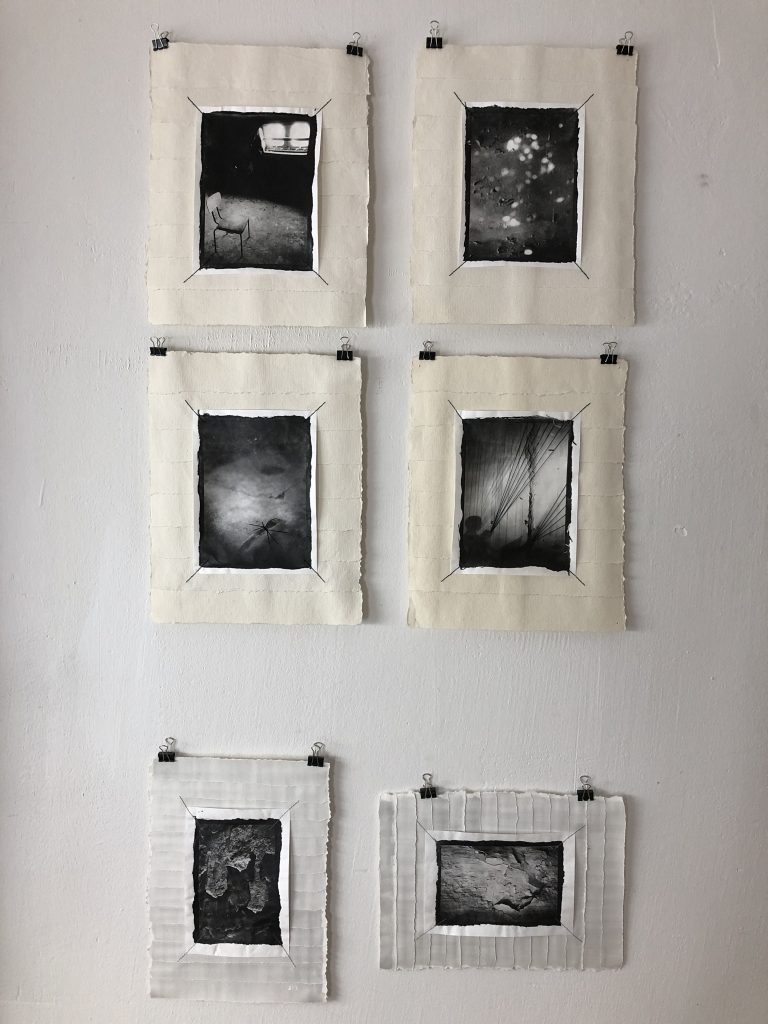
Installation view of my works at the Melt group exhibition in the Producer’s Gallery in Berlin, 2020 © Csilla Szabo Photography - Smokescreen
Smokescreen
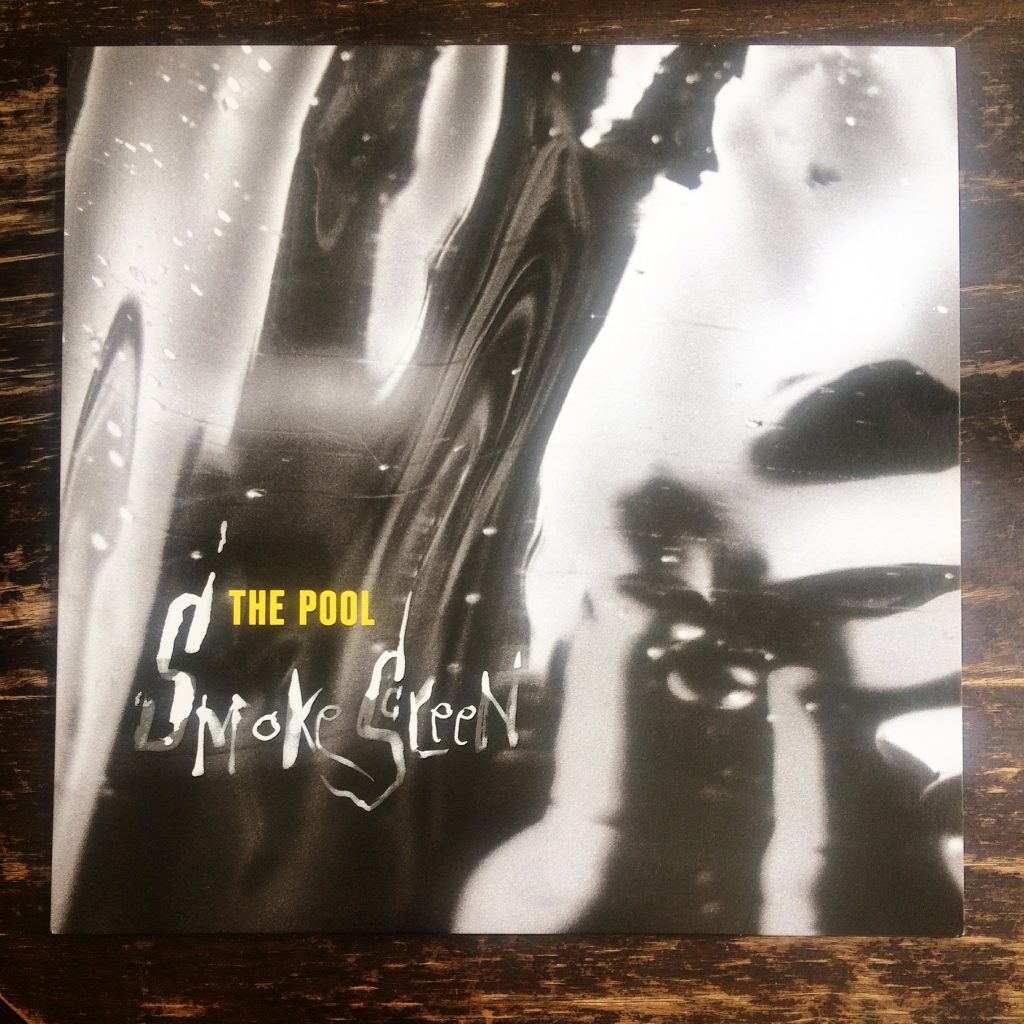
One of my picture was used for the LP cover of the Berlin-based wonderful The Pool band.
Design by the singer and dear friend, Martin Behrndt.
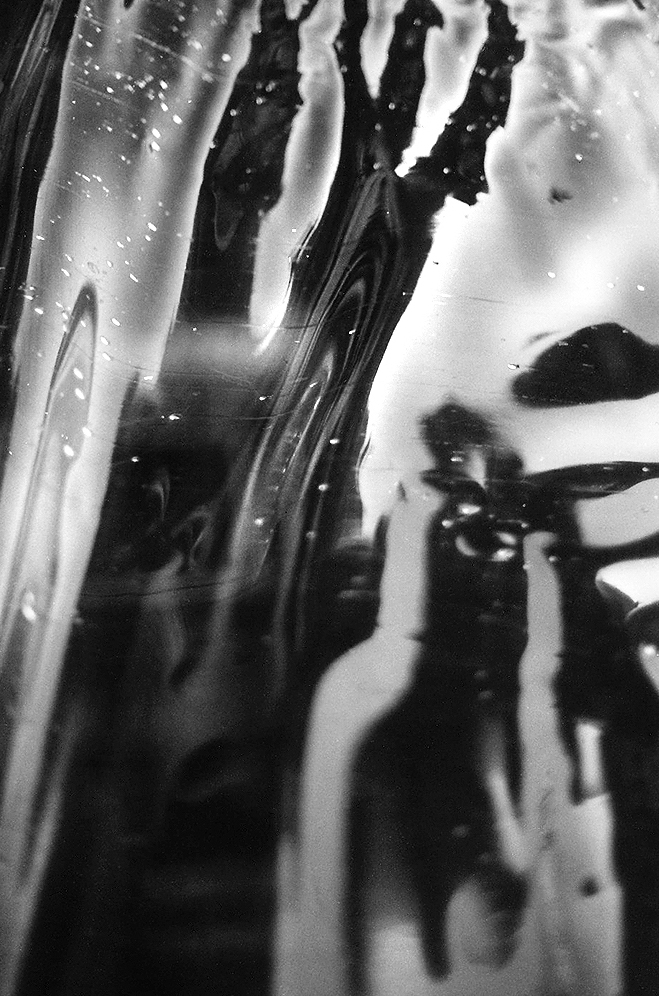
Haze 6, Silver Gelatin print, Edition of 7 - Fotóművészet
Fotóművészet
A 6 page publication in the Hungarian Photoart Magazine “Fotóművészet” in 2018, with the wonderful text by Andrea Bordács art historian.
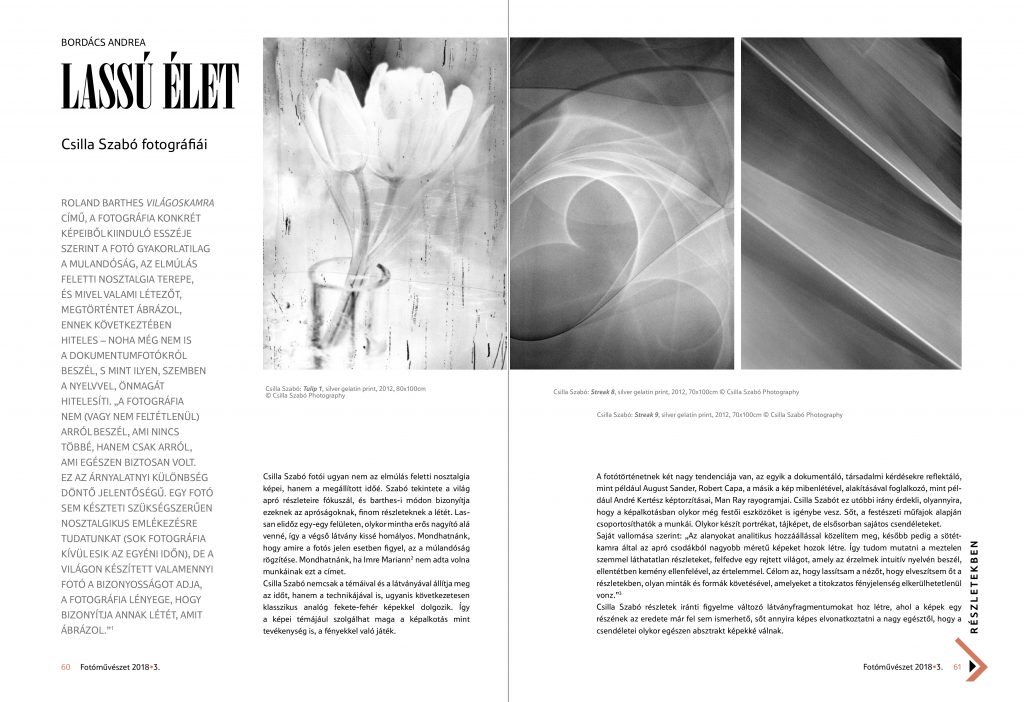
Publication in the Hungarian Photoart Magazine in 2018 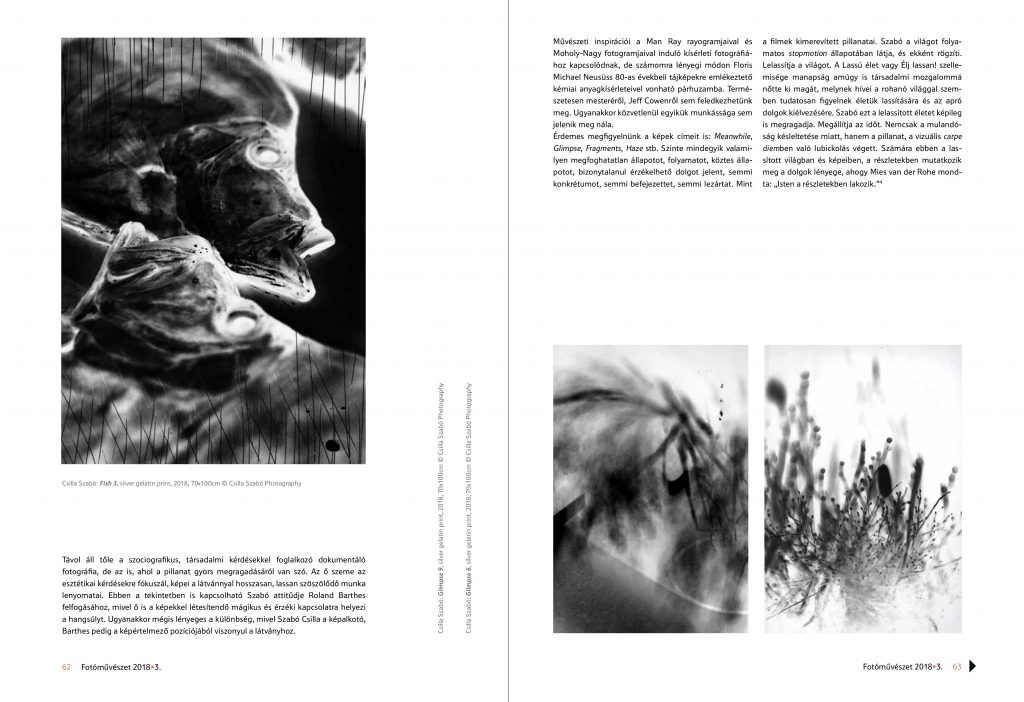
Publication in the Hungarian Photoart Magazine in 2018 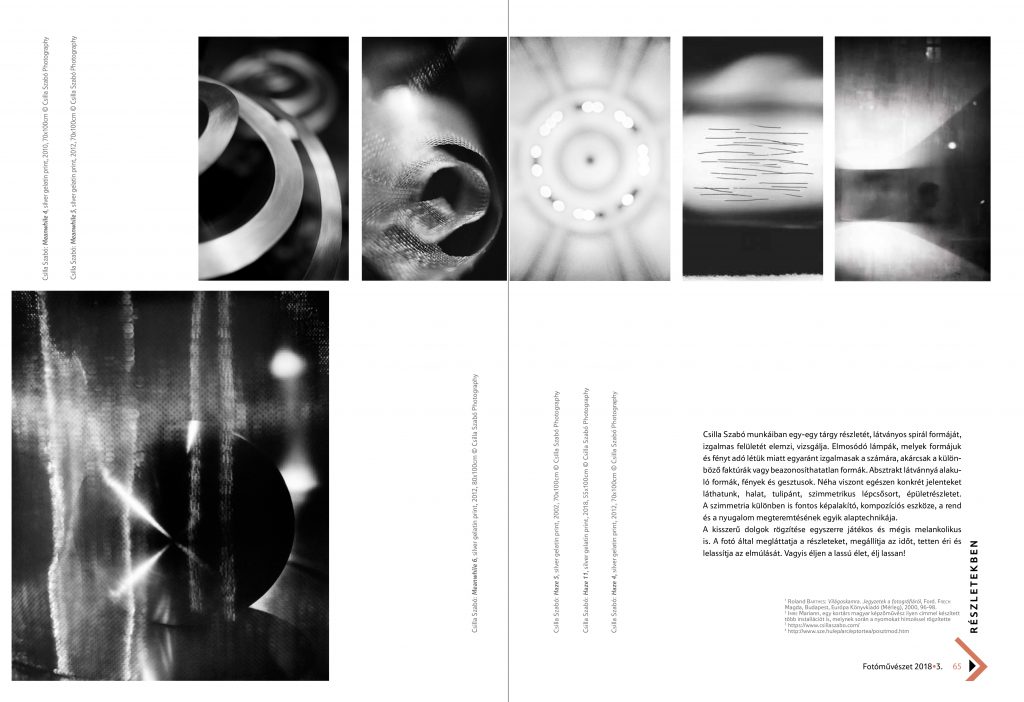
Publication in the Hungarian Photoart Magazine in 2018 The text in English:
Andrea Bordács:
Slow Life – The Photography of Csilla Szabó
In Camera Lucida, Roland Barthes discusses figurative images, stating that photography itself is basically the field of decay and nostalgia for the past and times gone by, depicting something real, something which has happened. For this reason, without even talking about documentation, it is authentic, and therefore as opposed to language, it authenticates itself. “Photography is not (or not necessarily) talking about what does not exist anymore, but about something that certainly existed at some point. This small difference is crucial. No single photograph pushes our intellect to nostalgic remembrances (lots of photographs exist outside of subjective time), but every last photograph that has been taken proves that certainty, that the essence of photography is that it proves the existence of its subject.”
Csilla Szabó’s photographs are not pictures of nostalgia over passing time, but of time stopped. Szabó’s vision focuses on the tiny details of the world, and proves in Barthes’ way, the bare existence of these small, elegant details. She slowly takes her time on surfaces, sometimes it is as if she is holding them under such a strong magnifying glass that the final look is somewhat blurry. One could say that what the photographer really focuses on is the recording of the decay. One could say, if Mariann Imre had not already given the same title to her works.
Csilla Szabó does not simply stop time with her subjects and way of picturing them, but also with her techniques too, using the medium of classical analog black and white photography. Even her way of capturing subjects can become the central theme with her playful use of light.
Photo history has two great tendencies: one in the documentarian sense; socio-reflective, like the works of August Sander and Robert Capa; the other focusing on the aesthetic of pictures, like the distortions of André Kertész or the rayograms of Man Ray. Csilla Szabó’s interest is the latter. Furthermore she uses aesthetics from painting; indeed her entire body of work can be distinguished in genres from painting: she depicts portraits, landscapes, but focuses mainly on unique still lifes.
In her own words: “I approach my subjects with an analytic attitude, creating larger-than-life-sized images of tiny wonders in the darkroom. In this way I am able to showcase the minute details invisible to the naked eye, revealing a hidden world that speaks in the intuitive language of emotion, unlike its hardened opponent, the intellect. My intention is to slow down the viewer, to get them lost in the details, by following patterns and forms that the mysterious phenomenon of light inevitably draws.”
Csilla Szabó’s attention to detail creates different visual fragments, where parts of the original subjects cannot be recognized anymore, sometimes completely transforming her still lifes into abstract pieces.
Szabó is not interested in documentary photography, which focuses on social questions; neither is she interested in the kind of images which are solely about capturing a moment. Her eyes focus on the aesthetic; her pictures are the imprints of an extended, detailed finessing of visual elements. Her attitude can be connected to Roland Barthes’ in this regard as well, as she too lays the stress on a magical and sensual relationship with pictures. At the same time, there is an important difference, as while Csilla Szabó relates to the scene from the position of creation, Barthes does so from an explanatory position.
Her artistic inspirations connect to the early experimental photography like the rayograms of Man Ray and the photograms of Moholy-Nagy, but for me they line up closer to the chemical experiments of Floris Michael Neususs from the 80s, which remind the viewer of landscapes. Naturally we cannot overlook the influence of her mentor, Jeff Cowen either, but at the same time, none of these photographers’ work appear directly in hers.
It is interesting to look at her titles too: Meanwhile, Glimpse, Fragments, Haze, etc. Almost all are something ungraspable state, a continuance, an in-between-state, things that can be sensed with uncertainty, nothing is concrete, nothing is done, nothing is finished. Like the frozen pictures of a movie. Szabó sees the world in a continuous stop-motion state, and records it as such. She slows down the world. The idea of Slow Life or Living Slow has grown into a social movement, where as opposed to the rushing, fast world, they focus on slowing down life, and enjoying the small things. Szabo grabs this slowed life photographically. She stops time. Not only to stop decay, but for bathing in the visual carpe diem of the moment. For her, the true essence of things shows up in this slow, subjective world. As Mies van der Rohe said, “God lives in the details”.
While photographing, she analyzes and examines her subjects’ details, exciting forms, and interesting surfaces. Washed out lamps interest her for their light-giving attributes and the different factures and indescribable forms they produce. In her work shapes, lights, and gestures turn into an abstract vision. Sometimes we can also see concrete subjects: fish, a tulip, a symmetrical staircase, and building-details. Symmetry is also one of the foundational techniques she uses, creating by composition, balancing order and stillness.
The depiction of tiny things in Szabó’s work is playful and yet melancholic. Through her photography she showcases details, stopping time, capturing and slowing down decay. So, long live the slow life: live slow!
- Dear future me
Dear future me
Photoexhibition complementing a theater piece by Adel Onodi, in the Bakelit Multi Art Center, Budapest, Hungary, in 2018.
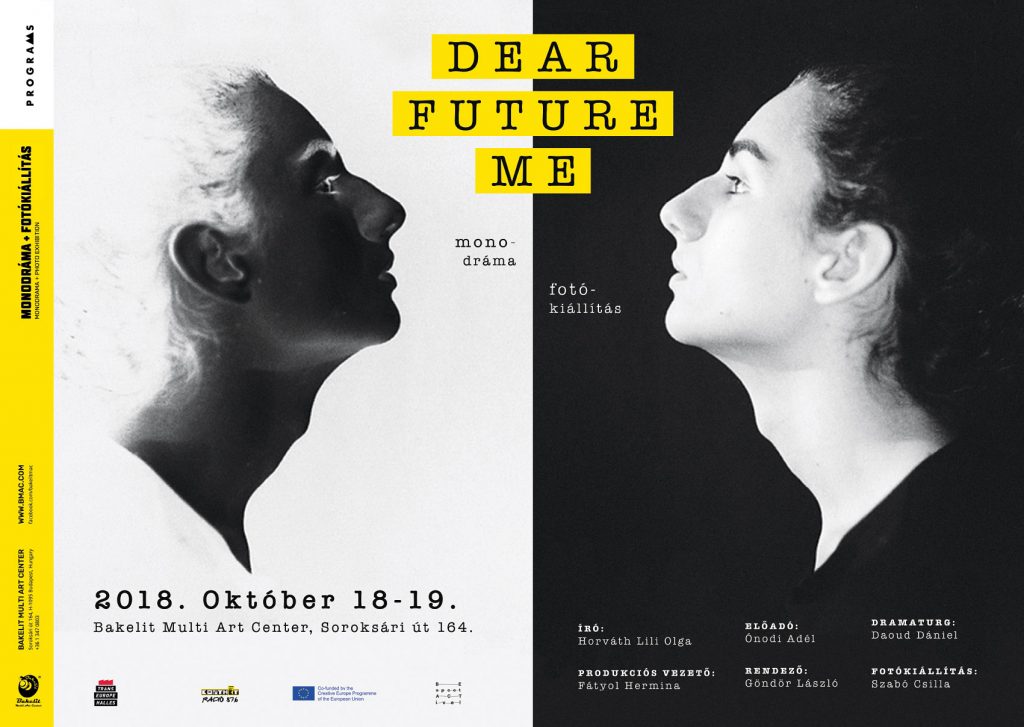
Poster of the Dear future me exhibition A photo series about Adel Onodi, about being transgender, about (self) acceptance, about transformation.
You can see all the pictures and the project description here.
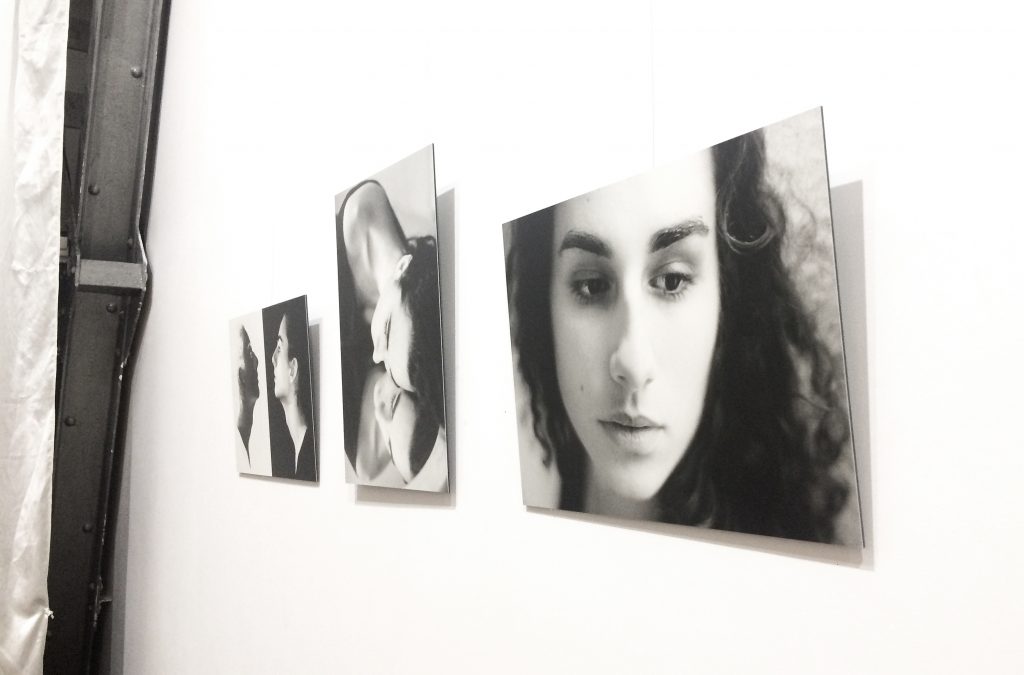
Installation view of the photoexhibition in the Bakelit Multi Art Center, Budapest, 2018 Installation view and opening reception of Dear future me in the Bakelit Multi Art Center, Budapest, Hungary in 2018 - Demonography
Demonography
— in memory of Marcus —
An exhibition of a series of mural-size photographic prints installed with music composed specifically for each individual photograph, in the Small Water Reservoir in Prenzlauerberg, Berlin, in the autumn of 2018.
A collaboration project with Marcus Fjellström Swedish composer, I finished it to tribute his wonderful work and our friendship after he sadly passed away.
In an installation setup, the demons were mounted on the walls of the exhibition space, while the individual sound pieces are played consecutively in a loop over loudspeakers installed behind each photograph.
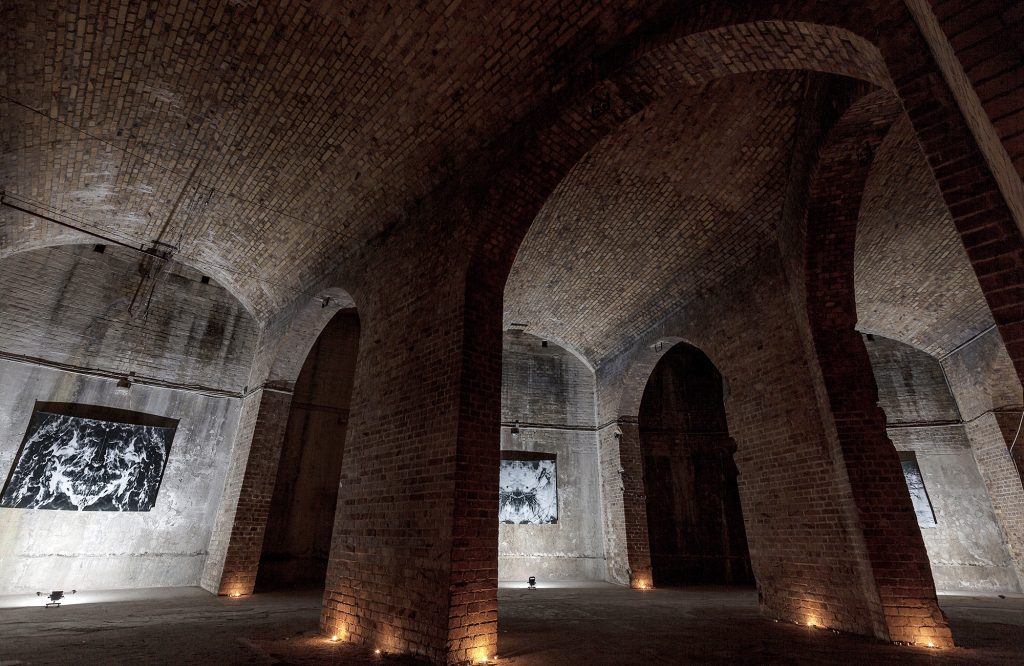
Installation view of Demonography Exhibition The former Wasserspeicher in Prenzlauer Berg is an extraordinary structure, dazzling audiences with its underground arcades and ageing red brick textures. Over the years, this unique place has been hosting various performances and installations of sound, light and video.
The excellent acoustics of the space, coupled with its unique underground scenery of a circular structure, makes it a perfect venue for this particular show. As the spectator stands at the centre of the space, surrounded by the imagery and the multi-directional sound, a fully immersive atmosphere is created which in turn helps to bring the demons to life.
You can see the photographs and read the project description here.
Installation pictures of Demonography Exhibition in the Wasserspeicher Prenzlauerberg, photos taken by me and Louis Fernandez This exhibition was crowdfunded and self-organized, it could not have happened without the generous help of friends, friends of friends, and contributions via crowdfunding and donations.
Special thanks to:
Production manager: Royati Ami Sound: Dave Senan Installation and event managing: Réka Dávid, Gyula Sági, Lucio Fernandez, Bálint Meggyesi, Louis Fernandez, Stew Bamrah Teaser video: Johan Planefeldt Event photographer: Louis Fernandez Drone shots: Bálint Meggyesi Liaison of location: Barbara Fuchs
Contributors: Andy Greenaway, Maxine Chong, James Ginzburg, Mark Wiggins, Sören Hermansson, Simone Richter, Gergely Péter Barna, Anton Grandert, Trinka Endaya, Laurent Verrier, Denise Langenhan, Melati Misti, Christopher Gramer, Martin Behrndt, Carsten Schmitz, Claire Teng, Eric Chan, Paul Bryan, Alexandra Ni & Bill Cook, Rowena Yee, Nadine Stewart, Christina Spindler, TJ Lee, Lenny Haslinda, Gemma Comabella, Ádám Földes, Jarosław Kamiński, Hilary Lee, Fatoma Alladin, Bernard Schembri, Frank Meng & Ildikó Puskás, Pilvax, Robert Kalman, Alexa Echavez, Andrea Serafini, Nora Amin, Nicholas Reynolds, Mark Verhaagen, Zora Gabrovsek, Tom & Sharon Ormes, Daniel Saul, Lucas Burrows, Florian Kaltenbach, Rocío Huertas Jiménez, Amy Louisa Lau, John Neilan, Tuesday Co-working, Alexander Holland, Katja Locke, Nicolas Grognet, Albatross Bakery, Richard Blaha, Marcell Csókás, Russy family, Maria Caio, Frederic Tissier
- Tbilisi Art Fair
Tbilisi Art Fair
In 2018 I was invited to the Tbilisi Art Fair to exhibit a few works of mine in the Hive section and also to do a “happening” on the Art Fair.
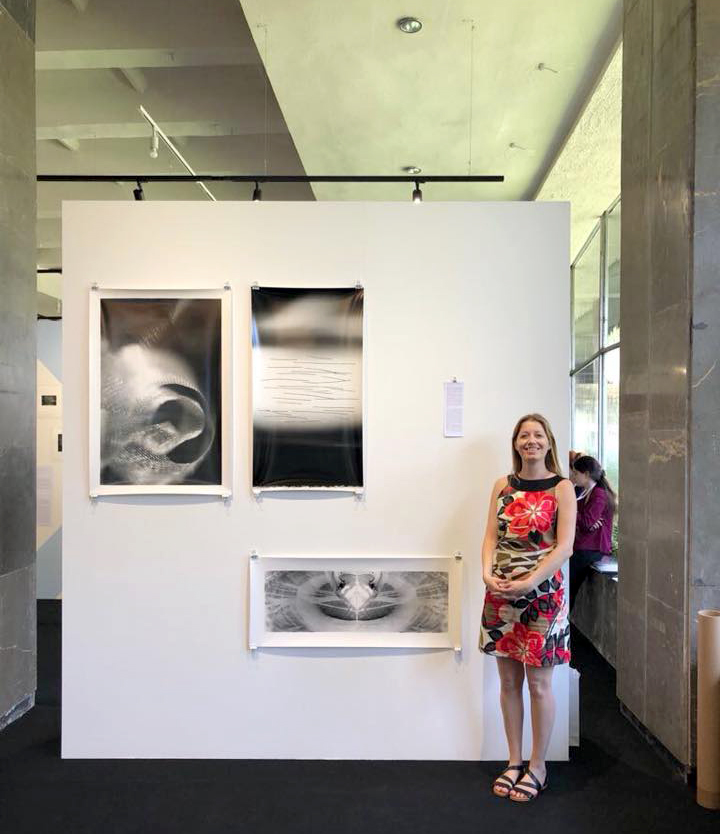
Csilla Szabo in front of her wall at the Tbilisi Art Fair I have brought my large format camera and set it up in front of the Hive section building to take portraits of the visitors. I also set up a mini labor where I immediately developed the direct positive papers, then I hang them on a tree to dry. Each photograph is one of a kind, and the visitors were able to take them with them once they dried.
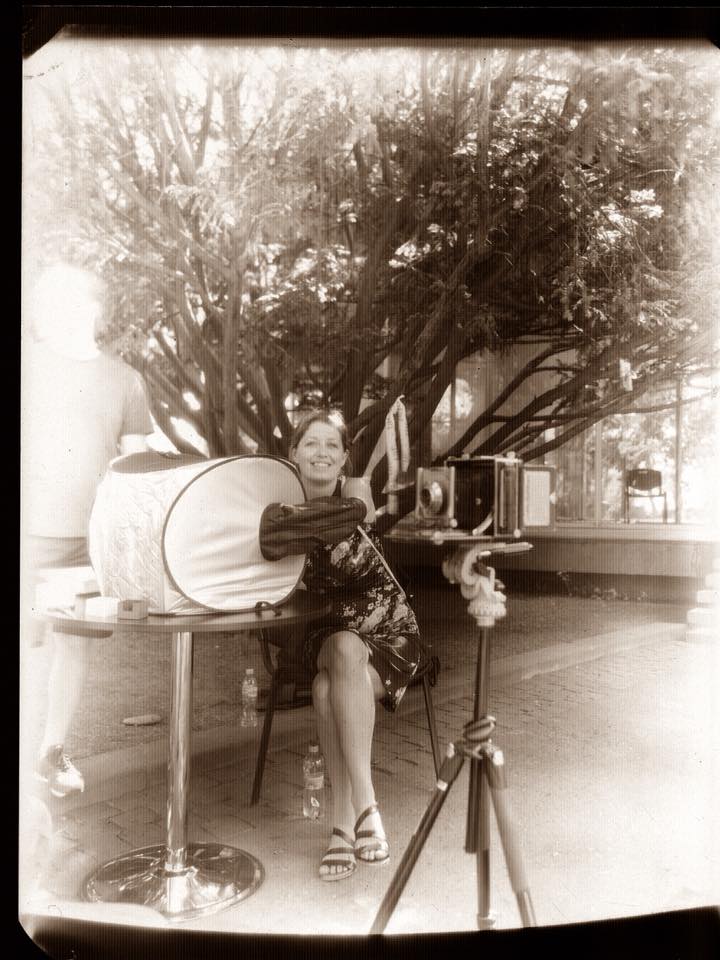
Developing pictures on site on the Tbilisi Art Fair – photo taken by Aleko Tsanava 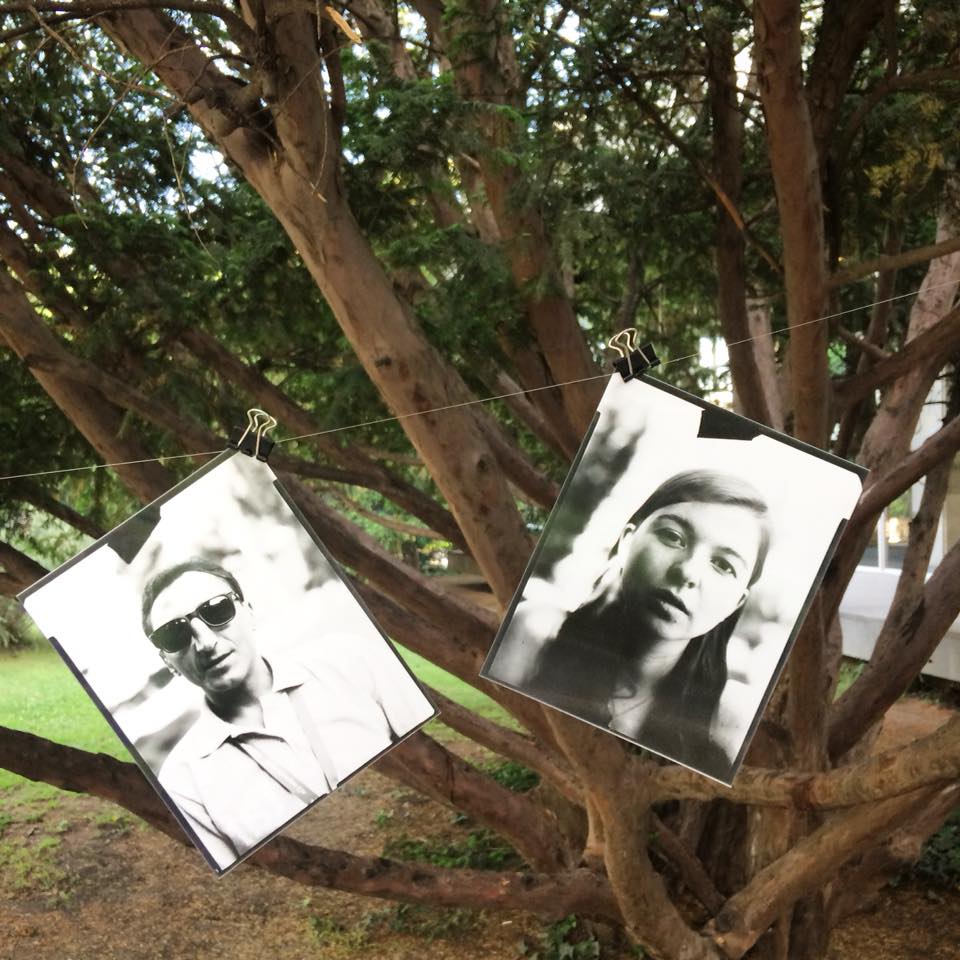
portraits made on site are hanging on a tree to dry on the Tbilisi Art Fair - Catalogue publishing
- Publication in Marie Claire Hungary
Publication in Marie Claire Hungary
My portrait (on the right) of Adél Ónodi was published in the June 2018 issue of Marie Claire Hungary, to accompany the article about this brave lady’s life and a teaser of our artistic project that will be exhibited in the fall.
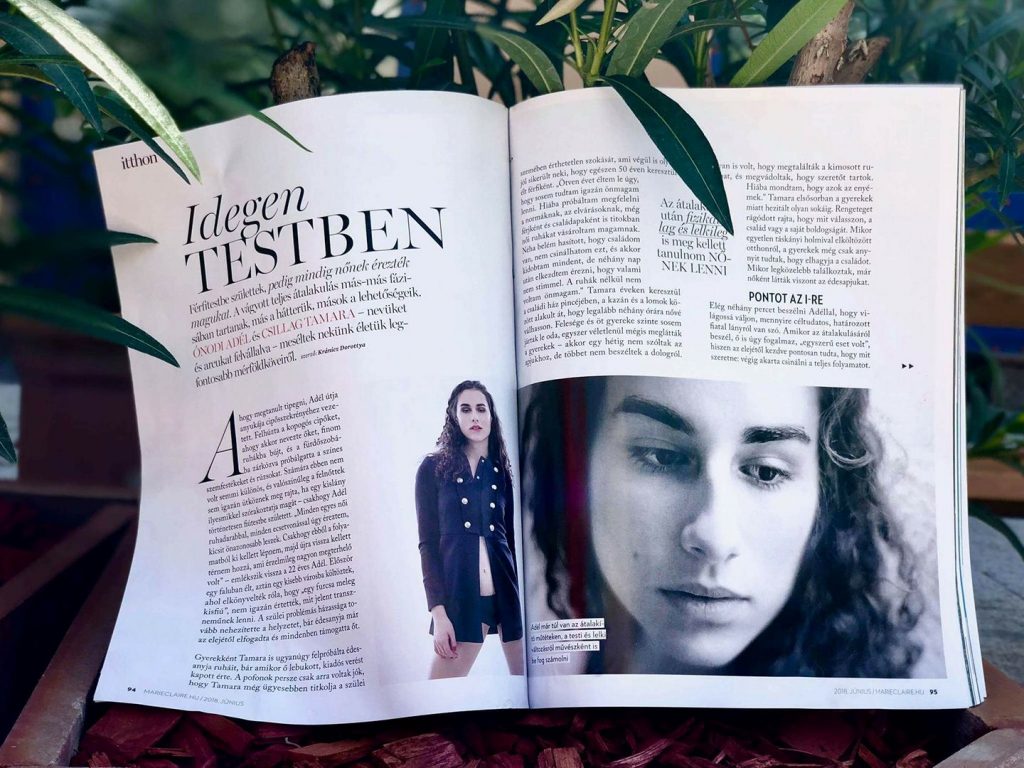
Csilla Szabo Photography portrait of Adel Onodi in the Marie Claire Hungary Magazine in 2018 June - Publication in Aiolos
Publication in Aiolos
My work has been published in the newest issue of Aiolos, which is a wonderful Swedish Literary Magazine. I was chosen as one of the visual artists that they would show through the magazine – I have 18 works printed full page. I wish I could read the poems and essays too!
Csilla Szabo Photography published in Aiolos Magazine - Publication in Interior Design Book
Publication in Interior Design Book
In 2017, when the Ritz Carlton Hotel Budapest was renovated, I was one of the artists they chose to purchase artworks from for the interior. The internationally renowned interior designer, Kelly Hoppen published a book about her work, which also contained interiors from the hotel, one of them with my picture on it.
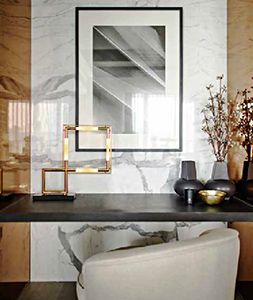
Csilla Szabo Photography in the interieur of Ritz Carlton Hotel Budapest in the publication of Kelly Hoppen interior designer. - Studio visit and interview by Artig Gallery
Studio visit and interview by Artig Gallery
Artig Gallery visits my studio!
Art Magazine – Analogue Photography by Csilla Szabó
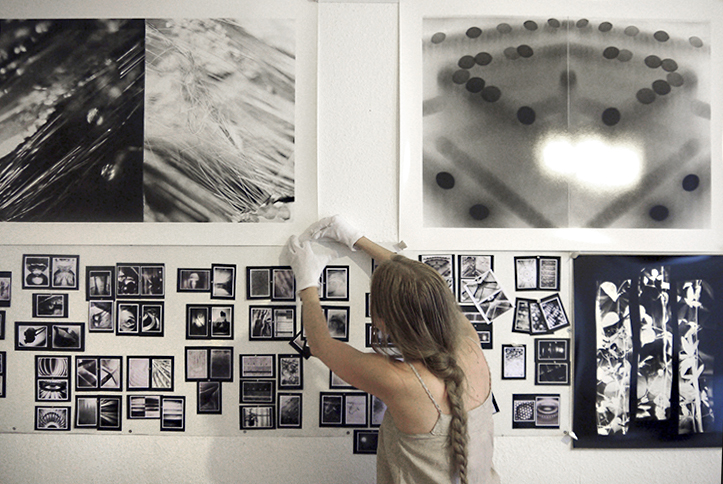
Artig Gallery visits Csilla Szabo in her studio for an interview in Berlin in 2016 © Csilla Szabo Photography Why and how did you fell in love with photography?
When I was around 23-24 years old I felt a needed a change in my life. I wanted to do something different with a meaning for me. Therefore I decided to fly to Japan & South Korea to figure out what I wanted to do.
The cultural and scenery was so different, I couldn’t stop taking pictures with a small digital camara I bought there. I was so inspired, that when I arrived to Hungary I decided to enrol myself to a photo school. Later on, I had the chance to start working with Jeff Cowen who only worked with analog, and it was then when my passion went to the surface.
What is the first picture you shot?
The first analog picture I took was while I was still studying photography in a trip we did to a castle in Budapest where I took several close ups. I didn’t even know how to put the film into the camera, but I remember my excitement to take a picture I couldn’t directly see the results but had to wait to develop the negatives.

Artig Gallery visits Csilla Szabo in her darkroom in Berlin in 2016 © Csilla Szabo Photography Why analog photography in a completely digital world? What do you think is the difference between these two worlds?
First of all, just want to clarify I’m not against digital photography. I believe this is necessary and makes sense for many areas as product photography, journalism, advertisement etc…
Nevertheless I understand artistic photography a bit as people could see a painting. I mean, if we look back, in times where photography didn´t exist, kings, nobles etc.. asked for painted portraits to represent the reality. I believe analog has the same artistic meaning, it´s just the next step of painting evolution.
I personally love analog photography because of the grain in the picture. It is this beautiful pattern that obsesses me, together of course with the whole manual process of the development with the several chemicals, the rubber gloves, in the dark, rolling the paper… – I would not want to change it to sitting in front of a computer screen!
In analog pictures, you really need to think before you shoot. There are not so many tries and I really take a lot of time to think what I want to have, how to crop it etc…because the process until the final art piece is done will be rather slow.
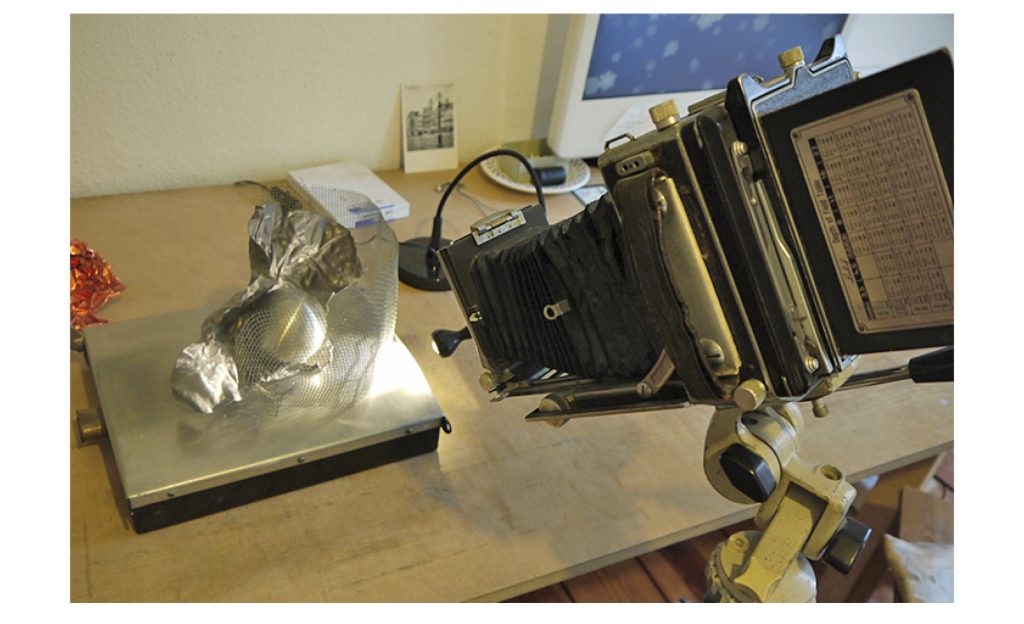
Artig Gallery visits Csilla Szabo in her studio in Berlin in 2016 © Csilla Szabo Photography How was it working with a known artist like Jeff Cowen ? What did you learn from him?
He was a perfect coincidence, he appeared in my life at a I really needed it. With Jeff I was able to get deep in the analog photography, to understand his technics and appreciate the freedom how he is able to use the tools.
I could basically summarize my learnings in two: Technical and Wisdom
With this I mean, not accepting anything that’s below perfect but always with a playfull attitude and remaining inventive, how to treat technically the negatives and edit the upcoming work, how to never be lazy with the archaic of the chemicals, why it´s important to always listen to your intuition, how to balance your eye and inner-sense, and how to select my pictures ruthlessly, using only the few strongest shots instead of many mediocre ones.
Jeff was my main mentor and with him I understood that in visual art, the art goes above the concept and how important is to work hard is but also be able to slow down and take some space back to be able to see the art with a different angle.
Why is your photographic work based on portraying inanimate objects? Would you encourage to make a series of portraits?
Actually, this is a funny question. I got the camera as a present from Jeff and at that time I was a very shy person, actually too shy to go out and inspire myself. That´s why I preferred to shoot at the studio, where I could focus on the product and the camera.
Through the years, it’s not the shyness anymore and I now I also enjoy shooting outside the studio but my interest remains in the abstract and that´s why I transform nature to inanimate products and scenes. I’m all about abstraction, let my subjects be objects or nature, so Portraits not for now, but later on, who knows! 😉
Who is the photographer who admire the most?
Lee Miller –for her amazing life as a photographer in an amazing time in (art) history.
What famous photo you change your life?
The Rayograms of Man Ray – I’m already working on exciting new ways of manipulating pictures on the analog way and I’m planning on doing even more in the future.
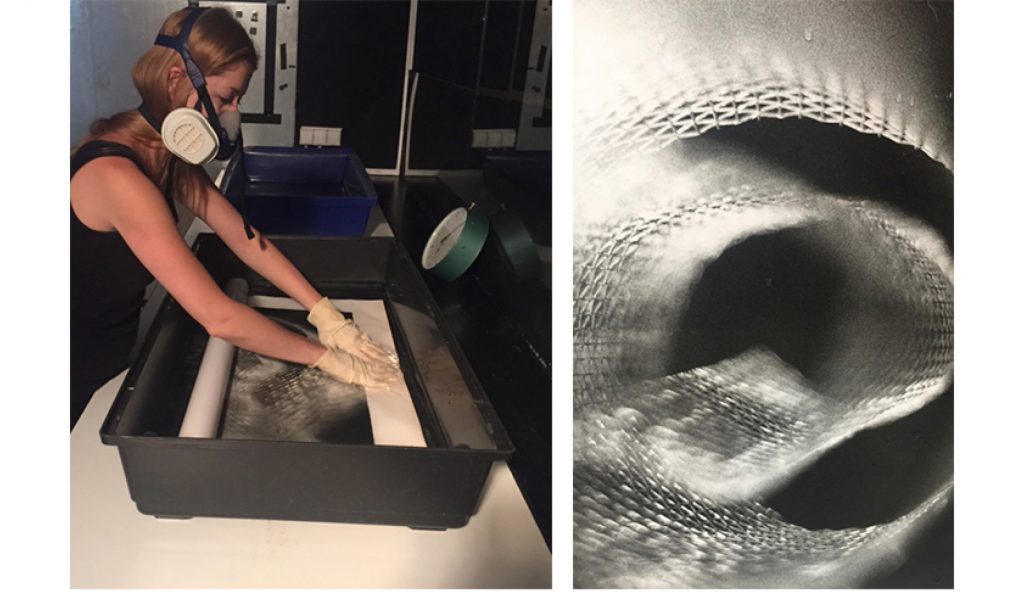
Artig Gallery visits Csilla Szabo in her darkroom in Berlin in 2016 © Csilla Szabo Photography Direct questions
What did you have for breakfast today?A coffee and a cigarette.
Do you have a hideaway in Berlin?Some spots next to the canal
Who is your hero?Jeff Cowen
What would surprise people to know about you?I nearly didn’t pass my practical photography exam before graduating and now I could actually teach there!
What is your personal luxury?Photography supply
Your favourite artistic movement?Avanguard Czech movement
Your 3 favorite photographers?Eugen Wiskovsky, Margaret Bourke-White, László Moholy-Nagy
When do you create your best work?In the dark, in the night and with music
Who inspires you?Can be anything. It’s very special things that I find on the way and I suddenly need to stop to take it to the studio or take a picture there.
Describe your artistic style in 3 words:Abstract, patterns, light
Which advice would you give someone who is just starting his or her artistic career?
Work hard, for yourself (in your little bubble without the outside voices). Nobody will spend so much time and attention as you in your work, so don´t be afraid and be your own judge.
- Publication in Brennpunkt Magazine
- Photographic works exhibition
- Light & Shadow exhibition
Light & Shadow exhibition
Participation in the Light & Shadow group show in the Ph21 Gallery in Budapest, Hungary in 2015.
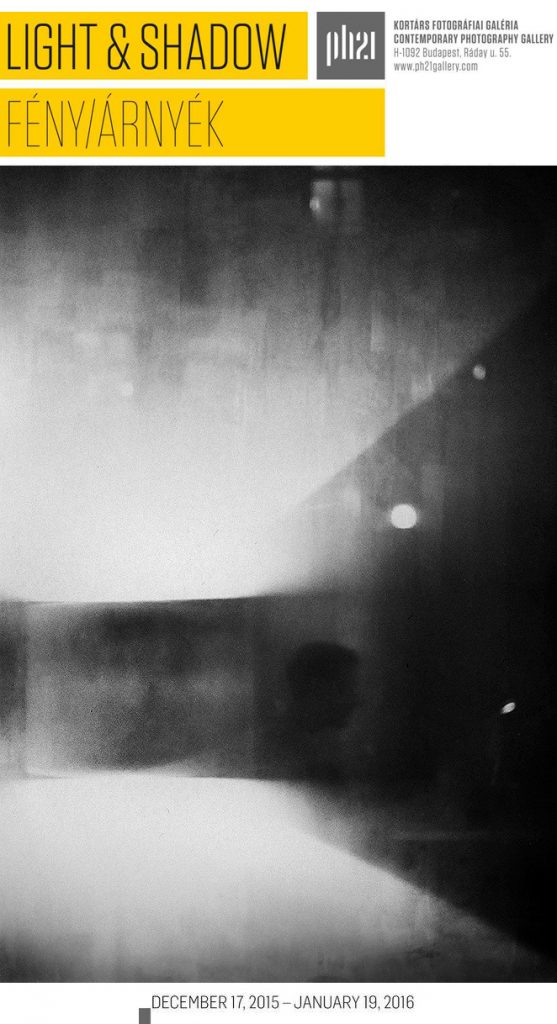
Haze 4, 50 x 60 cm, Silver Gelatin Print, Edition of 7 © Csilla Szabo Photography A juried international photography exhibition.
Creating unique effects with lights and shadows captured by a camera is, according to many, one of the most intriguing means of photographic expression. Photographers have relied on the possibilities offered by the creative use of lights and shadows throughout the history of photography. In some cases lights and shadows are used to the effect of creating a formal compositional element; in others their role is to guide our gaze or focus our attention on specific parts of the image. Some images that rely on the interplay between light and shadow are dark-toned, while others present brightly lit scenes. The ways lights and shadows contribute to photographic meaning only depend on the imagination of the photographer.
- Oase exhibition
Oase exhibition
Group-show participation in the Povvera Projektraum in 2015.
Curated by Eniko Marton, the other invited artists were: Edith Kollath, Chelsea Leventhal, Tobias Löffler and Gyula Sági.
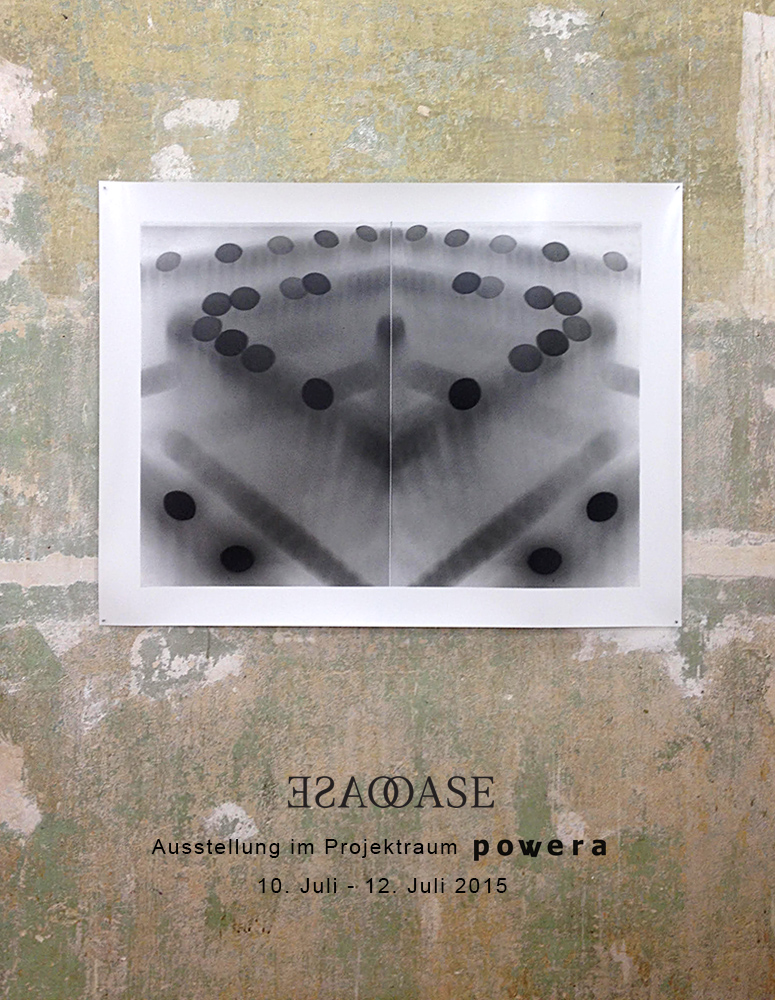
Gleam 10, 70 x 100 cm, Silver Gelatin Print, 2015, Edition of 7 © Csilla Szabo Photography Symmetry is an expression of order and proportionality of individual elements of a whole: we feel the entirety as beautiful and harmonious.
Symmetry as a dualistic structure (our world) is also a universal model of thinking, namely thinking in opposites and poles: light and dark; man and woman; right and left; good and evil; plus and minus; matter and antimatter, just to mention a few examples of polarities. They must always be considered together, because one pole cannot be described without the other, as one side of something symmetrical cannot be understood to the exclusion of other side. A pole cannot be defined for itself, it is a “mutual measure” (symmetros).
An oasis is a place that is defined by its polarity to what surrounds it. It is understood as a desirable spot in the desert, a place of longing, a metaphorical paradise, the opposite of all unspeakable things.
Within what symmetries we are moving today?
Does symmetry provide us with different perspective on the complex structures of everyday life /society?
How do people locate themselves in broken symmetries and asymmetric decay?
Does it inspire a feeling of calm in you, while liberating your spirit?
The striving for development dynamics between symmetry and asymmetry, the negotiation of ratios and proportions in the aesthetic field, as well as questions about their place in our time, span a poetic space: explore these six international artists in the exhibition Symmetry Oasis.
Curated by Enikő Márton, the exhibition in the Project Space povvera exhibits works in various media by Edith Kollath, Chelsea Leventhal, Tobias Löffler, Enikő Márton, Gyula Sági, Csilla Szabó.

